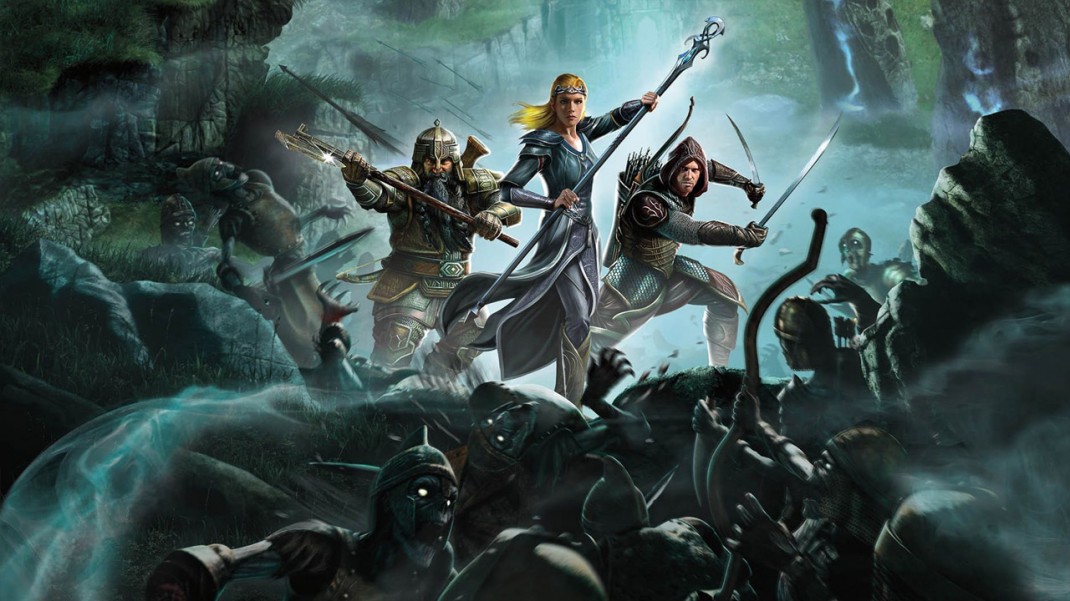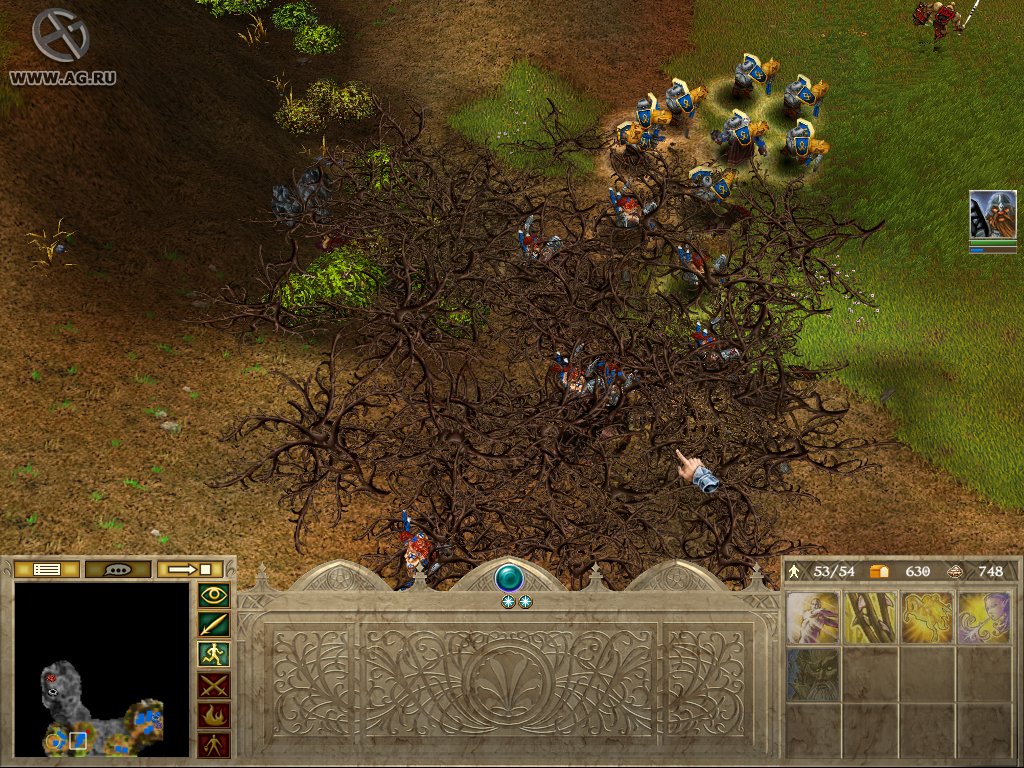War of the Ring | The One Wiki to Rule Them All
War of the Ring
Date
February —
November TA 3019
Place
Middle-earth
Southern theatre:
Gondor
Northern theatre:
Rhovanion
Outcome
Victory for the Free Peoples
- Final destruction of Sauron, the One Ring, and Mordor
- Reunification of Gondor and Arnor as the Reunited Kingdom
- Line of Kings of Arnor and Gondor restored
Sauron and his
servants:
Mordor, Isengard, Dunland, Rhûn, Harad
Corsairs of Umbar, Khand, Dol Guldur,
Orc-occupied Moria,
Orcs of the Misty Mountains
Free Peoples:
Gondor,
Rohan,
Army of the Dead,
Woodland Realm of Mirkwood,
Grey Company,
Kingdom of Dale,
Erebor,
Fangorn Forest,
the Shire,
Rivendell (support),
Great Eagles
Sauron†,
Saruman†,
Witch-king of Angmar†,
Gothmog†,
Mouth of Sauron†
Gandalf† (laterresurrected),
Denethor II†,
Théoden†,
Aragorn II Elessar,
Éomer, Faramir,
Imrahil,
King of the Dead†,
Celeborn, Galadriel,
Thranduil,
Treebeard,
Brand†,
Dáin II Ironfoot†,
Thorin III Stonehelm,
Bard II,
Gwaihir
Vast number of Orcs/Uruks
Unknown number of Easterlings
Unknown number of Haradrim, but more than 18,000
Unknown number of Variags
1 large fleet of Corsairs of Umbar
Unknown number of Trolls
At least 20,000 Men[1]
Unknown number of Elves
Unknown number of Dwarves
Unknown number of Ents
Complete destruction of Sauron’s and Saruman’s armies. All Orcs and Uruk-hai die or flee; evil men subdued
All Orcs and Uruk-hai die or flee; evil men subdued
Severe
So we come to it in the end, […] the great battle of our time, in which many things shall pass away.
—Théoden in The Return of the King, «The Muster of Rohan»
The War of the Ring was a massive conflict brought by the Dark Lord Sauron upon the Free Peoples of Middle-earth for control of the One Ring and dominion over the entire continent. It occurred at the end of the Third Age. Together with the Quest of the Ring, it comprised one of the main overarching plot-lines of The Lord of the Rings saga. The war pitted Orcs, trolls, evil Men and creatures, and others against allied forces of Men of the West, Elves, and Dwarves aided by the Istari, Ents, and Great Eagles of the Misty Mountains.
The war was instigated by Sauron, who had gained back much of his strength since his defeat at the end of the Second Age and who sought the One Ring, the key to regaining his physical form and thus his full power. In the war that ensued, countless thousands of Men, Elves, and Dwarves lost their lives. Following the end of hostilities the final decline of the Elves’ power in Middle-earth began, paralleled by the rise of Men in the West, the restoration of the King of Gondor and Arnor, and the start of the Fourth Age.
In the war that ensued, countless thousands of Men, Elves, and Dwarves lost their lives. Following the end of hostilities the final decline of the Elves’ power in Middle-earth began, paralleled by the rise of Men in the West, the restoration of the King of Gondor and Arnor, and the start of the Fourth Age.
Battles were fought across Middle-earth in Gondor, Rohan, Lothlórien, Mirkwood, at the Lonely Mountain and Dale. These were primarily waged against Sauron’s forces, but Saruman, a third contender, also fielded his own army, which fought battles at the Fords of Isen and Helm’s Deep.
The first full-scale battle fought in the war was the First Battle of the Fords of Isen, while the last was the Battle of Bywater, followed shortly afterward by the deaths of Saruman and Gríma Wormtongue. In the wake of the victory, Aragorn II Elessar was crowned King of Gondor, heralding a final renewal of cooperation between Men, Elves, and Dwarves.
Contents
- 1 Background
- 2 Prelude
- 2.
 1 Gandalf’s role
1 Gandalf’s role
- 2.
- 3 Events
- 3.1 Southern theatre
- 3.1.1 Rohan
- 3.1.2 The Pelennor Fields
- 3.2 Northern theatre
- 3.2.1 Dale and the Lonely Mountain
- 3.2.2 Lothlórien and Mirkwood
- 3.3 The Shire
- 3.1 Southern theatre
- 4 Consequences and legacy
- 5 Known battles
- 6 Portrayal in adaptations
- 6.1 War of the Last Alliance
- 6.2 The beginning
- 6.3 Interlude
- 6.4 The war
- 6.5 Aftermath
- 7 Translations
- 8 References
Background
Sauron had been defeated in the War of the Last Alliance, but because of Isildur’s refusal to destroy the One Ring, he was not entirely vanquished. He was, however, reduced to a formless phantasm. Sauron began plotting his return to power from his stronghold at Dol Guldur. The foundations of Barad-dûr were also not destroyed. Sauron’s spirit wandered the wastelands of Middle-earth for over 1000 years, but he slowly rebuilt his power, taking up residence in disguise as the Necromancer of Dol Guldur. Around TA 1000, the Valar sent Maiar emissaries to Middle-earth to help the free peoples against the growing evil.
Around TA 1000, the Valar sent Maiar emissaries to Middle-earth to help the free peoples against the growing evil.
In the meantime, Sauron’s One Ring was found by two Stoors in the Gladden River. The Hobbit who took it, under its influence, was corrupted as Gollum and eventually retreated to a cave under the Misty Mountains. By the end of the Age, Sauron attempted to gather back all the Rings to augment his power. He took the Nine, but of the Seven he managed to reclaim only three, the last of them being the Ring of Thrór[2] but could not find the One.
Around the time the War began, it is said that the Blue Wizards had gained influence in the East and, thanks to their efforts, Sauron could not manage to gather as much people to his side.
Prelude
- «The Dark Tower had been rebuilt, it was said. From there the power was spreading far and wide, and away far east and south there were wars and growing fear. Orcs were multiplying again in the mountains. Trolls were abroad, no longer dull-witted, but cunning and armed with dreadful weapons. And there were murmured hints of creatures more terrible than all these, but they had no name.«
- —The Fellowship of the Ring, «The Shadow of the Past»
During the Quest of Erebor, the White Council attacked Dol Guldur and the Dark Lord withdrew. However, Sauron returned to his old abode in Mordor to reconstruct Barad-dûr and ten years after the fall of Smaug he sent three Nazgûl to reoccupy Dol Guldur. He declared himself openly in TA 2951. The White Council met for the last time in TA 2953 to discuss the Rings of Power when Saruman reassured them that the One Ring had been lost forever in the Sea. After this, Saruman fortified Isengard, spied on Gandalf, learning thus his interest in the Shire, and started sending his agents around the Shire under the pretense of buying pipe-weed.
All the while, Sauron’s mind was bent on a single thought: the One Ring, which he needed above all else to restore his full might. To that end, he deployed numerous spies across Middle-earth to search for it but the closest he ever came was the capture of an insane, raving Stoor Hobbit, the creature Gollum who had been discovered sneaking about the borders of Mordor and who contained traces of the One Ring’s power. Sauron savagely tortured and interrogated the Stoor relentlessly for weeks, receiving only inane babble in return until finally Gollum blurted out two ungarbled words; ‘Shire’ and ‘Baggins’. Seizing on this, Sauron released the Stoor under the belief that he might of later use and deployed the Nazgûl to find the Shire to track down the One Ring. He was foiled once more however by the machinations of the wizard Gandalf and the One Ring remained lost to him.
Undeterred, Sauron continued to rebuild. His Orc armies continued to grow in Mordor whilst he forged alliances with the Easterlings in the east; the Haradrim and Variags in the south; as well as Dunlendings through his thrall Saruman. Having tracked the Ring to the Elven sanctuary of Rivendell in December, TA 3018, Sauron concluded that his enemies had the Ring and prepared to launch his war to recover it and destroy those that opposed him.
Having tracked the Ring to the Elven sanctuary of Rivendell in December, TA 3018, Sauron concluded that his enemies had the Ring and prepared to launch his war to recover it and destroy those that opposed him.
Sauron began reassembling his forces for the final blow against the hated remnants of Númenor and the Eldar. Armies of Easterlings from Khand and beyond the Sea of Rhûn reinforced Mordor, joined by men from Harad. Orcs, trolls, and other foul beasts were multiplying while Sauron’s servants were searching the Anduin for the One Ring. Meanwhile, Saruman’s use of a palantír caught the Dark Lord’s notice and he used the Ithil-stone to ensnare him, turning him into a useful, yet not wholly trustworthy, minion.
Gandalf’s role
The task of the Wizards was to oppose Sauron, but by the time of the War of the Ring only one remained true to that purpose. Throughout the war Gandalf would prove to be the key element, martialling the Dark Lord’s enemies against him while countering Sauron’s moves, sometimes decades in advance.
Gandalf’s adaptability and aptitude for strategy proved invaluable to his allies during the complicated web of strategy surrounding the War of the Ring. As told in Unfinished Tales, Gandalf had known for quite a while that Sauron’s use of Smaug would virtually guarantee victory over his enemies, laying waste to the remaining strongholds of the Elves. He and the company of Thorin II Oakenshield thus set out to destroy Smaug, and in the process broke the power of the Northern Orcs in the Battle of Five Armies, ensuring the freedom of a mostly defenceless Eriador in the war to come.
Events
Southern theatre
The primary objective of Sauron’s grand wartime strategy was to defeat the strongest of his enemies; Gondor, and to do so he would need to take their capital city and greatest fortress, Minas Tirith. This was no easy task even for Sauron; Gondor was easily the largest, most populous and most powerful kingdom of Men in Middle-earth and, despite its decline and stagnation, could still boast strong military forces. To this end, the war effort of Mordor was focused in the south in and around Gondor’s borderlands, in a strategy of divide and conquer. To keep Gondor’s ally Rohan, on its northern border, from sending aid, Sauron promoted the rise of his puppet Saruman at Isengard to the west of Rohan. Thus Rohan’s forces would be focused in the west trying to stem the tide of Isengard’s attacks and none could be sent to Minas Tirith’s defense. Meanwhile, Sauron sent his allies, the Corsairs of Umbar to attack Gondor’s populous southern coastal fiefdoms, which as a result could send only a fraction of their forces to defend Minas Tirith, while the rest stayed on the coasts preparing for the Corsair assault.
To this end, the war effort of Mordor was focused in the south in and around Gondor’s borderlands, in a strategy of divide and conquer. To keep Gondor’s ally Rohan, on its northern border, from sending aid, Sauron promoted the rise of his puppet Saruman at Isengard to the west of Rohan. Thus Rohan’s forces would be focused in the west trying to stem the tide of Isengard’s attacks and none could be sent to Minas Tirith’s defense. Meanwhile, Sauron sent his allies, the Corsairs of Umbar to attack Gondor’s populous southern coastal fiefdoms, which as a result could send only a fraction of their forces to defend Minas Tirith, while the rest stayed on the coasts preparing for the Corsair assault.
At the apex of Sauron’s incursion into Gondor was the ancient, ruined city of Osgiliath which straddled both sides of the Anduin River and lay right in front of the mountain pass which served as the entrance to the lands of Mordor. The city was defended stoutly by the garrison and Rangers of Ithilien but the defenders were massively outnumbered by the army Sauron would throw against them.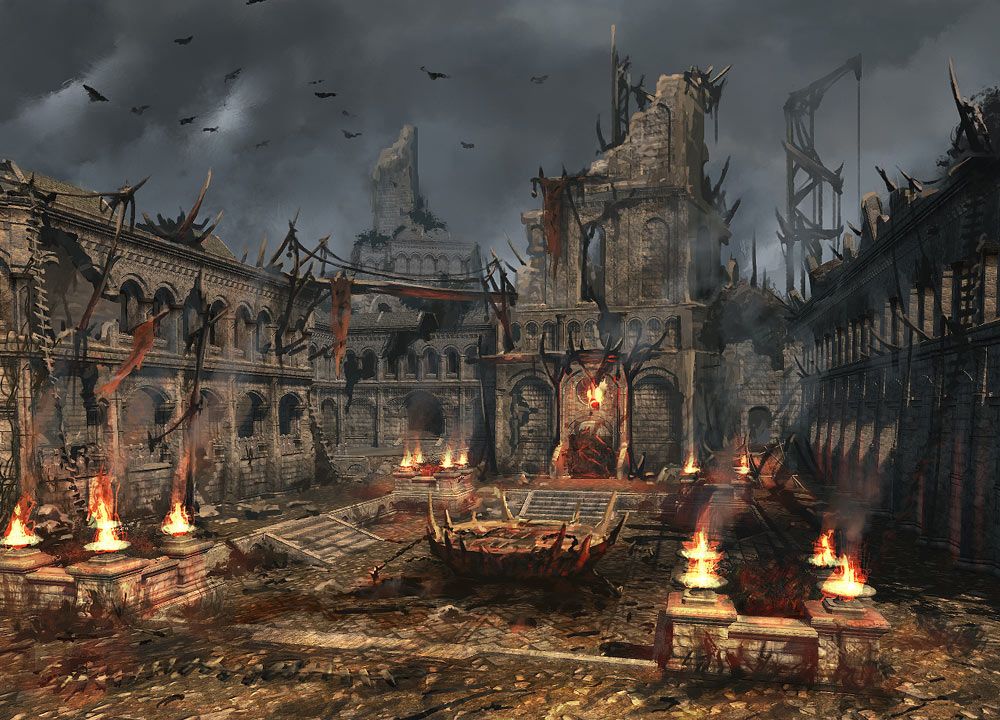
Rohan
- Main article: Battles of the Fords of Isen
The War of the Ring started in Rohan when a detachment of Saruman’s troops crossed the Fords of Isen. Warned by good intelligence reports, Théodred, the son of the King, Théoden, secretly mustered his forces and rode with them to the fords in order to launch a surprise attack against the enemy. On February 23, TA 3019 he attacked the vanguard of the Orc forces marching out of Isengard in the First Battle of the Fords of Isen. The Rohirrim however had misjudged their position and reinforcements were quickly deployed from Isengard by Saruman, forcing Théodred to order a retreat. His forces withdrew to a small island at the Fords of Isen, but they had no time to rest before they were surrounded and in the process, Theodred was killed. Grimbold managed to hold the island, but would not have succeeded if Elfhelm had not come with reinforcements from Helm’s Deep and because the Uruk-hai immediately withdrew following Théodred’s death.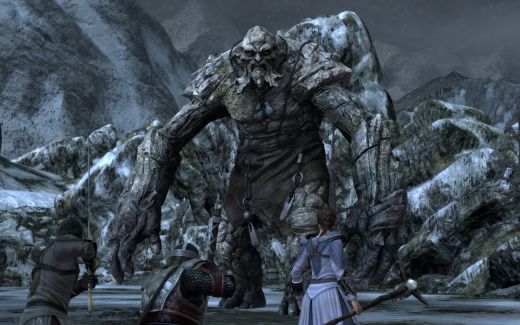 Thus the First Battle of the Fords of Isen ended in a costly victory for the Rohirrim.
Thus the First Battle of the Fords of Isen ended in a costly victory for the Rohirrim.
Now that the Second Marshal of the Mark was dead, Erkenbrand took command of the Westfold. He placed Grimbold and Elfhelm at the Fords. However, they were unable to withstand the forces of Isengard and were outflanked and then surrounded in the Second Battle of the Fords of Isen. Though they successfully broke through the enemy’s lines, they ended up scattered around the Westfold, giving Saruman clear passage into Rohan.
- Main article: Battle of the Hornburg
Meanwhile, Gandalf drove Gríma Wormtongue out of Edoras and went to gather Erkenbrand’s scattered forces, advising King Théoden to move to the stronghold of the Hornburg. The king and his forces arrived unmolested, but soon the fortress was surrounded by Saruman’s troops and attacked in the Battle of the Hornburg. All through the night of March 3rd-4th a combined force of Orcs and Dunlendings besieged the Hornburg, and despite the efforts of the Rohirrim (aided by Aragorn, Legolas, and Gimli) hope appeared lost.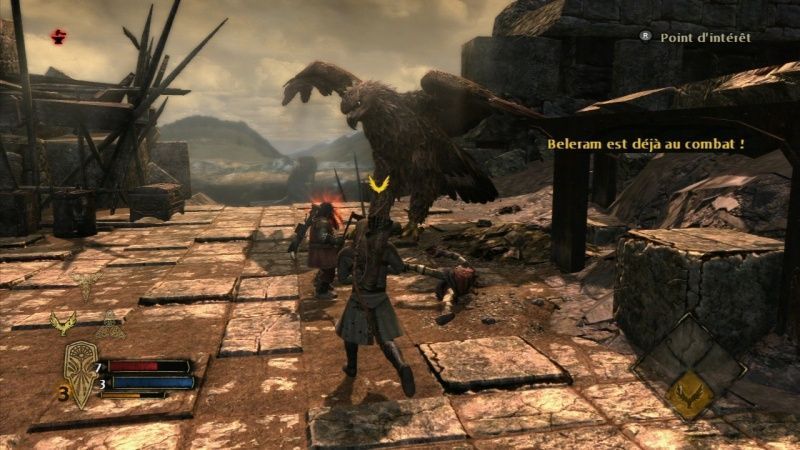 Believing Rohan was lost, Théoden decided to mount a final, suicidal charge against Saruman’s forces. Unexpectedly, however, Gandalf arrived in the nick of time with Erkenbrand and the scattered Rohirrim, along with a forest of Huorns who had been sent to the battle by Treebeard. The Orcs were trapped and utterly annihilated. The Dunlendings were taken captive, however, they were freed after swearing an oath not to again attack Rohan and clearing the battlefield of the dead. The mercy of this act amazed the captives, who had been told by Saruman that the Men of Rohan were cruel and burned their captives alive.
Believing Rohan was lost, Théoden decided to mount a final, suicidal charge against Saruman’s forces. Unexpectedly, however, Gandalf arrived in the nick of time with Erkenbrand and the scattered Rohirrim, along with a forest of Huorns who had been sent to the battle by Treebeard. The Orcs were trapped and utterly annihilated. The Dunlendings were taken captive, however, they were freed after swearing an oath not to again attack Rohan and clearing the battlefield of the dead. The mercy of this act amazed the captives, who had been told by Saruman that the Men of Rohan were cruel and burned their captives alive.
- Main article: Destruction of Isengard
Days before, at an Entmoot in Fangorn Forest, the Ents, furious over the destruction Saruman had wrought upon the forest, decided to march on Isengard. They attacked the fortress and completely obliterated it, save only the impregnable tower of Orthanc. By March 3 the destruction was completed, and the command of Isengard was taken by the Ent Treebeard. At Gandalf’s request, he sent a large herd of Huorns to the Battle of Hornburg, to aid the Rohirrim.
At Gandalf’s request, he sent a large herd of Huorns to the Battle of Hornburg, to aid the Rohirrim.
The Pelennor Fields
- Main article: Battle of Osgiliath
For over 3000 years, the realm of Gondor had held back the threat from the east and south. In time, with multiple assaults co-ordinated by Sauron, the kingdom declined, and the Dark Lord prepared to strike the mortal blow. On June 20 TA 3018 an initial attack was launched that captured the Eastern half of Osgiliath, securing a base from which the assault would be launched the following year. The two most important of Gondor’s outer fortresses were the island citadel of Cair Andros and the western half of the ruined city of Osgiliath. Following the Great Signal from Minas Morgul and the answering signal from Mount Doom, the attack on Osgiliath was the first move of the assault on Gondor. Sauron’s two armies swiftly overwhelmed the defenders of the fortresses, and Faramir was forced to retreat to the Causeway Forts, the last defence against the Morgul forces. Soon these too were destroyed, and only Minas Tirith remained. The defence of these outposts bought vital time however, delaying the arrival of the forces of Mordor at the gates of the White City for nearly two days.
Soon these too were destroyed, and only Minas Tirith remained. The defence of these outposts bought vital time however, delaying the arrival of the forces of Mordor at the gates of the White City for nearly two days.
- Main article: Siege of Gondor
The attack soon began, as the Nazgûl hovered above and spread terror and confusion, and siege towers tried to take the walls. Incendiary missiles were hurled over the city walls of Minas Tirith, starting multiple fires. Such was the terror of the Nazgûl that the morale of the defenders began to collapse, with many abandoning the fight to cower in fear. Led by Gandalf and Imrahil the defense at the Great Gate of Minas Tirith remained stout until the arrival of Grond, which breached the gate. The Lord of the Nazgûl then entered. He was the first and only enemy to do so.
- Main article: Battle of the Pelennor Fields
All seemed lost — until six thousand Rohirrim, under King Théoden’s command, came and broke the siege lines. Still, the battle was in doubt until Aragorn arrived with a large force out of southern Gondor. The joint force of Gondor and Rohan then successfully defeated their enemies after a long day of fighting. This battle resulted in the deaths of the Witch-king of Angmar, King Théoden, and Denethor, Steward of Gondor.
Still, the battle was in doubt until Aragorn arrived with a large force out of southern Gondor. The joint force of Gondor and Rohan then successfully defeated their enemies after a long day of fighting. This battle resulted in the deaths of the Witch-king of Angmar, King Théoden, and Denethor, Steward of Gondor.
- Main article: Battle of the Morannon
The Battle of the Morannon was the final major battle against Sauron in the War of the Ring, fought at the Black Gate of Mordor. The Army of the West, roughly 6,000 strong, led by Aragorn marched on the gate and faced a vastly larger force as a diversionary feint to distract Sauron’s attention from Frodo Baggins and Samwise Gamgee, who were carrying the One Ring through Mordor. It was hoped that Sauron would think Aragorn had the Ring and was now trying to use it to overthrow Mordor. Despite the seemingly impossible odds the Army of the West was eventually victorious, for when the Ring was destroyed, Sauron’s forces fled, surrendered in dismay or were destroyed.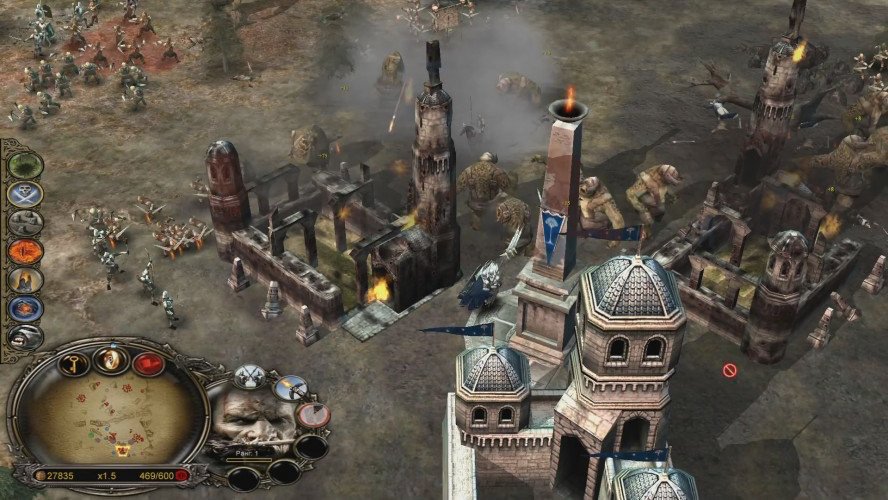
Northern theatre
Whilst Mordor’s central war effort was focused in the south against Gondor, using his outstretched right arm, Sauron concurrently attempted to outflank the lands of the Free Peoples through Rhovanion, using Orcs and his Easterling allies. In this theatre of the war, Sauron’s primary strategic objective was to use the forces at his primary base of operations in the area, Dol Guldur in southern Mirkwood, to defeat the Elven realm of Lothlórien, then pass over the Misty Mountains to take Rivendell and Eriador. However, Dol Guldur also had to deal with the threat of the Elven Woodland Realm of Thranduil, and thus was forced to split the Orc forces between the attack on Lothlórien and the attack on the Woodland Realm.
Sauron would doubtless have used his Easterling allies to attack these realms were it not for the fact that the way west was blocked by the Dwarves of the Lonely Mountain and the Iron Hills and the Men of Dale.
Bridging the gap between the northern and southern theatres of the war was the line of the River Anduin between Lothlórien and Gondor, running along Rohan’s border. Orc armies peeling off from the assault on Lothlórien tried to enter Rohan via this route, while most of its men had left to fight at Minas Tirith, but the Ents of Fangorn forest counterattacked on The Wold and destroyed the invading force.
Orc armies peeling off from the assault on Lothlórien tried to enter Rohan via this route, while most of its men had left to fight at Minas Tirith, but the Ents of Fangorn forest counterattacked on The Wold and destroyed the invading force.
Battle before gate of Erebor
Dale and the Lonely Mountain
- Main article: Battle of Dale
When the war commenced, the Dwarves of Erebor refused to cooperate with Sauron in his hunt for the Ring. So it was that Sauron sent in his legions of Easterlings to attack Dale and destroy the two kingdoms. On March 17 the Easterlings met the armies of the Dwarves of Erebor and the Men of Dale outside the city of Dale. After three days of intense fighting during which time both sides sustained heavy losses, the armies of Dale and the Dwarves were pushed back to the mountain. King Brand of Dale fell before the gate of the Lonely Mountain, and King under the Mountain Dáin II Ironfoot fell after a long defence of Brand’s body.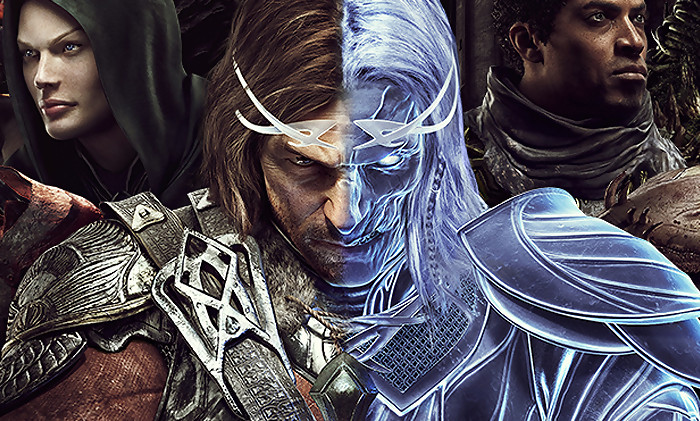 Dale was sacked and its citizenry sought refuge in Erebor. The Easterlings settled down to besiege the Mountain, but were unable to gain entry.
Dale was sacked and its citizenry sought refuge in Erebor. The Easterlings settled down to besiege the Mountain, but were unable to gain entry.
When news spread about the fall of Sauron, the Easterlings became demoralized and retreated, and the sons of Brand and Dáin let their army out of Erebor to break the encirclement.
Lothlórien and Mirkwood
On March 11, Lothlórien was first attacked from Dol Guldur. It was attacked two further times, on March 15 and March 22. When the Dark Lord had fallen, Celeborn led his army out of Lórien, and crossed the Anduin. Dol Guldur was captured and destroyed by Galadriel.
Thranduil of Mirkwood was also attacked from Dol Guldur on March 15 resulting in the long Battle Under the Trees, in which Thranduil’s kinfolk won a hard victory. After the destruction of Dol Guldur, Celeborn met Thranduil on April 6, and as the shadow had passed, they divided Mirkwood and renamed it Eryn Lasgalen.
The Shire
- Main article: Battle of Bywater
After the defeat of the Dark Lord, Saruman used the power of his voice to convince Treebeard to release him from Isengard.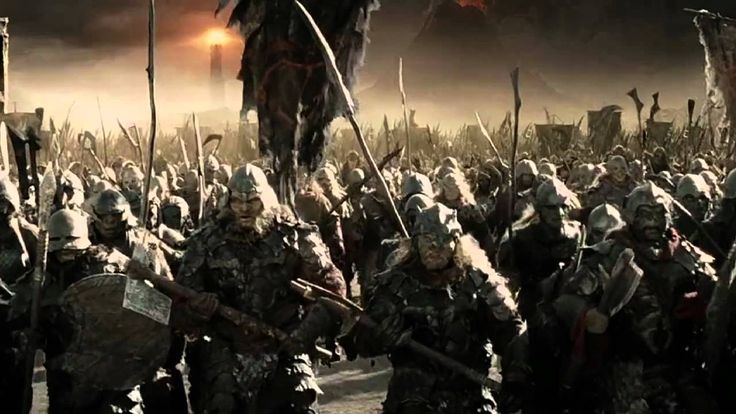 He travelled to the Shire, where he replaced Lotho Sackville-Baggins as the Chief under the name Sharkey. Under his command Ruffian men entered the Shire and ruined it. They were defeated by Hobbits led by Meriadoc Brandybuck and Peregrin Took in the Battle of Bywater on November 3. The Hobbits headed to Hobbiton where Frodo ordered Saruman and Wormtongue to leave the Shire. Wormtongue, however, killed Saruman, before he himself was killed by the Hobbits and their arrows. With the death of the wizard Saruman, the War of the Ring finally ended.
He travelled to the Shire, where he replaced Lotho Sackville-Baggins as the Chief under the name Sharkey. Under his command Ruffian men entered the Shire and ruined it. They were defeated by Hobbits led by Meriadoc Brandybuck and Peregrin Took in the Battle of Bywater on November 3. The Hobbits headed to Hobbiton where Frodo ordered Saruman and Wormtongue to leave the Shire. Wormtongue, however, killed Saruman, before he himself was killed by the Hobbits and their arrows. With the death of the wizard Saruman, the War of the Ring finally ended.
Consequences and legacy
The War of the Ring had great influence on all of the lands of the northwest of Middle-earth. Most importantly it led to the restoration of the Kingdoms of Arnor and Gondor as the Reunited Kingdom, under King Elessar Telcontar. The Steward of Gondor was dead, but he was succeeded by his son Faramir, who kept the office and was given the title Prince of Ithilien.
In Rohan the heir apparent, Théodred, was killed, and, in the Battle of Pelennor Fields, King Théoden died as well. He was succeeded by his nephew Éomer. In the Glittering Caves at the Hornburg, a Dwarven colony was established, and Isengard was given to the Ents, who filled Saruman’s pits and reforested the land, renaming it the Treegarth of Orthanc
He was succeeded by his nephew Éomer. In the Glittering Caves at the Hornburg, a Dwarven colony was established, and Isengard was given to the Ents, who filled Saruman’s pits and reforested the land, renaming it the Treegarth of Orthanc
In Dale, both King Brand and King Dáin II Ironfoot were killed, who were succeeded by their sons Bard II and Thorin III Stonehelm. They sent their emissaries to the crowning of Elessar, and were in alliance with Gondor until their Kingdoms ended.
For the Elves, the final decline had begun. With the destruction of the One Ring, the power of the Three Rings faded, and the kingdoms that had been preserved by their magic began to fade with them. The bearers of the Rings left Middle-earth, and Lórien was eventually abandoned. The Elves of Lothlórien who did not depart over the Sea moved east to the southern third of Mirkwood, below the Narrows, which they named East Lórien. In Eryn Lasgalen however, Thranduil’s rule continued, and they had peace. An Elven colony was also set up by Legolas in Ithilien for a short time. Many of the Elves of Rivendell departed over the Sea, and by Aragorn’s death 120 years later, only the Sons of Elrond, Celeborn and a small household remained.
An Elven colony was also set up by Legolas in Ithilien for a short time. Many of the Elves of Rivendell departed over the Sea, and by Aragorn’s death 120 years later, only the Sons of Elrond, Celeborn and a small household remained.
In the Shire life continued as it had prior to the war. It was declared a free land under the Sceptre of Annúminas, and Men were forbidden to enter it. The Westmarch was added to the Shire by King Elessar in FO 31.
The different races of Men that had served Sauron suffered grievously; much of Harad’s fighting men were annihilated on the Pelennor Fields, slaughtered by the swords of Gondor and the lances of Rohan or drowning in the Anduin river. The Easterlings hastily retreated back to their homelands after Sauron’s fall and fought several territorial wars with King Elessar over lands near the Sea of Rhûn, but ceased to be a major threat.
Once the Fourth Age began, the Elves stopped having an active influence on the affairs of Middle-earth, having started fading away ever since the Third Age.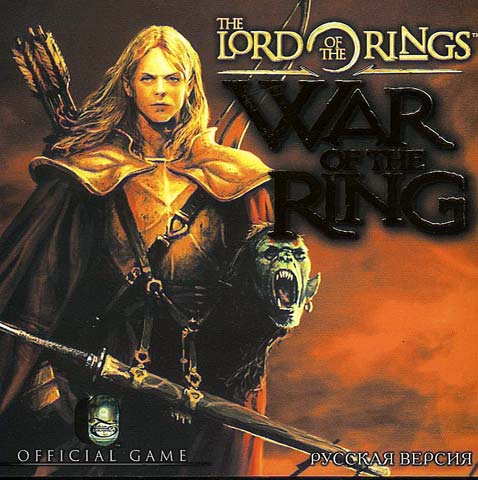 Orcs never became a serious threat again, reduced to small bands of mountain brigands they were never more than a nuisance. All the Nazgûl were killed, with Sauron reduced to a mere shadow of malice. Wars would still be fought by the Reunited Kingdom and Rohan against the Men that had allied with Sauron, the Haradrim and Easterlings.
Orcs never became a serious threat again, reduced to small bands of mountain brigands they were never more than a nuisance. All the Nazgûl were killed, with Sauron reduced to a mere shadow of malice. Wars would still be fought by the Reunited Kingdom and Rohan against the Men that had allied with Sauron, the Haradrim and Easterlings.
Known battles
- Battles of the Fords of Isen
- Destruction of Isengard
- Battle of the Hornburg
- Battle of Osgiliath
- Battle of Pelargir
- Battle of the Pelennor Fields
- Battle of the Black Gate
- Battles of Lórien
- Battle Under the Trees
- Battle of Dol Guldur
- Battle of Dale
- Battle of Bywater
Portrayal in adaptations
The War of the Ring is one of the major wars in The Lord of the Rings trilogy. It was one of the major wars in all of Middle-earth and the main conflict in the film series. It begun with the Attack on Dol Guldur and Battle of Five Armies in TA 2941, which sent the conflict into a 60-year lull during which Sauron rebuilt his power, before erupting with attack on Osgiliath and culminate in Sauron’s ultimate defeat during the Battle of the Black Gate in TA 3002.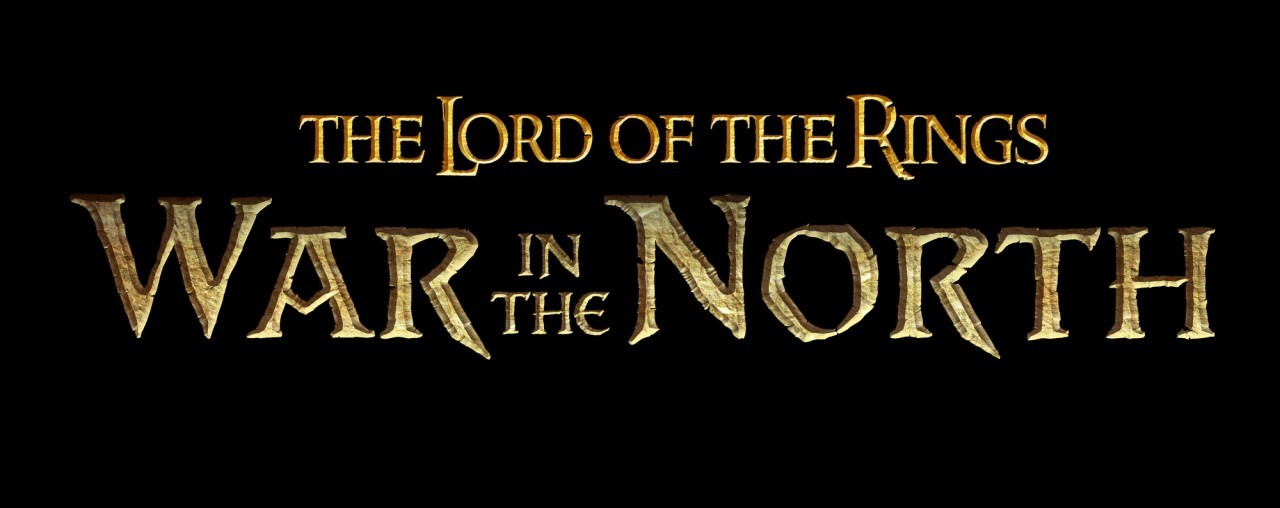
War of the Last Alliance
In the Second Age, the Dark Lord Sauron was challenged by an alliance of Men and Elves (from Númenor and Lindon, respectively). In spite of some Men breaking their oath of allegiance for fear of Sauron, the alliance was successful. Wielding the sword Narsil, Isildur defeated Sauron.
However, because his Ring of Power was not destroyed but lost, Sauron’s spirit endured and his servants — the nine Ringwraiths led by the Witch-king — later returned to harass the kingdoms of Middle-earth.
The beginning
In TA 2940, Gandalf — a member of the White Council — stumbled upon men carrying a message promising payment for the head of the Dwarven exilarch Thorin Oakenshield, who was abroad nearby at the time. With this, Gandalf began to sense an unease as to the continuation of the peace. Worried that «darker minds» will turn towards Erebor — either to secure an alliance with the dragon or to use its wealth and position for evil purposes — he intercepted Thorin and convinced him to undertake Quest of Erebor, which was a quest to reclaim Erebor from the dragon Smaug.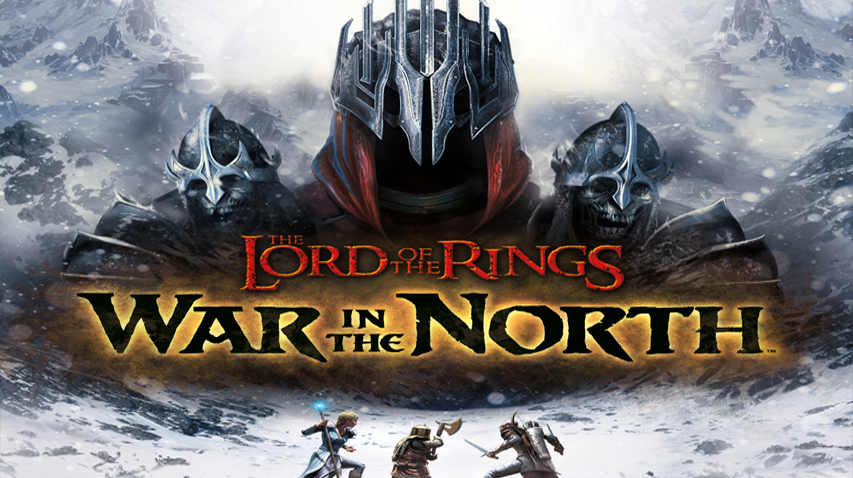 He would later argue that the quest for the Dwarves to reclaim their homeland would Bean that Middle-earth’s armies in the East will be strengthened anger to rid Sauron’s chance of using Smaug in his army. During the Quest, Gandalf noticed further signs of disquiet, which he later reported to the White Council: Trolls have come down from the Ettenmoors and raided a farm. Orcs, astride Gundabad Wargs, attacked the company in the open, along the Great East Road, coming the very borders of Rivendell.
He would later argue that the quest for the Dwarves to reclaim their homeland would Bean that Middle-earth’s armies in the East will be strengthened anger to rid Sauron’s chance of using Smaug in his army. During the Quest, Gandalf noticed further signs of disquiet, which he later reported to the White Council: Trolls have come down from the Ettenmoors and raided a farm. Orcs, astride Gundabad Wargs, attacked the company in the open, along the Great East Road, coming the very borders of Rivendell.
Most importantly, however, a Necromancer had taken up residence in the ruined fortress of Dol Guldur some time before, and his dark magic was spreading a sickness through the Greenwood. Bats and Giant Spiders were abroad and a Morgul Blade, which was known to belong to the Witch-king, was uncovered by Radagast in Dol Guldur. The other members of the council (outside of Galadriel, who shared Gandalf’s innate sense of «something at work») largely dismissed this. Elrond, in particular, in his complacency, said its «hardly a prelude to war. »
»
Further down the road, Gandalf saw further proof of rising evil: Azog has come out of Moria for the first time since his defeat, and payed homage to the Necromancer, rallying more and more Moria Orcs to Dol Guldur. Goblins had multiplied under the Misty Mountains, and Orcs have infested the Wilderland. Unbeknownst to him, hearing its Master’s call, the One Ring — too — was recovered from Gollum, falling into the hand of Bilbo Baggins, a member of Thorin’s company.
All of this compelled the wizard to investigate the High Fells, where he found the tombs opened from the inside. Now fearing that the Necromancer is Sauron himself, he went to Dol Guldur where he discovered that the last Dwarf Ring was harvested by Sauron, who was marshaling a secret army commanded by Azog. He was already in league with Smaug and intended to use him against the realms of the North while using Erebor to secure his reclaiming of the lands of Angmar.
The members of the White Council — informed by Radagast — came to Gandalf’s rescue. Elrond and Saruman face the Ringwraiths and Galadriel banished Sauron to the east. Saruman takes control of the situation, asking that Sauron be left to his care. Sauron and Azog’s army (and a second army led out of Gundabad by Bolg), however, was already en route to the Lonely Mountain and attacked the armies of Elves, Men and Dwarves which were marshaled there for the Siege of Erebor.
Elrond and Saruman face the Ringwraiths and Galadriel banished Sauron to the east. Saruman takes control of the situation, asking that Sauron be left to his care. Sauron and Azog’s army (and a second army led out of Gundabad by Bolg), however, was already en route to the Lonely Mountain and attacked the armies of Elves, Men and Dwarves which were marshaled there for the Siege of Erebor.
The Battle was lost when Azog used it for his own ends, setting a trap for Thorin which ended up costing both their lives during the Skirmish on Ravenhill. With Azog defeated, Bolg slain by Legolas and the Gundabad Army thwarted by Beorn, Sauron had suffered a temporary defeat.
Interlude
In the intervening years, Sauron returned to Mordor and began multiplying Orcs and rebuilding his tower of Barad-dûr. Saruman went to Isengard to keep a watch, but convinced by Sauron’s superiority ended up submitting himself to the Dark Lord.
Gandalf and Legolas joined a young Aragorn in Rivendell. Aragorn later travelled under pseudonym to Rohan, where he rode to war with Thengel, and to Gondor where he served the steward Ecthelion in the fight against Sauron. The Stewards of Gondor kept the forces of Mordor at bay in Ithilien.
Aragorn later travelled under pseudonym to Rohan, where he rode to war with Thengel, and to Gondor where he served the steward Ecthelion in the fight against Sauron. The Stewards of Gondor kept the forces of Mordor at bay in Ithilien.
Meanwhile, the High Elves began leaving for the Grey Havens. Orcs retook Moria from Balin.
The war
Gandalf returned to the Shire from untold ventures against Sauron and his agents. Attending Bilbo’s Farewell Party, he became aware of the corrupting effects of Bilbo’s Ring and compelled the Hobbit to leave it behind for his cousin, Frodo Baggins. He left again to look for answers.
In the quest to hunt for Gollum, Gandalf called upon the Dúnedain Ranger Aragorn (the secret heir of Isildur) to help him track down Gollum in order to learn more of the nature of Bilbo’s Ring. However, Sauron caught him first and extracted Bilbo’s name and whereabouts from him. Sauron launched an attack on the ruins of Osgiliath, which was soon reclaimed by Boromir, son of the Gondorian Steward.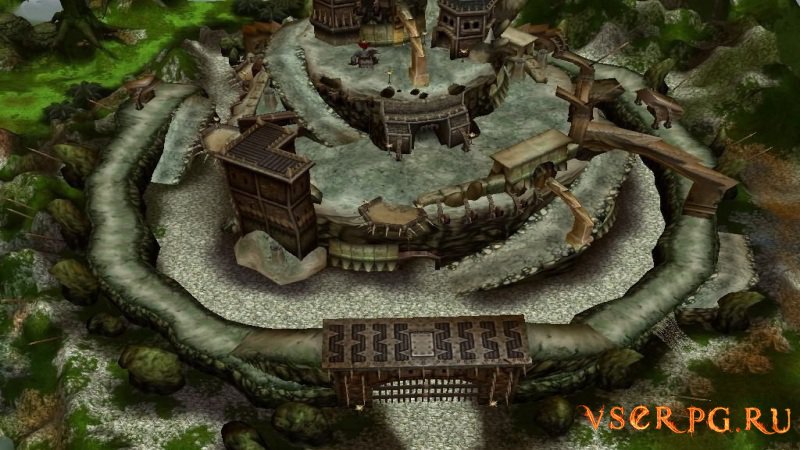
Gandalf tracked Gollum’s trail, reaching the borders of Mordor and learning that Sauron is marshaling an army and rebuilding Barad-dûr. He did not know, however, that Sauron had sent the Nine Ringwraiths towards the Shire. Gandalf then turned to the library of nearby Minas Tirith, finding information that would later help him prove that the Ring is indeed Sauron’s. Returning to the Shire in September, he set Frodo off with the Ring towards Bree while he went to convene with Saruman in Isengard. As Elrond was informed of this, he called upon delegates of all the races of Middle-earth to take coucil in Rivendell. Gandalf was delayed after being held captive by Saruman, bringing news that the wizard is marshaling his own army. Frodo arrived later still, chased by Ringwraiths. Delegates from Erebor, Dale, Gondor and the Woodland Realm convened and the Fellowship of the Ring was formed to help Frodo destroy the Ring in the fires of Mount Doom. This included Gandalf, Aragorn, Boromir of Gondor (secretly sent by his father to bring the Ring to Gondor), Legolas, Gimli, Sam, Merry and Pippin. During the first leg of their quest, the Fellowship took part in the Skirmish in Balin’s Tomb against the Orcs of Moria, and in the Skirmish at Amon Hen against Saruman’s Uruk-hai, where the company was partially disbanded. Lothlórien, too, was attacked by Orcs chasing the company out of Moria, and Frodo even beheld a future in which the War was won by Sauron and the Shire was spoiled by his servants.
During the first leg of their quest, the Fellowship took part in the Skirmish in Balin’s Tomb against the Orcs of Moria, and in the Skirmish at Amon Hen against Saruman’s Uruk-hai, where the company was partially disbanded. Lothlórien, too, was attacked by Orcs chasing the company out of Moria, and Frodo even beheld a future in which the War was won by Sauron and the Shire was spoiled by his servants.
Meanwhile, Sauron used Saruman as a puppet to attack the people of Rohan, while Sauron himself mustered Easterlings and Southrons (some of which were intercepted in Ithilien by Faramir, brother of Boromir) in preparations to launch an assault upon Gondor. Saruman’s hordes of Uruk-hai and disgruntled Dunlendings burned many villages in the Westfold and destroyed a Rohirric army led by prince Théodred (himself mortally wounded) in the Battle of the Fords of Isen. In preparation of a large-scale assault, Saruman also harassed the nearby Ents of Fangorn, burning a portion of their forest to feed the furnaces required to forge armor for his troops.
Against this threat, King Théoden — with Aragorn, Legolas and Gimli at his side — decided to lead his people out of Edoras and into the Fortress of Helm’s Deep. In spite of a Warg attack, they arrived and barricaded themselves against Saruman’s army.
Meanwhile, Osgiliath was attacked again, but the enemy seemed to withdraw when The Ring (taken with Frodo into the ruins of the city) was borne out of it.
In Battle of Helm’s Deep, despite of aid from Lothlorien under Haldir, sent by Elrond, the Rohirrim very nearly lost to Saruman’s forces in Helm’s Deep before Gandalf arrived with reinforcements. Meanwhile, the Ents — egged by Merry and Pippin — were enraged into attacking Isengard itself, eliminating Saruman from the War. Nevertheless, as Gandalf summarized, the great battle for Middle-earth’s future was only about to begin.
With the palantír secured from Saruman, Pippin accidentally saw a glimpse of Sauron’s plan: fearing Aragorn’s impending return to the throne of Gondor, and suspecting that the Ring was taken to its capital of Minas Tirith, Sauron was in a hurry to besiege and raze the city. Indeed, shortly afterwards the Witch-king marshalled an army out of Minas Morgul, led by Gothmog. Feigning to move out of the eastern shore of Osgiliath, the Orcs used boats under cover of night to launch a surprise attack on Faramir’s garrison. While engaging the Gondorian soldiers on the shore, they placed a wooden bridge over the city’s demolished causeway, which allowed them to assault it in large numbers and push Faramir back. Meanwhile, Gandalf used Pippin to light the beacons and call upon Théoden to help in Gondor’s defense.
Indeed, shortly afterwards the Witch-king marshalled an army out of Minas Morgul, led by Gothmog. Feigning to move out of the eastern shore of Osgiliath, the Orcs used boats under cover of night to launch a surprise attack on Faramir’s garrison. While engaging the Gondorian soldiers on the shore, they placed a wooden bridge over the city’s demolished causeway, which allowed them to assault it in large numbers and push Faramir back. Meanwhile, Gandalf used Pippin to light the beacons and call upon Théoden to help in Gondor’s defense.
In Théoden’s camp, Aragorn learnt of the approach of the Corsairs of Umbar, who would tip the scales of the battle even further in favor of Sauron. He was compelled by Elrond to wield Anduril — the reforged Narsil — and recruit the help of the Men of the Mountains (cursed to endure as undead for their lack of fidelity to Isildur), intercepting the corsairs shortly after they sailed past and assailed Pelargir.
In the Battle of Pelennor Fields, Gothmog lays siege to Minas Tirith.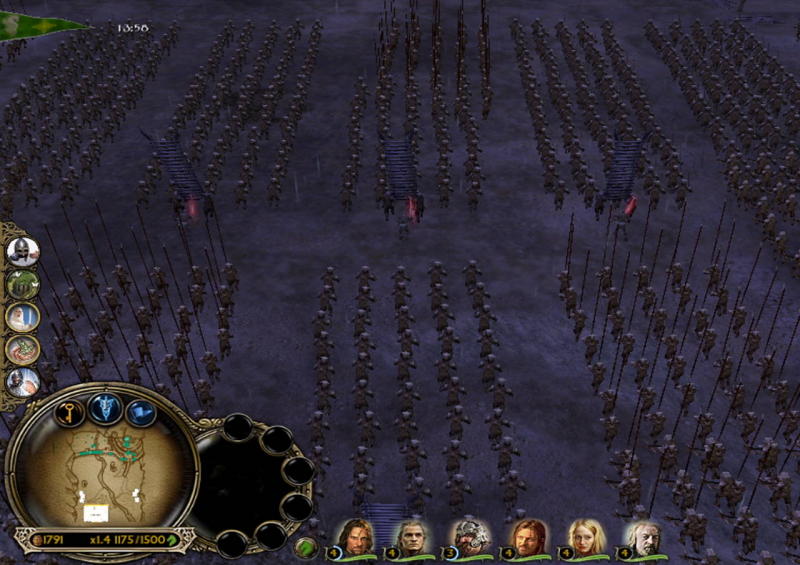 After exchanges of catapult fire being the Orcs and Men, the Nazgûl — now astride winged Fellbeasts — took out Gondor’s trebuchets, allowing for Siege Towers to approach the city walls and engage its defenders. The gate, however, was impregnable for the Orcs standard rams, before Gothmog had Grond wheeled unto the field.
After exchanges of catapult fire being the Orcs and Men, the Nazgûl — now astride winged Fellbeasts — took out Gondor’s trebuchets, allowing for Siege Towers to approach the city walls and engage its defenders. The gate, however, was impregnable for the Orcs standard rams, before Gothmog had Grond wheeled unto the field.
Breaching the city, he ordered his forces to move in and «kill all» in their path. Gandalf led a retreat to the second level of the city and faced the Witch-king before the Rohirrim arrived at the break of dawn. They cut through the Orc ranks, but were matched by the Haradrim and their Mûmakil. Théoden was mortally wounded by the Witch-king’s mount, but his niece Éowyn — having joined the battle in disguise — defended her uncle and, with the aid of Merry, dispatched the Witch-king. Just then, Aragorn arrived with the Army of the Dead on the Corsair ships, tipping the scale of the battle.
However, the war was not over, however, as Sauron still had ten thousand Orcs scattered across Gorgoroth.:strip_icc()/pic1255969.jpg) Aragorn offered to use their remaining forces to draw out this force, giving Frodo a chance to carry the Ring through Mordor and destroy it in Mount Doom.
Aragorn offered to use their remaining forces to draw out this force, giving Frodo a chance to carry the Ring through Mordor and destroy it in Mount Doom.
The plan nearly failed when Frodo and Sam, disguised as Orcs, were marched towards the Black Gate, where the forces of Gondor and Rohan were mustered. The Hobbits managed to sneak out of the mass of Orcs, however, and continued on their trek across Gorgoroth, while the Mouth of Sauron tried to fool Aragorn into thinking Frodo was in fact captured and killed.
The plan was successful in distracting Sauron until Frodo — consumed by the Ring — claimed it to himself. However, the intervention of Gollum who was tracking the Hobbits in an attempt to reclaim his Ring, caused it to fall into the fires of Mount Doom and be destroyed. The army of Mordor was in part destroyed in the ensuing cataclysm and in part fled the horror of it.
Aftermath
After the Battle of the Black Gate, Aragorn was crowned King and married Arwen, daughter of Elrond and the Hobbits return to the Shire, where Sam marries Rosie Cotton.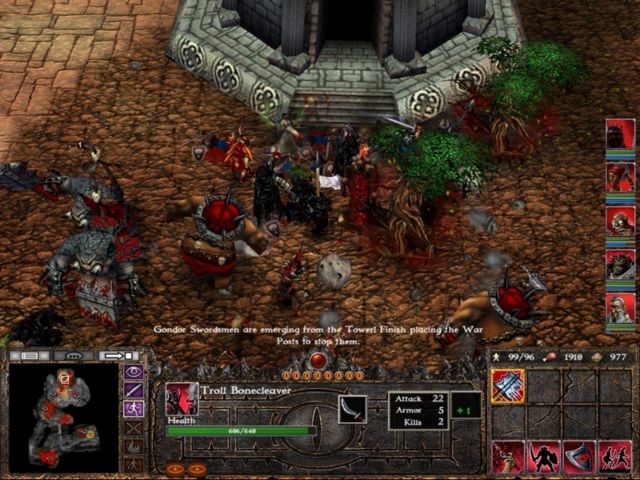
Elrond, Gandalf, Galadriel and Celeborn then depart for the West. The death of Saruman and departure of Gandalf also meant the end of the Order of the Istari, and with Frodo and Bilbo joining the wizard and Elf-Lords, the Ring-bearers too leaving Middle-earth indefinitely.
Translations
| Foreign Language | Translated name |
| Afrikaans | Oorlog van die Ring |
| Albanian | Lufta e Unazës |
| Amharic | የ ሪንግ ጦርነት |
| Arabic | حرب الخاتم |
| Armenian | Պատերազմ ռինգում |
| Azerbaijani | Üzük müharibəsi |
| Basque | Eraztunaren Gerraren |
| Belarusian Cyrillic | Вайна Пярсцёнка |
| Bengali | রিং যুদ্ধের |
| Bosnian | Rat za Prsten |
| Bulgarian Cyrillic | Войната на Пръстена |
| Burmese | လက်စွပ်စစ် |
| Cambodian | សង្គ្រាមនៃចិញ្ចៀន |
| Catalan | Guerra de l’Anell |
| Cebuano | Gubat sa mga Singsing |
| Chichewa | Nkhondo ya Mphete |
| Chinese (Hong Kong) | 魔戒聖戰 |
| Corsican | Guerra di l Anellu |
| Croatian | Rat za Prsten |
| Czech | Válka o Prsten |
| Danish | Ringkrigen |
| Dutch | Oorlog om de Ring |
| Esperanto | Milito de la Ringo |
| Estonian | Sõrmuse Sõda |
| Fijian | Na Ivalu ni na Mama |
| Filipino | Digmaan ng Singsing |
| Finnish | Sormuksen sota |
| French | Guerre de l’Anneau |
| Galician | Guerra do Anel |
| German | Ringkrieg |
| Greek | Πόλεμος του δαχτυλιδιού |
| Haitian Creole | Lagè nan an Bag |
| Hausa | Yaki da Zobe |
| Hawaiian | Kaua o ke Apo |
| Hebrew | מלחמת הטבעת |
| Hindi | रिंग के युद्ध |
| Hungarian | Gyűrűháború |
| Indonesian | Perang cincin |
| Irish Gaelic | Cogadh an Fáinne |
| Italian | Guerra dell’Anello |
| Japanese | 指輪戦争 |
| Kannada | ಉಂಗುರದ ಕದನ |
| Kazakh | Жүзік соғыс (Cyrillic) Jüzik soğıs (Latin) |
| Korean | 반지의 전쟁 |
| Kurdish | Şer yên de Rîngê (Kurmanji) |
| Kyrgyz Cyrillic | Шакектин согуш |
| Laotian | ສົງຄາມຂອງວົງການ |
| Latin | Bellum autem Anulus |
| Latvian | Gredzena karš |
| Lithuanian | Karo Žiedo |
| Luxembourgish | Krich vun de Réng |
| Macedonian Cyrillic | Војната на прстенот |
| Malagasy | Ady ny Peratra |
| Malaysian | Perang Cincin |
| Maltese | Gwerra taċ-ċirku |
| Marathi | रिंग युद्ध |
| Maori | Whawhai o te Whakakai |
| Mongolian Cyrillic | Цагираган дайн |
| Nepalese | रिंग युद्ध |
| Norwegian | Krigen om Ringen |
| Occitan | Guèrra de l’Anèl |
| Pashto | د حلقوي جګړې |
| Persian | جنگ حلقه |
| Polish | Wojna o Pierścień |
| Portuguese | Guerra do anel |
| Punjabi | ਰਿੰਗ ਦੀ ਲੜਾਈ |
| Querétaro Otomi | Ar hñäki jar anillo |
| Romanian | Războiul Inelului |
| Russian | Война Кольца |
| Scottish Gaelic | Cogadh na Fàinne |
| Serbian | Рат Прстенова (Cyrillic) Rat Prstenova (Latin) |
| Sinhalese | මුද්ද යුද්ධය |
| Slovak | Vojna o Prsteň |
| Slovenian | Prstana vojna |
| Spanish | Guerra del Anillo |
| Swahili | Vita ya Gonga |
| Swedish | Ringens Krig |
| Tahitian | Tamai o te tapea Rima |
| Tamil | ரிங் போர் |
| Tatar | боҗра сугышы |
| Telugu | రింగ్ యుద్ధం |
| Thai | สงครามแหวน |
| Turkish | Yüzük Savaşı |
| Turkmen | Halkanyň Uruş |
| Ukrainian Cyrillic | Війна персня |
| Urdu | انگوٹی کی جنگ |
| Uzbek | Узук уруш (Cyrillic) Uzuk urush (Latin) |
| Vietnamese | Cuộc Nhẫn Chiến |
| Welsh | Rhyfel y Fodrwy |
| Yiddish | מלחמה פון די רינג |
| Xhosa | Kwimfazwe Khonkcweni |
References
- ↑ The History of Middle-earth, Vol.
 VIII The War of the Ring, pg. 249, «…somewhat short of ten thousand but in that count I reckon only men well-horsed, fully armed…As many again there are on foot…»
VIII The War of the Ring, pg. 249, «…somewhat short of ten thousand but in that count I reckon only men well-horsed, fully armed…As many again there are on foot…» - ↑ The Lord of the Rings, The Fellowship of the Ring, «The Shadow of the Past» — «the Nine [Sauron] has gathered to himself; the Seven also, or else they are destroyed.»
- ↑ Unfinished Tales, «The Quest of Erebor»
- ↑ The Hobbit, «Riddles in the Dark»
- ↑ The History of Middle-earth, Vol. XII. The Peoples of Middle-earth, «XIII. Last Writings»
- ↑ The Lord of the Rings, Appendix B, «The Third Age»
War of the Ring | The One Wiki to Rule Them All
War of the Ring
Date
February —
November TA 3019
Place
Middle-earth
Southern theatre:
Gondor
Northern theatre:
Rhovanion
Outcome
Victory for the Free Peoples
- Final destruction of Sauron, the One Ring, and Mordor
- Reunification of Gondor and Arnor as the Reunited Kingdom
- Line of Kings of Arnor and Gondor restored
Sauron and his
servants:
Mordor, Isengard, Dunland, Rhûn, Harad
Corsairs of Umbar, Khand, Dol Guldur,
Orc-occupied Moria,
Orcs of the Misty Mountains
Free Peoples:
Gondor,
Rohan,
Army of the Dead,
Woodland Realm of Mirkwood,
Lothlórien,
Grey Company,
Kingdom of Dale,
Erebor,
Fangorn Forest,
the Shire,
Rivendell (support),
Great Eagles
Sauron†,
Saruman†,
Witch-king of Angmar†,
Gothmog†,
Mouth of Sauron†
Gandalf† (laterresurrected),
Denethor II†,
Théoden†,
Aragorn II Elessar,
Éomer, Faramir,
Imrahil,
King of the Dead†,
Celeborn, Galadriel,
Thranduil,
Treebeard,
Brand†,
Dáin II Ironfoot†,
Thorin III Stonehelm,
Bard II,
Gwaihir
Vast number of Orcs/Uruks
Unknown number of Easterlings
Unknown number of Haradrim, but more than 18,000
Unknown number of Variags
1 large fleet of Corsairs of Umbar
Unknown number of Trolls
At least 20,000 Men[1]
Unknown number of Elves
Unknown number of Dwarves
Unknown number of Great Eagles
Unknown number of Ents
Complete destruction of Sauron’s and Saruman’s armies. All Orcs and Uruk-hai die or flee; evil men subdued
All Orcs and Uruk-hai die or flee; evil men subdued
Severe
So we come to it in the end, […] the great battle of our time, in which many things shall pass away.
—Théoden in The Return of the King, «The Muster of Rohan»
The War of the Ring was a massive conflict brought by the Dark Lord Sauron upon the Free Peoples of Middle-earth for control of the One Ring and dominion over the entire continent. It occurred at the end of the Third Age. Together with the Quest of the Ring, it comprised one of the main overarching plot-lines of The Lord of the Rings saga. The war pitted Orcs, trolls, evil Men and creatures, and others against allied forces of Men of the West, Elves, and Dwarves aided by the Istari, Ents, and Great Eagles of the Misty Mountains.
The war was instigated by Sauron, who had gained back much of his strength since his defeat at the end of the Second Age and who sought the One Ring, the key to regaining his physical form and thus his full power. In the war that ensued, countless thousands of Men, Elves, and Dwarves lost their lives. Following the end of hostilities the final decline of the Elves’ power in Middle-earth began, paralleled by the rise of Men in the West, the restoration of the King of Gondor and Arnor, and the start of the Fourth Age.
In the war that ensued, countless thousands of Men, Elves, and Dwarves lost their lives. Following the end of hostilities the final decline of the Elves’ power in Middle-earth began, paralleled by the rise of Men in the West, the restoration of the King of Gondor and Arnor, and the start of the Fourth Age.
Battles were fought across Middle-earth in Gondor, Rohan, Lothlórien, Mirkwood, at the Lonely Mountain and Dale. These were primarily waged against Sauron’s forces, but Saruman, a third contender, also fielded his own army, which fought battles at the Fords of Isen and Helm’s Deep.
The first full-scale battle fought in the war was the First Battle of the Fords of Isen, while the last was the Battle of Bywater, followed shortly afterward by the deaths of Saruman and Gríma Wormtongue. In the wake of the victory, Aragorn II Elessar was crowned King of Gondor, heralding a final renewal of cooperation between Men, Elves, and Dwarves.
Contents
- 1 Background
- 2 Prelude
- 2.
 1 Gandalf’s role
1 Gandalf’s role
- 2.
- 3 Events
- 3.1 Southern theatre
- 3.1.1 Rohan
- 3.1.2 The Pelennor Fields
- 3.2 Northern theatre
- 3.2.1 Dale and the Lonely Mountain
- 3.2.2 Lothlórien and Mirkwood
- 3.3 The Shire
- 3.1 Southern theatre
- 4 Consequences and legacy
- 5 Known battles
- 6 Portrayal in adaptations
- 6.1 War of the Last Alliance
- 6.2 The beginning
- 6.3 Interlude
- 6.4 The war
- 6.5 Aftermath
- 7 Translations
- 8 References
Background
Sauron had been defeated in the War of the Last Alliance, but because of Isildur’s refusal to destroy the One Ring, he was not entirely vanquished. He was, however, reduced to a formless phantasm. Sauron began plotting his return to power from his stronghold at Dol Guldur. The foundations of Barad-dûr were also not destroyed. Sauron’s spirit wandered the wastelands of Middle-earth for over 1000 years, but he slowly rebuilt his power, taking up residence in disguise as the Necromancer of Dol Guldur.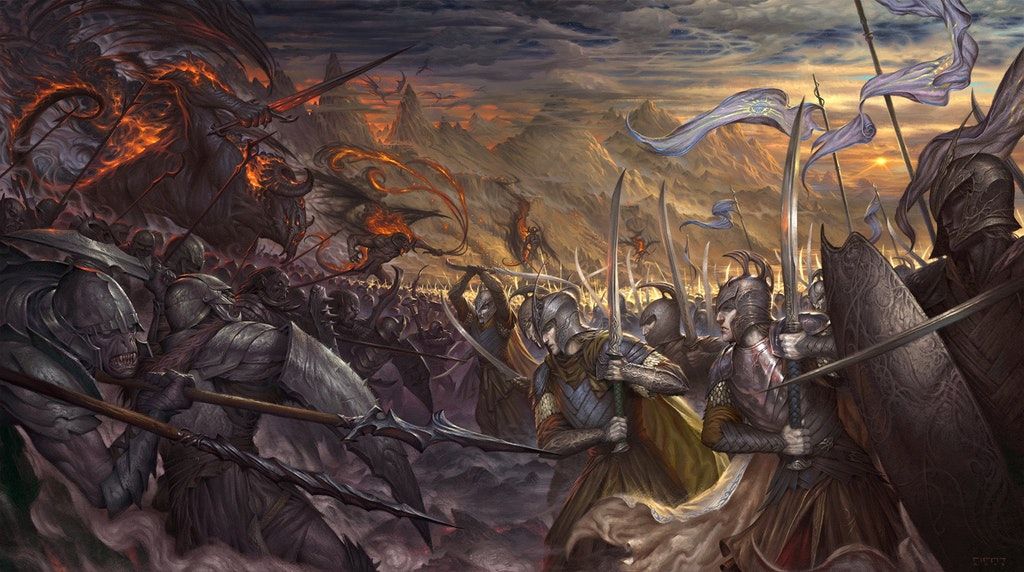 Around TA 1000, the Valar sent Maiar emissaries to Middle-earth to help the free peoples against the growing evil.
Around TA 1000, the Valar sent Maiar emissaries to Middle-earth to help the free peoples against the growing evil.
Indeed, Orcs and other wicked things were multiplying and the Witch-king from his fortress in Angmar waged unending war against Arnor. Moria and Minas Ithil fell and were abandoned, among other battles, plagues, and catastrophes which ended the kingdoms of Arnor and the Royal line of Gondor. Not yet strong enough to challenge the White Council, Sauron fled from Dol Guldur to escape detection by Gandalf, allowing for four centuries of peace.
In the meantime, Sauron’s One Ring was found by two Stoors in the Gladden River. The Hobbit who took it, under its influence, was corrupted as Gollum and eventually retreated to a cave under the Misty Mountains. By the end of the Age, Sauron attempted to gather back all the Rings to augment his power. He took the Nine, but of the Seven he managed to reclaim only three, the last of them being the Ring of Thrór[2] but could not find the One.
Gandalf was concerned about the weak state of the north. Smaug the dragon had destroyed both the Kingdom under the Mountain and the town of Dale. About Erebor was a desolation which Sauron might use to regain the northern passes in the mountains and the old lands of Angmar, not to mention the devastating effect of a living dragon in the Enemy’s force. Gandalf, seeing no hope in Thorin II Oakenshield’s plans of battle and war against Smaug, persuaded him that he should go secretly to Erebor to reclaim its treasure, and to take with him Bilbo Baggins of the Shire.[3] Smaug was killed by Bard, Erebor was retaken, and most importantly, the kingdoms of Erebor and Dale were re-established. In a small incident along the way, the One Ring was lost by Gollum and wound up in Bilbo’s hands.[4]
Around the time the War began, it is said that the Blue Wizards had gained influence in the East and, thanks to their efforts, Sauron could not manage to gather as much people to his side. [5]
[5]
Prelude
- «The Dark Tower had been rebuilt, it was said. From there the power was spreading far and wide, and away far east and south there were wars and growing fear. Orcs were multiplying again in the mountains. Trolls were abroad, no longer dull-witted, but cunning and armed with dreadful weapons. And there were murmured hints of creatures more terrible than all these, but they had no name.«
- —The Fellowship of the Ring, «The Shadow of the Past»
During the Quest of Erebor, the White Council attacked Dol Guldur and the Dark Lord withdrew. However, Sauron returned to his old abode in Mordor to reconstruct Barad-dûr and ten years after the fall of Smaug he sent three Nazgûl to reoccupy Dol Guldur. He declared himself openly in TA 2951. The White Council met for the last time in TA 2953 to discuss the Rings of Power when Saruman reassured them that the One Ring had been lost forever in the Sea. After this, Saruman fortified Isengard, spied on Gandalf, learning thus his interest in the Shire, and started sending his agents around the Shire under the pretense of buying pipe-weed. [6]
[6]
All the while, Sauron’s mind was bent on a single thought: the One Ring, which he needed above all else to restore his full might. To that end, he deployed numerous spies across Middle-earth to search for it but the closest he ever came was the capture of an insane, raving Stoor Hobbit, the creature Gollum who had been discovered sneaking about the borders of Mordor and who contained traces of the One Ring’s power. Sauron savagely tortured and interrogated the Stoor relentlessly for weeks, receiving only inane babble in return until finally Gollum blurted out two ungarbled words; ‘Shire’ and ‘Baggins’. Seizing on this, Sauron released the Stoor under the belief that he might of later use and deployed the Nazgûl to find the Shire to track down the One Ring. He was foiled once more however by the machinations of the wizard Gandalf and the One Ring remained lost to him.
Undeterred, Sauron continued to rebuild. His Orc armies continued to grow in Mordor whilst he forged alliances with the Easterlings in the east; the Haradrim and Variags in the south; as well as Dunlendings through his thrall Saruman. Having tracked the Ring to the Elven sanctuary of Rivendell in December, TA 3018, Sauron concluded that his enemies had the Ring and prepared to launch his war to recover it and destroy those that opposed him.
Having tracked the Ring to the Elven sanctuary of Rivendell in December, TA 3018, Sauron concluded that his enemies had the Ring and prepared to launch his war to recover it and destroy those that opposed him.
Sauron began reassembling his forces for the final blow against the hated remnants of Númenor and the Eldar. Armies of Easterlings from Khand and beyond the Sea of Rhûn reinforced Mordor, joined by men from Harad. Orcs, trolls, and other foul beasts were multiplying while Sauron’s servants were searching the Anduin for the One Ring. Meanwhile, Saruman’s use of a palantír caught the Dark Lord’s notice and he used the Ithil-stone to ensnare him, turning him into a useful, yet not wholly trustworthy, minion.
Gandalf’s role
The task of the Wizards was to oppose Sauron, but by the time of the War of the Ring only one remained true to that purpose. Throughout the war Gandalf would prove to be the key element, martialling the Dark Lord’s enemies against him while countering Sauron’s moves, sometimes decades in advance.
Gandalf’s adaptability and aptitude for strategy proved invaluable to his allies during the complicated web of strategy surrounding the War of the Ring. As told in Unfinished Tales, Gandalf had known for quite a while that Sauron’s use of Smaug would virtually guarantee victory over his enemies, laying waste to the remaining strongholds of the Elves. He and the company of Thorin II Oakenshield thus set out to destroy Smaug, and in the process broke the power of the Northern Orcs in the Battle of Five Armies, ensuring the freedom of a mostly defenceless Eriador in the war to come.
Events
Southern theatre
The primary objective of Sauron’s grand wartime strategy was to defeat the strongest of his enemies; Gondor, and to do so he would need to take their capital city and greatest fortress, Minas Tirith. This was no easy task even for Sauron; Gondor was easily the largest, most populous and most powerful kingdom of Men in Middle-earth and, despite its decline and stagnation, could still boast strong military forces.:strip_icc()/pic1848701.jpg) To this end, the war effort of Mordor was focused in the south in and around Gondor’s borderlands, in a strategy of divide and conquer. To keep Gondor’s ally Rohan, on its northern border, from sending aid, Sauron promoted the rise of his puppet Saruman at Isengard to the west of Rohan. Thus Rohan’s forces would be focused in the west trying to stem the tide of Isengard’s attacks and none could be sent to Minas Tirith’s defense. Meanwhile, Sauron sent his allies, the Corsairs of Umbar to attack Gondor’s populous southern coastal fiefdoms, which as a result could send only a fraction of their forces to defend Minas Tirith, while the rest stayed on the coasts preparing for the Corsair assault.
To this end, the war effort of Mordor was focused in the south in and around Gondor’s borderlands, in a strategy of divide and conquer. To keep Gondor’s ally Rohan, on its northern border, from sending aid, Sauron promoted the rise of his puppet Saruman at Isengard to the west of Rohan. Thus Rohan’s forces would be focused in the west trying to stem the tide of Isengard’s attacks and none could be sent to Minas Tirith’s defense. Meanwhile, Sauron sent his allies, the Corsairs of Umbar to attack Gondor’s populous southern coastal fiefdoms, which as a result could send only a fraction of their forces to defend Minas Tirith, while the rest stayed on the coasts preparing for the Corsair assault.
At the apex of Sauron’s incursion into Gondor was the ancient, ruined city of Osgiliath which straddled both sides of the Anduin River and lay right in front of the mountain pass which served as the entrance to the lands of Mordor. The city was defended stoutly by the garrison and Rangers of Ithilien but the defenders were massively outnumbered by the army Sauron would throw against them.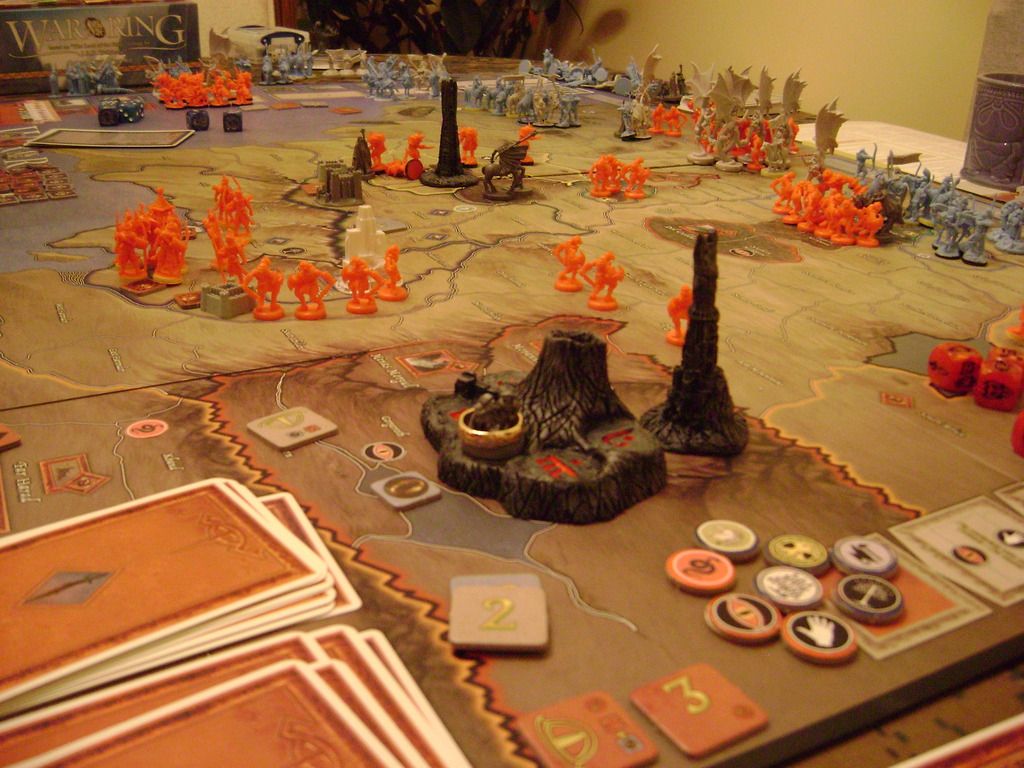
Rohan
- Main article: Battles of the Fords of Isen
The War of the Ring started in Rohan when a detachment of Saruman’s troops crossed the Fords of Isen. Warned by good intelligence reports, Théodred, the son of the King, Théoden, secretly mustered his forces and rode with them to the fords in order to launch a surprise attack against the enemy. On February 23, TA 3019 he attacked the vanguard of the Orc forces marching out of Isengard in the First Battle of the Fords of Isen. The Rohirrim however had misjudged their position and reinforcements were quickly deployed from Isengard by Saruman, forcing Théodred to order a retreat. His forces withdrew to a small island at the Fords of Isen, but they had no time to rest before they were surrounded and in the process, Theodred was killed. Grimbold managed to hold the island, but would not have succeeded if Elfhelm had not come with reinforcements from Helm’s Deep and because the Uruk-hai immediately withdrew following Théodred’s death.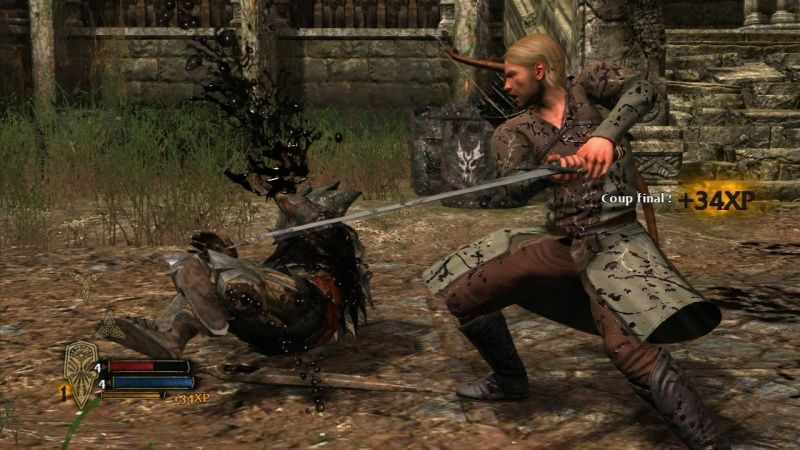 Thus the First Battle of the Fords of Isen ended in a costly victory for the Rohirrim.
Thus the First Battle of the Fords of Isen ended in a costly victory for the Rohirrim.
Now that the Second Marshal of the Mark was dead, Erkenbrand took command of the Westfold. He placed Grimbold and Elfhelm at the Fords. However, they were unable to withstand the forces of Isengard and were outflanked and then surrounded in the Second Battle of the Fords of Isen. Though they successfully broke through the enemy’s lines, they ended up scattered around the Westfold, giving Saruman clear passage into Rohan.
- Main article: Battle of the Hornburg
Meanwhile, Gandalf drove Gríma Wormtongue out of Edoras and went to gather Erkenbrand’s scattered forces, advising King Théoden to move to the stronghold of the Hornburg. The king and his forces arrived unmolested, but soon the fortress was surrounded by Saruman’s troops and attacked in the Battle of the Hornburg. All through the night of March 3rd-4th a combined force of Orcs and Dunlendings besieged the Hornburg, and despite the efforts of the Rohirrim (aided by Aragorn, Legolas, and Gimli) hope appeared lost. Believing Rohan was lost, Théoden decided to mount a final, suicidal charge against Saruman’s forces. Unexpectedly, however, Gandalf arrived in the nick of time with Erkenbrand and the scattered Rohirrim, along with a forest of Huorns who had been sent to the battle by Treebeard. The Orcs were trapped and utterly annihilated. The Dunlendings were taken captive, however, they were freed after swearing an oath not to again attack Rohan and clearing the battlefield of the dead. The mercy of this act amazed the captives, who had been told by Saruman that the Men of Rohan were cruel and burned their captives alive.
Believing Rohan was lost, Théoden decided to mount a final, suicidal charge against Saruman’s forces. Unexpectedly, however, Gandalf arrived in the nick of time with Erkenbrand and the scattered Rohirrim, along with a forest of Huorns who had been sent to the battle by Treebeard. The Orcs were trapped and utterly annihilated. The Dunlendings were taken captive, however, they were freed after swearing an oath not to again attack Rohan and clearing the battlefield of the dead. The mercy of this act amazed the captives, who had been told by Saruman that the Men of Rohan were cruel and burned their captives alive.
- Main article: Destruction of Isengard
Days before, at an Entmoot in Fangorn Forest, the Ents, furious over the destruction Saruman had wrought upon the forest, decided to march on Isengard. They attacked the fortress and completely obliterated it, save only the impregnable tower of Orthanc. By March 3 the destruction was completed, and the command of Isengard was taken by the Ent Treebeard. At Gandalf’s request, he sent a large herd of Huorns to the Battle of Hornburg, to aid the Rohirrim.
At Gandalf’s request, he sent a large herd of Huorns to the Battle of Hornburg, to aid the Rohirrim.
The Pelennor Fields
- Main article: Battle of Osgiliath
For over 3000 years, the realm of Gondor had held back the threat from the east and south. In time, with multiple assaults co-ordinated by Sauron, the kingdom declined, and the Dark Lord prepared to strike the mortal blow. On June 20 TA 3018 an initial attack was launched that captured the Eastern half of Osgiliath, securing a base from which the assault would be launched the following year. The two most important of Gondor’s outer fortresses were the island citadel of Cair Andros and the western half of the ruined city of Osgiliath. Following the Great Signal from Minas Morgul and the answering signal from Mount Doom, the attack on Osgiliath was the first move of the assault on Gondor. Sauron’s two armies swiftly overwhelmed the defenders of the fortresses, and Faramir was forced to retreat to the Causeway Forts, the last defence against the Morgul forces.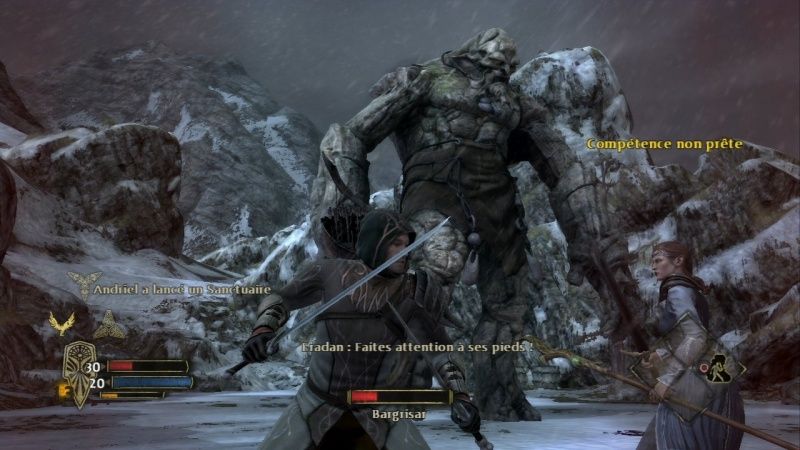 Soon these too were destroyed, and only Minas Tirith remained. The defence of these outposts bought vital time however, delaying the arrival of the forces of Mordor at the gates of the White City for nearly two days.
Soon these too were destroyed, and only Minas Tirith remained. The defence of these outposts bought vital time however, delaying the arrival of the forces of Mordor at the gates of the White City for nearly two days.
- Main article: Siege of Gondor
The attack soon began, as the Nazgûl hovered above and spread terror and confusion, and siege towers tried to take the walls. Incendiary missiles were hurled over the city walls of Minas Tirith, starting multiple fires. Such was the terror of the Nazgûl that the morale of the defenders began to collapse, with many abandoning the fight to cower in fear. Led by Gandalf and Imrahil the defense at the Great Gate of Minas Tirith remained stout until the arrival of Grond, which breached the gate. The Lord of the Nazgûl then entered. He was the first and only enemy to do so.
- Main article: Battle of the Pelennor Fields
All seemed lost — until six thousand Rohirrim, under King Théoden’s command, came and broke the siege lines. Still, the battle was in doubt until Aragorn arrived with a large force out of southern Gondor. The joint force of Gondor and Rohan then successfully defeated their enemies after a long day of fighting. This battle resulted in the deaths of the Witch-king of Angmar, King Théoden, and Denethor, Steward of Gondor.
Still, the battle was in doubt until Aragorn arrived with a large force out of southern Gondor. The joint force of Gondor and Rohan then successfully defeated their enemies after a long day of fighting. This battle resulted in the deaths of the Witch-king of Angmar, King Théoden, and Denethor, Steward of Gondor.
- Main article: Battle of the Morannon
The Battle of the Morannon was the final major battle against Sauron in the War of the Ring, fought at the Black Gate of Mordor. The Army of the West, roughly 6,000 strong, led by Aragorn marched on the gate and faced a vastly larger force as a diversionary feint to distract Sauron’s attention from Frodo Baggins and Samwise Gamgee, who were carrying the One Ring through Mordor. It was hoped that Sauron would think Aragorn had the Ring and was now trying to use it to overthrow Mordor. Despite the seemingly impossible odds the Army of the West was eventually victorious, for when the Ring was destroyed, Sauron’s forces fled, surrendered in dismay or were destroyed.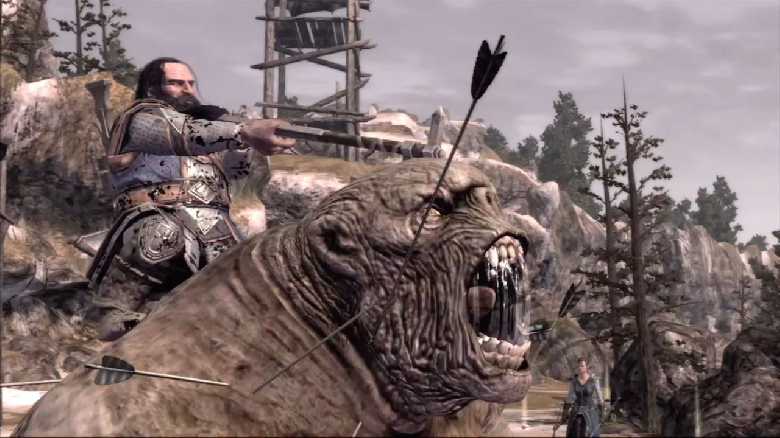
Northern theatre
Whilst Mordor’s central war effort was focused in the south against Gondor, using his outstretched right arm, Sauron concurrently attempted to outflank the lands of the Free Peoples through Rhovanion, using Orcs and his Easterling allies. In this theatre of the war, Sauron’s primary strategic objective was to use the forces at his primary base of operations in the area, Dol Guldur in southern Mirkwood, to defeat the Elven realm of Lothlórien, then pass over the Misty Mountains to take Rivendell and Eriador. However, Dol Guldur also had to deal with the threat of the Elven Woodland Realm of Thranduil, and thus was forced to split the Orc forces between the attack on Lothlórien and the attack on the Woodland Realm.
Sauron would doubtless have used his Easterling allies to attack these realms were it not for the fact that the way west was blocked by the Dwarves of the Lonely Mountain and the Iron Hills and the Men of Dale.
Bridging the gap between the northern and southern theatres of the war was the line of the River Anduin between Lothlórien and Gondor, running along Rohan’s border. Orc armies peeling off from the assault on Lothlórien tried to enter Rohan via this route, while most of its men had left to fight at Minas Tirith, but the Ents of Fangorn forest counterattacked on The Wold and destroyed the invading force.
Orc armies peeling off from the assault on Lothlórien tried to enter Rohan via this route, while most of its men had left to fight at Minas Tirith, but the Ents of Fangorn forest counterattacked on The Wold and destroyed the invading force.
Battle before gate of Erebor
Dale and the Lonely Mountain
- Main article: Battle of Dale
When the war commenced, the Dwarves of Erebor refused to cooperate with Sauron in his hunt for the Ring. So it was that Sauron sent in his legions of Easterlings to attack Dale and destroy the two kingdoms. On March 17 the Easterlings met the armies of the Dwarves of Erebor and the Men of Dale outside the city of Dale. After three days of intense fighting during which time both sides sustained heavy losses, the armies of Dale and the Dwarves were pushed back to the mountain. King Brand of Dale fell before the gate of the Lonely Mountain, and King under the Mountain Dáin II Ironfoot fell after a long defence of Brand’s body.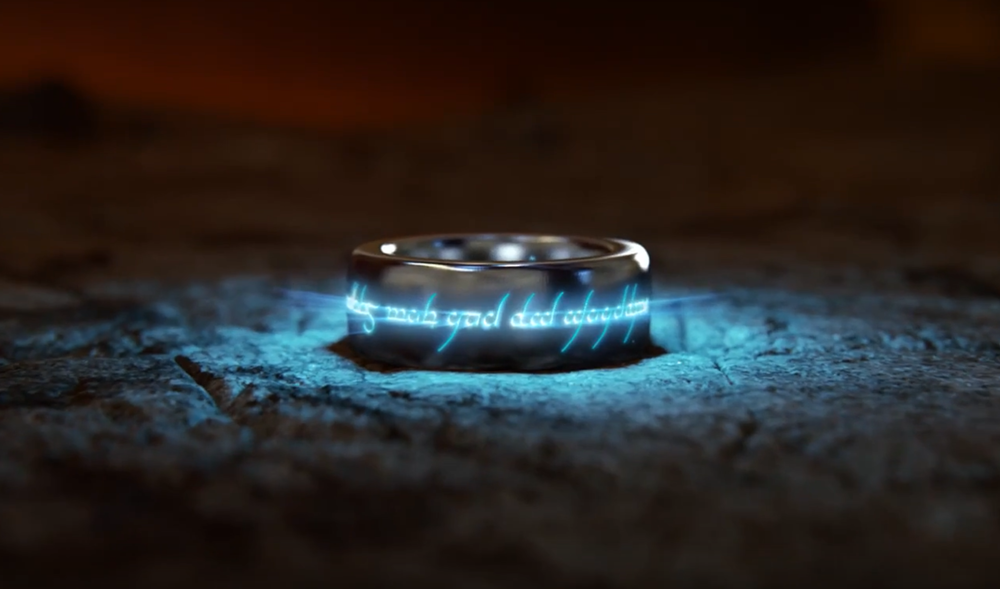 Dale was sacked and its citizenry sought refuge in Erebor. The Easterlings settled down to besiege the Mountain, but were unable to gain entry.
Dale was sacked and its citizenry sought refuge in Erebor. The Easterlings settled down to besiege the Mountain, but were unable to gain entry.
When news spread about the fall of Sauron, the Easterlings became demoralized and retreated, and the sons of Brand and Dáin let their army out of Erebor to break the encirclement.
Lothlórien and Mirkwood
On March 11, Lothlórien was first attacked from Dol Guldur. It was attacked two further times, on March 15 and March 22. When the Dark Lord had fallen, Celeborn led his army out of Lórien, and crossed the Anduin. Dol Guldur was captured and destroyed by Galadriel.
Thranduil of Mirkwood was also attacked from Dol Guldur on March 15 resulting in the long Battle Under the Trees, in which Thranduil’s kinfolk won a hard victory. After the destruction of Dol Guldur, Celeborn met Thranduil on April 6, and as the shadow had passed, they divided Mirkwood and renamed it Eryn Lasgalen.
The Shire
- Main article: Battle of Bywater
After the defeat of the Dark Lord, Saruman used the power of his voice to convince Treebeard to release him from Isengard. He travelled to the Shire, where he replaced Lotho Sackville-Baggins as the Chief under the name Sharkey. Under his command Ruffian men entered the Shire and ruined it. They were defeated by Hobbits led by Meriadoc Brandybuck and Peregrin Took in the Battle of Bywater on November 3. The Hobbits headed to Hobbiton where Frodo ordered Saruman and Wormtongue to leave the Shire. Wormtongue, however, killed Saruman, before he himself was killed by the Hobbits and their arrows. With the death of the wizard Saruman, the War of the Ring finally ended.
He travelled to the Shire, where he replaced Lotho Sackville-Baggins as the Chief under the name Sharkey. Under his command Ruffian men entered the Shire and ruined it. They were defeated by Hobbits led by Meriadoc Brandybuck and Peregrin Took in the Battle of Bywater on November 3. The Hobbits headed to Hobbiton where Frodo ordered Saruman and Wormtongue to leave the Shire. Wormtongue, however, killed Saruman, before he himself was killed by the Hobbits and their arrows. With the death of the wizard Saruman, the War of the Ring finally ended.
Consequences and legacy
The War of the Ring had great influence on all of the lands of the northwest of Middle-earth. Most importantly it led to the restoration of the Kingdoms of Arnor and Gondor as the Reunited Kingdom, under King Elessar Telcontar. The Steward of Gondor was dead, but he was succeeded by his son Faramir, who kept the office and was given the title Prince of Ithilien.
In Rohan the heir apparent, Théodred, was killed, and, in the Battle of Pelennor Fields, King Théoden died as well. He was succeeded by his nephew Éomer. In the Glittering Caves at the Hornburg, a Dwarven colony was established, and Isengard was given to the Ents, who filled Saruman’s pits and reforested the land, renaming it the Treegarth of Orthanc
He was succeeded by his nephew Éomer. In the Glittering Caves at the Hornburg, a Dwarven colony was established, and Isengard was given to the Ents, who filled Saruman’s pits and reforested the land, renaming it the Treegarth of Orthanc
In Dale, both King Brand and King Dáin II Ironfoot were killed, who were succeeded by their sons Bard II and Thorin III Stonehelm. They sent their emissaries to the crowning of Elessar, and were in alliance with Gondor until their Kingdoms ended.
For the Elves, the final decline had begun. With the destruction of the One Ring, the power of the Three Rings faded, and the kingdoms that had been preserved by their magic began to fade with them. The bearers of the Rings left Middle-earth, and Lórien was eventually abandoned. The Elves of Lothlórien who did not depart over the Sea moved east to the southern third of Mirkwood, below the Narrows, which they named East Lórien. In Eryn Lasgalen however, Thranduil’s rule continued, and they had peace. An Elven colony was also set up by Legolas in Ithilien for a short time. Many of the Elves of Rivendell departed over the Sea, and by Aragorn’s death 120 years later, only the Sons of Elrond, Celeborn and a small household remained.
An Elven colony was also set up by Legolas in Ithilien for a short time. Many of the Elves of Rivendell departed over the Sea, and by Aragorn’s death 120 years later, only the Sons of Elrond, Celeborn and a small household remained.
In the Shire life continued as it had prior to the war. It was declared a free land under the Sceptre of Annúminas, and Men were forbidden to enter it. The Westmarch was added to the Shire by King Elessar in FO 31.
The different races of Men that had served Sauron suffered grievously; much of Harad’s fighting men were annihilated on the Pelennor Fields, slaughtered by the swords of Gondor and the lances of Rohan or drowning in the Anduin river. The Easterlings hastily retreated back to their homelands after Sauron’s fall and fought several territorial wars with King Elessar over lands near the Sea of Rhûn, but ceased to be a major threat.
Once the Fourth Age began, the Elves stopped having an active influence on the affairs of Middle-earth, having started fading away ever since the Third Age. Orcs never became a serious threat again, reduced to small bands of mountain brigands they were never more than a nuisance. All the Nazgûl were killed, with Sauron reduced to a mere shadow of malice. Wars would still be fought by the Reunited Kingdom and Rohan against the Men that had allied with Sauron, the Haradrim and Easterlings.
Orcs never became a serious threat again, reduced to small bands of mountain brigands they were never more than a nuisance. All the Nazgûl were killed, with Sauron reduced to a mere shadow of malice. Wars would still be fought by the Reunited Kingdom and Rohan against the Men that had allied with Sauron, the Haradrim and Easterlings.
Known battles
- Battles of the Fords of Isen
- Destruction of Isengard
- Battle of the Hornburg
- Battle of Osgiliath
- Battle of Pelargir
- Battle of the Pelennor Fields
- Battle of the Black Gate
- Battles of Lórien
- Battle Under the Trees
- Battle of Dol Guldur
- Battle of Dale
- Battle of Bywater
Portrayal in adaptations
The War of the Ring is one of the major wars in The Lord of the Rings trilogy. It was one of the major wars in all of Middle-earth and the main conflict in the film series. It begun with the Attack on Dol Guldur and Battle of Five Armies in TA 2941, which sent the conflict into a 60-year lull during which Sauron rebuilt his power, before erupting with attack on Osgiliath and culminate in Sauron’s ultimate defeat during the Battle of the Black Gate in TA 3002.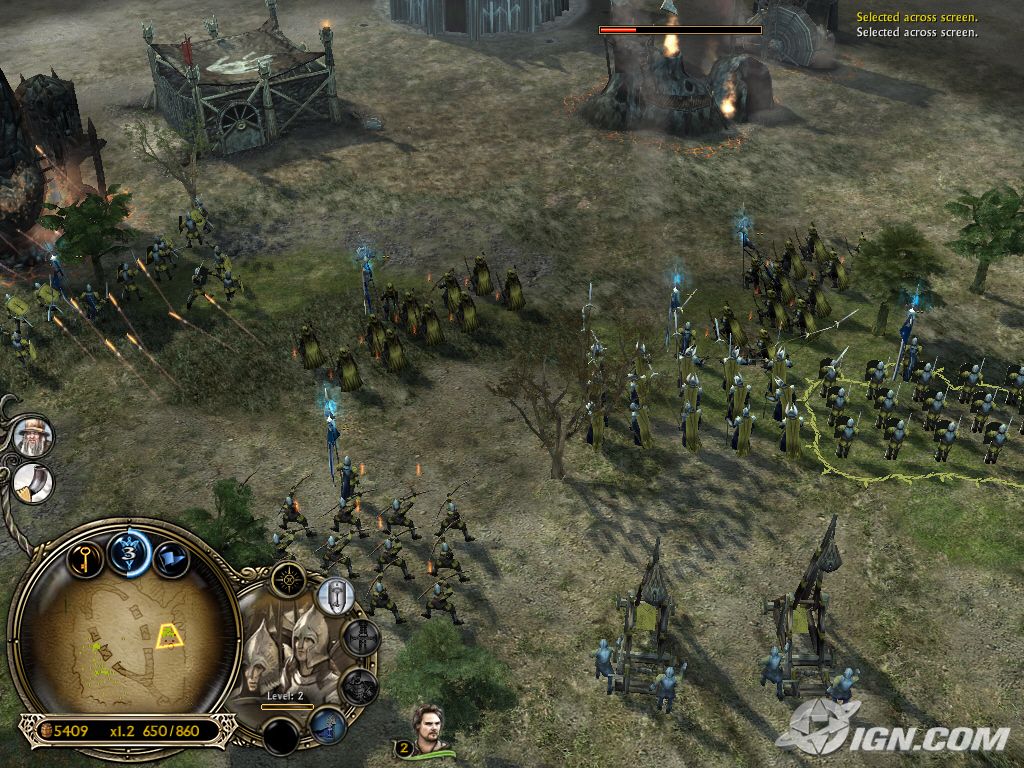
War of the Last Alliance
In the Second Age, the Dark Lord Sauron was challenged by an alliance of Men and Elves (from Númenor and Lindon, respectively). In spite of some Men breaking their oath of allegiance for fear of Sauron, the alliance was successful. Wielding the sword Narsil, Isildur defeated Sauron.
However, because his Ring of Power was not destroyed but lost, Sauron’s spirit endured and his servants — the nine Ringwraiths led by the Witch-king — later returned to harass the kingdoms of Middle-earth.
The beginning
In TA 2940, Gandalf — a member of the White Council — stumbled upon men carrying a message promising payment for the head of the Dwarven exilarch Thorin Oakenshield, who was abroad nearby at the time. With this, Gandalf began to sense an unease as to the continuation of the peace. Worried that «darker minds» will turn towards Erebor — either to secure an alliance with the dragon or to use its wealth and position for evil purposes — he intercepted Thorin and convinced him to undertake Quest of Erebor, which was a quest to reclaim Erebor from the dragon Smaug.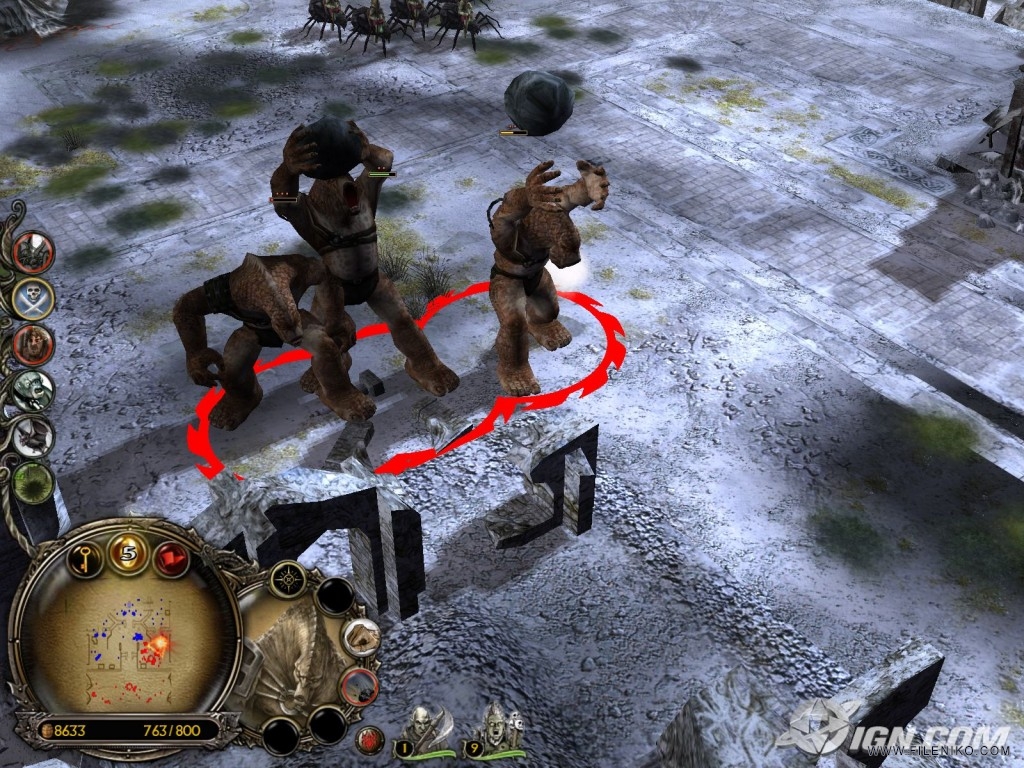 He would later argue that the quest for the Dwarves to reclaim their homeland would Bean that Middle-earth’s armies in the East will be strengthened anger to rid Sauron’s chance of using Smaug in his army. During the Quest, Gandalf noticed further signs of disquiet, which he later reported to the White Council: Trolls have come down from the Ettenmoors and raided a farm. Orcs, astride Gundabad Wargs, attacked the company in the open, along the Great East Road, coming the very borders of Rivendell.
He would later argue that the quest for the Dwarves to reclaim their homeland would Bean that Middle-earth’s armies in the East will be strengthened anger to rid Sauron’s chance of using Smaug in his army. During the Quest, Gandalf noticed further signs of disquiet, which he later reported to the White Council: Trolls have come down from the Ettenmoors and raided a farm. Orcs, astride Gundabad Wargs, attacked the company in the open, along the Great East Road, coming the very borders of Rivendell.
Most importantly, however, a Necromancer had taken up residence in the ruined fortress of Dol Guldur some time before, and his dark magic was spreading a sickness through the Greenwood. Bats and Giant Spiders were abroad and a Morgul Blade, which was known to belong to the Witch-king, was uncovered by Radagast in Dol Guldur. The other members of the council (outside of Galadriel, who shared Gandalf’s innate sense of «something at work») largely dismissed this. Elrond, in particular, in his complacency, said its «hardly a prelude to war. »
»
Further down the road, Gandalf saw further proof of rising evil: Azog has come out of Moria for the first time since his defeat, and payed homage to the Necromancer, rallying more and more Moria Orcs to Dol Guldur. Goblins had multiplied under the Misty Mountains, and Orcs have infested the Wilderland. Unbeknownst to him, hearing its Master’s call, the One Ring — too — was recovered from Gollum, falling into the hand of Bilbo Baggins, a member of Thorin’s company.
All of this compelled the wizard to investigate the High Fells, where he found the tombs opened from the inside. Now fearing that the Necromancer is Sauron himself, he went to Dol Guldur where he discovered that the last Dwarf Ring was harvested by Sauron, who was marshaling a secret army commanded by Azog. He was already in league with Smaug and intended to use him against the realms of the North while using Erebor to secure his reclaiming of the lands of Angmar.
The members of the White Council — informed by Radagast — came to Gandalf’s rescue.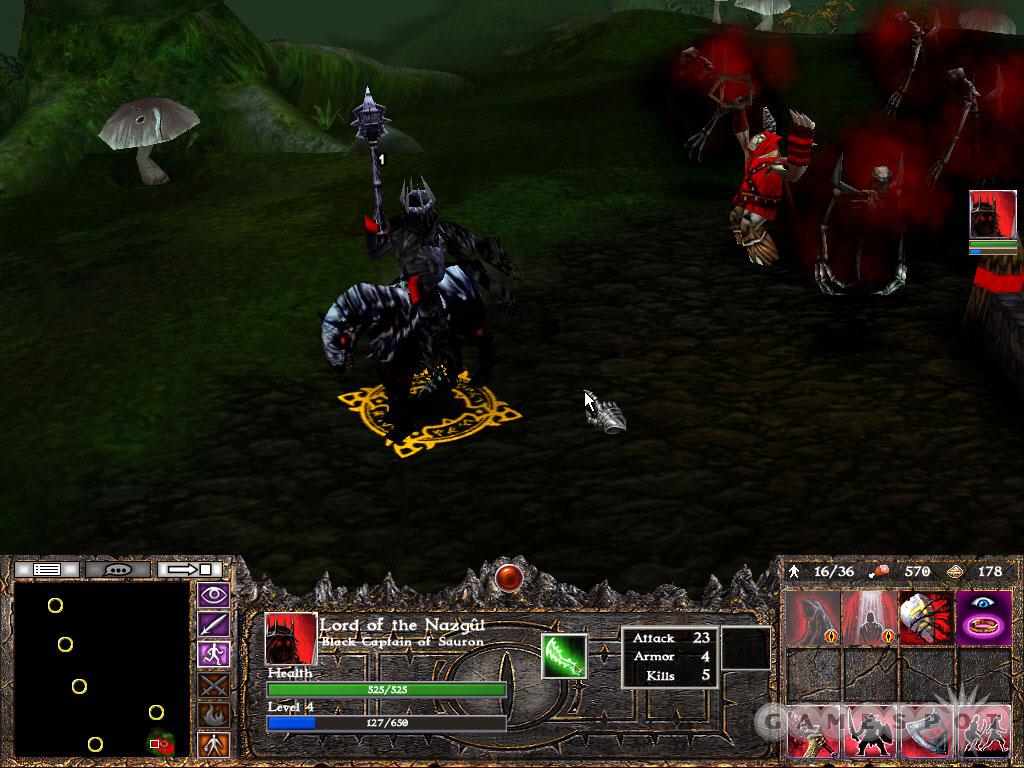 Elrond and Saruman face the Ringwraiths and Galadriel banished Sauron to the east. Saruman takes control of the situation, asking that Sauron be left to his care. Sauron and Azog’s army (and a second army led out of Gundabad by Bolg), however, was already en route to the Lonely Mountain and attacked the armies of Elves, Men and Dwarves which were marshaled there for the Siege of Erebor.
Elrond and Saruman face the Ringwraiths and Galadriel banished Sauron to the east. Saruman takes control of the situation, asking that Sauron be left to his care. Sauron and Azog’s army (and a second army led out of Gundabad by Bolg), however, was already en route to the Lonely Mountain and attacked the armies of Elves, Men and Dwarves which were marshaled there for the Siege of Erebor.
The Battle was lost when Azog used it for his own ends, setting a trap for Thorin which ended up costing both their lives during the Skirmish on Ravenhill. With Azog defeated, Bolg slain by Legolas and the Gundabad Army thwarted by Beorn, Sauron had suffered a temporary defeat.
Interlude
In the intervening years, Sauron returned to Mordor and began multiplying Orcs and rebuilding his tower of Barad-dûr. Saruman went to Isengard to keep a watch, but convinced by Sauron’s superiority ended up submitting himself to the Dark Lord.
Gandalf and Legolas joined a young Aragorn in Rivendell. Aragorn later travelled under pseudonym to Rohan, where he rode to war with Thengel, and to Gondor where he served the steward Ecthelion in the fight against Sauron. The Stewards of Gondor kept the forces of Mordor at bay in Ithilien.
Aragorn later travelled under pseudonym to Rohan, where he rode to war with Thengel, and to Gondor where he served the steward Ecthelion in the fight against Sauron. The Stewards of Gondor kept the forces of Mordor at bay in Ithilien.
Meanwhile, the High Elves began leaving for the Grey Havens. Orcs retook Moria from Balin.
The war
Gandalf returned to the Shire from untold ventures against Sauron and his agents. Attending Bilbo’s Farewell Party, he became aware of the corrupting effects of Bilbo’s Ring and compelled the Hobbit to leave it behind for his cousin, Frodo Baggins. He left again to look for answers.
In the quest to hunt for Gollum, Gandalf called upon the Dúnedain Ranger Aragorn (the secret heir of Isildur) to help him track down Gollum in order to learn more of the nature of Bilbo’s Ring. However, Sauron caught him first and extracted Bilbo’s name and whereabouts from him. Sauron launched an attack on the ruins of Osgiliath, which was soon reclaimed by Boromir, son of the Gondorian Steward.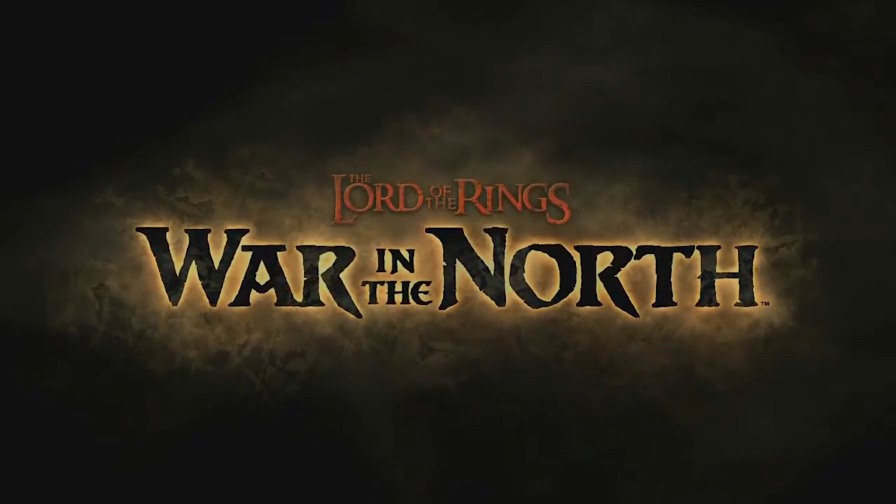
Gandalf tracked Gollum’s trail, reaching the borders of Mordor and learning that Sauron is marshaling an army and rebuilding Barad-dûr. He did not know, however, that Sauron had sent the Nine Ringwraiths towards the Shire. Gandalf then turned to the library of nearby Minas Tirith, finding information that would later help him prove that the Ring is indeed Sauron’s. Returning to the Shire in September, he set Frodo off with the Ring towards Bree while he went to convene with Saruman in Isengard. As Elrond was informed of this, he called upon delegates of all the races of Middle-earth to take coucil in Rivendell. Gandalf was delayed after being held captive by Saruman, bringing news that the wizard is marshaling his own army. Frodo arrived later still, chased by Ringwraiths. Delegates from Erebor, Dale, Gondor and the Woodland Realm convened and the Fellowship of the Ring was formed to help Frodo destroy the Ring in the fires of Mount Doom. This included Gandalf, Aragorn, Boromir of Gondor (secretly sent by his father to bring the Ring to Gondor), Legolas, Gimli, Sam, Merry and Pippin. During the first leg of their quest, the Fellowship took part in the Skirmish in Balin’s Tomb against the Orcs of Moria, and in the Skirmish at Amon Hen against Saruman’s Uruk-hai, where the company was partially disbanded. Lothlórien, too, was attacked by Orcs chasing the company out of Moria, and Frodo even beheld a future in which the War was won by Sauron and the Shire was spoiled by his servants.
During the first leg of their quest, the Fellowship took part in the Skirmish in Balin’s Tomb against the Orcs of Moria, and in the Skirmish at Amon Hen against Saruman’s Uruk-hai, where the company was partially disbanded. Lothlórien, too, was attacked by Orcs chasing the company out of Moria, and Frodo even beheld a future in which the War was won by Sauron and the Shire was spoiled by his servants.
Meanwhile, Sauron used Saruman as a puppet to attack the people of Rohan, while Sauron himself mustered Easterlings and Southrons (some of which were intercepted in Ithilien by Faramir, brother of Boromir) in preparations to launch an assault upon Gondor. Saruman’s hordes of Uruk-hai and disgruntled Dunlendings burned many villages in the Westfold and destroyed a Rohirric army led by prince Théodred (himself mortally wounded) in the Battle of the Fords of Isen. In preparation of a large-scale assault, Saruman also harassed the nearby Ents of Fangorn, burning a portion of their forest to feed the furnaces required to forge armor for his troops.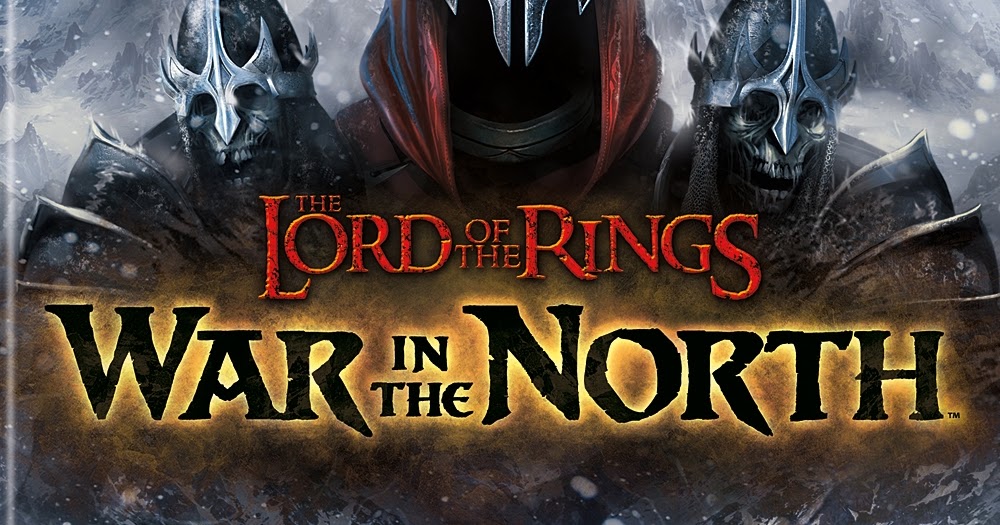
Against this threat, King Théoden — with Aragorn, Legolas and Gimli at his side — decided to lead his people out of Edoras and into the Fortress of Helm’s Deep. In spite of a Warg attack, they arrived and barricaded themselves against Saruman’s army.
Meanwhile, Osgiliath was attacked again, but the enemy seemed to withdraw when The Ring (taken with Frodo into the ruins of the city) was borne out of it.
In Battle of Helm’s Deep, despite of aid from Lothlorien under Haldir, sent by Elrond, the Rohirrim very nearly lost to Saruman’s forces in Helm’s Deep before Gandalf arrived with reinforcements. Meanwhile, the Ents — egged by Merry and Pippin — were enraged into attacking Isengard itself, eliminating Saruman from the War. Nevertheless, as Gandalf summarized, the great battle for Middle-earth’s future was only about to begin.
With the palantír secured from Saruman, Pippin accidentally saw a glimpse of Sauron’s plan: fearing Aragorn’s impending return to the throne of Gondor, and suspecting that the Ring was taken to its capital of Minas Tirith, Sauron was in a hurry to besiege and raze the city. Indeed, shortly afterwards the Witch-king marshalled an army out of Minas Morgul, led by Gothmog. Feigning to move out of the eastern shore of Osgiliath, the Orcs used boats under cover of night to launch a surprise attack on Faramir’s garrison. While engaging the Gondorian soldiers on the shore, they placed a wooden bridge over the city’s demolished causeway, which allowed them to assault it in large numbers and push Faramir back. Meanwhile, Gandalf used Pippin to light the beacons and call upon Théoden to help in Gondor’s defense.
Indeed, shortly afterwards the Witch-king marshalled an army out of Minas Morgul, led by Gothmog. Feigning to move out of the eastern shore of Osgiliath, the Orcs used boats under cover of night to launch a surprise attack on Faramir’s garrison. While engaging the Gondorian soldiers on the shore, they placed a wooden bridge over the city’s demolished causeway, which allowed them to assault it in large numbers and push Faramir back. Meanwhile, Gandalf used Pippin to light the beacons and call upon Théoden to help in Gondor’s defense.
In Théoden’s camp, Aragorn learnt of the approach of the Corsairs of Umbar, who would tip the scales of the battle even further in favor of Sauron. He was compelled by Elrond to wield Anduril — the reforged Narsil — and recruit the help of the Men of the Mountains (cursed to endure as undead for their lack of fidelity to Isildur), intercepting the corsairs shortly after they sailed past and assailed Pelargir.
In the Battle of Pelennor Fields, Gothmog lays siege to Minas Tirith. After exchanges of catapult fire being the Orcs and Men, the Nazgûl — now astride winged Fellbeasts — took out Gondor’s trebuchets, allowing for Siege Towers to approach the city walls and engage its defenders. The gate, however, was impregnable for the Orcs standard rams, before Gothmog had Grond wheeled unto the field.
After exchanges of catapult fire being the Orcs and Men, the Nazgûl — now astride winged Fellbeasts — took out Gondor’s trebuchets, allowing for Siege Towers to approach the city walls and engage its defenders. The gate, however, was impregnable for the Orcs standard rams, before Gothmog had Grond wheeled unto the field.
Breaching the city, he ordered his forces to move in and «kill all» in their path. Gandalf led a retreat to the second level of the city and faced the Witch-king before the Rohirrim arrived at the break of dawn. They cut through the Orc ranks, but were matched by the Haradrim and their Mûmakil. Théoden was mortally wounded by the Witch-king’s mount, but his niece Éowyn — having joined the battle in disguise — defended her uncle and, with the aid of Merry, dispatched the Witch-king. Just then, Aragorn arrived with the Army of the Dead on the Corsair ships, tipping the scale of the battle.
However, the war was not over, however, as Sauron still had ten thousand Orcs scattered across Gorgoroth.:strip_icc()/pic1866668.jpg) Aragorn offered to use their remaining forces to draw out this force, giving Frodo a chance to carry the Ring through Mordor and destroy it in Mount Doom.
Aragorn offered to use their remaining forces to draw out this force, giving Frodo a chance to carry the Ring through Mordor and destroy it in Mount Doom.
The plan nearly failed when Frodo and Sam, disguised as Orcs, were marched towards the Black Gate, where the forces of Gondor and Rohan were mustered. The Hobbits managed to sneak out of the mass of Orcs, however, and continued on their trek across Gorgoroth, while the Mouth of Sauron tried to fool Aragorn into thinking Frodo was in fact captured and killed.
The plan was successful in distracting Sauron until Frodo — consumed by the Ring — claimed it to himself. However, the intervention of Gollum who was tracking the Hobbits in an attempt to reclaim his Ring, caused it to fall into the fires of Mount Doom and be destroyed. The army of Mordor was in part destroyed in the ensuing cataclysm and in part fled the horror of it.
Aftermath
After the Battle of the Black Gate, Aragorn was crowned King and married Arwen, daughter of Elrond and the Hobbits return to the Shire, where Sam marries Rosie Cotton.
Elrond, Gandalf, Galadriel and Celeborn then depart for the West. The death of Saruman and departure of Gandalf also meant the end of the Order of the Istari, and with Frodo and Bilbo joining the wizard and Elf-Lords, the Ring-bearers too leaving Middle-earth indefinitely.
Translations
| Foreign Language | Translated name |
| Afrikaans | Oorlog van die Ring |
| Albanian | Lufta e Unazës |
| Amharic | የ ሪንግ ጦርነት |
| Arabic | حرب الخاتم |
| Armenian | Պատերազմ ռինգում |
| Azerbaijani | Üzük müharibəsi |
| Basque | Eraztunaren Gerraren |
| Belarusian Cyrillic | Вайна Пярсцёнка |
| Bengali | রিং যুদ্ধের |
| Bosnian | Rat za Prsten |
| Bulgarian Cyrillic | Войната на Пръстена |
| Burmese | လက်စွပ်စစ် |
| Cambodian | សង្គ្រាមនៃចិញ្ចៀន |
| Catalan | Guerra de l’Anell |
| Cebuano | Gubat sa mga Singsing |
| Chichewa | Nkhondo ya Mphete |
| Chinese (Hong Kong) | 魔戒聖戰 |
| Corsican | Guerra di l Anellu |
| Croatian | Rat za Prsten |
| Czech | Válka o Prsten |
| Danish | Ringkrigen |
| Dutch | Oorlog om de Ring |
| Esperanto | Milito de la Ringo |
| Estonian | Sõrmuse Sõda |
| Fijian | Na Ivalu ni na Mama |
| Filipino | Digmaan ng Singsing |
| Finnish | Sormuksen sota |
| French | Guerre de l’Anneau |
| Galician | Guerra do Anel |
| German | Ringkrieg |
| Greek | Πόλεμος του δαχτυλιδιού |
| Haitian Creole | Lagè nan an Bag |
| Hausa | Yaki da Zobe |
| Hawaiian | Kaua o ke Apo |
| Hebrew | מלחמת הטבעת |
| Hindi | रिंग के युद्ध |
| Hungarian | Gyűrűháború |
| Indonesian | Perang cincin |
| Irish Gaelic | Cogadh an Fáinne |
| Italian | Guerra dell’Anello |
| Japanese | 指輪戦争 |
| Kannada | ಉಂಗುರದ ಕದನ |
| Kazakh | Жүзік соғыс (Cyrillic) Jüzik soğıs (Latin) |
| Korean | 반지의 전쟁 |
| Kurdish | Şer yên de Rîngê (Kurmanji) |
| Kyrgyz Cyrillic | Шакектин согуш |
| Laotian | ສົງຄາມຂອງວົງການ |
| Latin | Bellum autem Anulus |
| Latvian | Gredzena karš |
| Lithuanian | Karo Žiedo |
| Luxembourgish | Krich vun de Réng |
| Macedonian Cyrillic | Војната на прстенот |
| Malagasy | Ady ny Peratra |
| Malaysian | Perang Cincin |
| Maltese | Gwerra taċ-ċirku |
| Marathi | रिंग युद्ध |
| Maori | Whawhai o te Whakakai |
| Mongolian Cyrillic | Цагираган дайн |
| Nepalese | रिंग युद्ध |
| Norwegian | Krigen om Ringen |
| Occitan | Guèrra de l’Anèl |
| Pashto | د حلقوي جګړې |
| Persian | جنگ حلقه |
| Polish | Wojna o Pierścień |
| Portuguese | Guerra do anel |
| Punjabi | ਰਿੰਗ ਦੀ ਲੜਾਈ |
| Querétaro Otomi | Ar hñäki jar anillo |
| Romanian | Războiul Inelului |
| Russian | Война Кольца |
| Scottish Gaelic | Cogadh na Fàinne |
| Serbian | Рат Прстенова (Cyrillic) Rat Prstenova (Latin) |
| Sinhalese | මුද්ද යුද්ධය |
| Slovak | Vojna o Prsteň |
| Slovenian | Prstana vojna |
| Spanish | Guerra del Anillo |
| Swahili | Vita ya Gonga |
| Swedish | Ringens Krig |
| Tahitian | Tamai o te tapea Rima |
| Tamil | ரிங் போர் |
| Tatar | боҗра сугышы |
| Telugu | రింగ్ యుద్ధం |
| Thai | สงครามแหวน |
| Turkish | Yüzük Savaşı |
| Turkmen | Halkanyň Uruş |
| Ukrainian Cyrillic | Війна персня |
| Urdu | انگوٹی کی جنگ |
| Uzbek | Узук уруш (Cyrillic) Uzuk urush (Latin) |
| Vietnamese | Cuộc Nhẫn Chiến |
| Welsh | Rhyfel y Fodrwy |
| Yiddish | מלחמה פון די רינג |
| Xhosa | Kwimfazwe Khonkcweni |
References
- ↑ The History of Middle-earth, Vol.
 VIII The War of the Ring, pg. 249, «…somewhat short of ten thousand but in that count I reckon only men well-horsed, fully armed…As many again there are on foot…»
VIII The War of the Ring, pg. 249, «…somewhat short of ten thousand but in that count I reckon only men well-horsed, fully armed…As many again there are on foot…» - ↑ The Lord of the Rings, The Fellowship of the Ring, «The Shadow of the Past» — «the Nine [Sauron] has gathered to himself; the Seven also, or else they are destroyed.»
- ↑ Unfinished Tales, «The Quest of Erebor»
- ↑ The Hobbit, «Riddles in the Dark»
- ↑ The History of Middle-earth, Vol. XII. The Peoples of Middle-earth, «XIII. Last Writings»
- ↑ The Lord of the Rings, Appendix B, «The Third Age»
War of the Ring | The One Wiki to Rule Them All
War of the Ring
Date
February —
November TA 3019
Place
Middle-earth
Southern theatre:
Gondor
Northern theatre:
Rhovanion
Outcome
Victory for the Free Peoples
- Final destruction of Sauron, the One Ring, and Mordor
- Reunification of Gondor and Arnor as the Reunited Kingdom
- Line of Kings of Arnor and Gondor restored
Sauron and his
servants:
Mordor, Isengard, Dunland, Rhûn, Harad
Corsairs of Umbar, Khand, Dol Guldur,
Orc-occupied Moria,
Orcs of the Misty Mountains
Free Peoples:
Gondor,
Rohan,
Army of the Dead,
Woodland Realm of Mirkwood,
Lothlórien,
Grey Company,
Kingdom of Dale,
Erebor,
Fangorn Forest,
the Shire,
Rivendell (support),
Great Eagles
Sauron†,
Saruman†,
Witch-king of Angmar†,
Gothmog†,
Mouth of Sauron†
Gandalf† (laterresurrected),
Denethor II†,
Théoden†,
Aragorn II Elessar,
Éomer, Faramir,
Imrahil,
King of the Dead†,
Celeborn, Galadriel,
Thranduil,
Treebeard,
Brand†,
Dáin II Ironfoot†,
Thorin III Stonehelm,
Bard II,
Gwaihir
Vast number of Orcs/Uruks
Unknown number of Easterlings
Unknown number of Haradrim, but more than 18,000
Unknown number of Variags
1 large fleet of Corsairs of Umbar
Unknown number of Trolls
At least 20,000 Men[1]
Unknown number of Elves
Unknown number of Dwarves
Unknown number of Great Eagles
Unknown number of Ents
Complete destruction of Sauron’s and Saruman’s armies. All Orcs and Uruk-hai die or flee; evil men subdued
All Orcs and Uruk-hai die or flee; evil men subdued
Severe
So we come to it in the end, […] the great battle of our time, in which many things shall pass away.
—Théoden in The Return of the King, «The Muster of Rohan»
The War of the Ring was a massive conflict brought by the Dark Lord Sauron upon the Free Peoples of Middle-earth for control of the One Ring and dominion over the entire continent. It occurred at the end of the Third Age. Together with the Quest of the Ring, it comprised one of the main overarching plot-lines of The Lord of the Rings saga. The war pitted Orcs, trolls, evil Men and creatures, and others against allied forces of Men of the West, Elves, and Dwarves aided by the Istari, Ents, and Great Eagles of the Misty Mountains.
The war was instigated by Sauron, who had gained back much of his strength since his defeat at the end of the Second Age and who sought the One Ring, the key to regaining his physical form and thus his full power. In the war that ensued, countless thousands of Men, Elves, and Dwarves lost their lives. Following the end of hostilities the final decline of the Elves’ power in Middle-earth began, paralleled by the rise of Men in the West, the restoration of the King of Gondor and Arnor, and the start of the Fourth Age.
In the war that ensued, countless thousands of Men, Elves, and Dwarves lost their lives. Following the end of hostilities the final decline of the Elves’ power in Middle-earth began, paralleled by the rise of Men in the West, the restoration of the King of Gondor and Arnor, and the start of the Fourth Age.
Battles were fought across Middle-earth in Gondor, Rohan, Lothlórien, Mirkwood, at the Lonely Mountain and Dale. These were primarily waged against Sauron’s forces, but Saruman, a third contender, also fielded his own army, which fought battles at the Fords of Isen and Helm’s Deep.
The first full-scale battle fought in the war was the First Battle of the Fords of Isen, while the last was the Battle of Bywater, followed shortly afterward by the deaths of Saruman and Gríma Wormtongue. In the wake of the victory, Aragorn II Elessar was crowned King of Gondor, heralding a final renewal of cooperation between Men, Elves, and Dwarves.
Contents
- 1 Background
- 2 Prelude
- 2.
 1 Gandalf’s role
1 Gandalf’s role
- 2.
- 3 Events
- 3.1 Southern theatre
- 3.1.1 Rohan
- 3.1.2 The Pelennor Fields
- 3.2 Northern theatre
- 3.2.1 Dale and the Lonely Mountain
- 3.2.2 Lothlórien and Mirkwood
- 3.3 The Shire
- 3.1 Southern theatre
- 4 Consequences and legacy
- 5 Known battles
- 6 Portrayal in adaptations
- 6.1 War of the Last Alliance
- 6.2 The beginning
- 6.3 Interlude
- 6.4 The war
- 6.5 Aftermath
- 7 Translations
- 8 References
Background
Sauron had been defeated in the War of the Last Alliance, but because of Isildur’s refusal to destroy the One Ring, he was not entirely vanquished. He was, however, reduced to a formless phantasm. Sauron began plotting his return to power from his stronghold at Dol Guldur. The foundations of Barad-dûr were also not destroyed. Sauron’s spirit wandered the wastelands of Middle-earth for over 1000 years, but he slowly rebuilt his power, taking up residence in disguise as the Necromancer of Dol Guldur. Around TA 1000, the Valar sent Maiar emissaries to Middle-earth to help the free peoples against the growing evil.
Around TA 1000, the Valar sent Maiar emissaries to Middle-earth to help the free peoples against the growing evil.
Indeed, Orcs and other wicked things were multiplying and the Witch-king from his fortress in Angmar waged unending war against Arnor. Moria and Minas Ithil fell and were abandoned, among other battles, plagues, and catastrophes which ended the kingdoms of Arnor and the Royal line of Gondor. Not yet strong enough to challenge the White Council, Sauron fled from Dol Guldur to escape detection by Gandalf, allowing for four centuries of peace.
In the meantime, Sauron’s One Ring was found by two Stoors in the Gladden River. The Hobbit who took it, under its influence, was corrupted as Gollum and eventually retreated to a cave under the Misty Mountains. By the end of the Age, Sauron attempted to gather back all the Rings to augment his power. He took the Nine, but of the Seven he managed to reclaim only three, the last of them being the Ring of Thrór[2] but could not find the One.
Gandalf was concerned about the weak state of the north. Smaug the dragon had destroyed both the Kingdom under the Mountain and the town of Dale. About Erebor was a desolation which Sauron might use to regain the northern passes in the mountains and the old lands of Angmar, not to mention the devastating effect of a living dragon in the Enemy’s force. Gandalf, seeing no hope in Thorin II Oakenshield’s plans of battle and war against Smaug, persuaded him that he should go secretly to Erebor to reclaim its treasure, and to take with him Bilbo Baggins of the Shire.[3] Smaug was killed by Bard, Erebor was retaken, and most importantly, the kingdoms of Erebor and Dale were re-established. In a small incident along the way, the One Ring was lost by Gollum and wound up in Bilbo’s hands.[4]
Around the time the War began, it is said that the Blue Wizards had gained influence in the East and, thanks to their efforts, Sauron could not manage to gather as much people to his side. [5]
[5]
Prelude
- «The Dark Tower had been rebuilt, it was said. From there the power was spreading far and wide, and away far east and south there were wars and growing fear. Orcs were multiplying again in the mountains. Trolls were abroad, no longer dull-witted, but cunning and armed with dreadful weapons. And there were murmured hints of creatures more terrible than all these, but they had no name.«
- —The Fellowship of the Ring, «The Shadow of the Past»
During the Quest of Erebor, the White Council attacked Dol Guldur and the Dark Lord withdrew. However, Sauron returned to his old abode in Mordor to reconstruct Barad-dûr and ten years after the fall of Smaug he sent three Nazgûl to reoccupy Dol Guldur. He declared himself openly in TA 2951. The White Council met for the last time in TA 2953 to discuss the Rings of Power when Saruman reassured them that the One Ring had been lost forever in the Sea. After this, Saruman fortified Isengard, spied on Gandalf, learning thus his interest in the Shire, and started sending his agents around the Shire under the pretense of buying pipe-weed. [6]
[6]
All the while, Sauron’s mind was bent on a single thought: the One Ring, which he needed above all else to restore his full might. To that end, he deployed numerous spies across Middle-earth to search for it but the closest he ever came was the capture of an insane, raving Stoor Hobbit, the creature Gollum who had been discovered sneaking about the borders of Mordor and who contained traces of the One Ring’s power. Sauron savagely tortured and interrogated the Stoor relentlessly for weeks, receiving only inane babble in return until finally Gollum blurted out two ungarbled words; ‘Shire’ and ‘Baggins’. Seizing on this, Sauron released the Stoor under the belief that he might of later use and deployed the Nazgûl to find the Shire to track down the One Ring. He was foiled once more however by the machinations of the wizard Gandalf and the One Ring remained lost to him.
Undeterred, Sauron continued to rebuild. His Orc armies continued to grow in Mordor whilst he forged alliances with the Easterlings in the east; the Haradrim and Variags in the south; as well as Dunlendings through his thrall Saruman. Having tracked the Ring to the Elven sanctuary of Rivendell in December, TA 3018, Sauron concluded that his enemies had the Ring and prepared to launch his war to recover it and destroy those that opposed him.
Having tracked the Ring to the Elven sanctuary of Rivendell in December, TA 3018, Sauron concluded that his enemies had the Ring and prepared to launch his war to recover it and destroy those that opposed him.
Sauron began reassembling his forces for the final blow against the hated remnants of Númenor and the Eldar. Armies of Easterlings from Khand and beyond the Sea of Rhûn reinforced Mordor, joined by men from Harad. Orcs, trolls, and other foul beasts were multiplying while Sauron’s servants were searching the Anduin for the One Ring. Meanwhile, Saruman’s use of a palantír caught the Dark Lord’s notice and he used the Ithil-stone to ensnare him, turning him into a useful, yet not wholly trustworthy, minion.
Gandalf’s role
The task of the Wizards was to oppose Sauron, but by the time of the War of the Ring only one remained true to that purpose. Throughout the war Gandalf would prove to be the key element, martialling the Dark Lord’s enemies against him while countering Sauron’s moves, sometimes decades in advance.
Gandalf’s adaptability and aptitude for strategy proved invaluable to his allies during the complicated web of strategy surrounding the War of the Ring. As told in Unfinished Tales, Gandalf had known for quite a while that Sauron’s use of Smaug would virtually guarantee victory over his enemies, laying waste to the remaining strongholds of the Elves. He and the company of Thorin II Oakenshield thus set out to destroy Smaug, and in the process broke the power of the Northern Orcs in the Battle of Five Armies, ensuring the freedom of a mostly defenceless Eriador in the war to come.
Events
Southern theatre
The primary objective of Sauron’s grand wartime strategy was to defeat the strongest of his enemies; Gondor, and to do so he would need to take their capital city and greatest fortress, Minas Tirith. This was no easy task even for Sauron; Gondor was easily the largest, most populous and most powerful kingdom of Men in Middle-earth and, despite its decline and stagnation, could still boast strong military forces. To this end, the war effort of Mordor was focused in the south in and around Gondor’s borderlands, in a strategy of divide and conquer. To keep Gondor’s ally Rohan, on its northern border, from sending aid, Sauron promoted the rise of his puppet Saruman at Isengard to the west of Rohan. Thus Rohan’s forces would be focused in the west trying to stem the tide of Isengard’s attacks and none could be sent to Minas Tirith’s defense. Meanwhile, Sauron sent his allies, the Corsairs of Umbar to attack Gondor’s populous southern coastal fiefdoms, which as a result could send only a fraction of their forces to defend Minas Tirith, while the rest stayed on the coasts preparing for the Corsair assault.
To this end, the war effort of Mordor was focused in the south in and around Gondor’s borderlands, in a strategy of divide and conquer. To keep Gondor’s ally Rohan, on its northern border, from sending aid, Sauron promoted the rise of his puppet Saruman at Isengard to the west of Rohan. Thus Rohan’s forces would be focused in the west trying to stem the tide of Isengard’s attacks and none could be sent to Minas Tirith’s defense. Meanwhile, Sauron sent his allies, the Corsairs of Umbar to attack Gondor’s populous southern coastal fiefdoms, which as a result could send only a fraction of their forces to defend Minas Tirith, while the rest stayed on the coasts preparing for the Corsair assault.
At the apex of Sauron’s incursion into Gondor was the ancient, ruined city of Osgiliath which straddled both sides of the Anduin River and lay right in front of the mountain pass which served as the entrance to the lands of Mordor. The city was defended stoutly by the garrison and Rangers of Ithilien but the defenders were massively outnumbered by the army Sauron would throw against them.
Rohan
- Main article: Battles of the Fords of Isen
The War of the Ring started in Rohan when a detachment of Saruman’s troops crossed the Fords of Isen. Warned by good intelligence reports, Théodred, the son of the King, Théoden, secretly mustered his forces and rode with them to the fords in order to launch a surprise attack against the enemy. On February 23, TA 3019 he attacked the vanguard of the Orc forces marching out of Isengard in the First Battle of the Fords of Isen. The Rohirrim however had misjudged their position and reinforcements were quickly deployed from Isengard by Saruman, forcing Théodred to order a retreat. His forces withdrew to a small island at the Fords of Isen, but they had no time to rest before they were surrounded and in the process, Theodred was killed. Grimbold managed to hold the island, but would not have succeeded if Elfhelm had not come with reinforcements from Helm’s Deep and because the Uruk-hai immediately withdrew following Théodred’s death.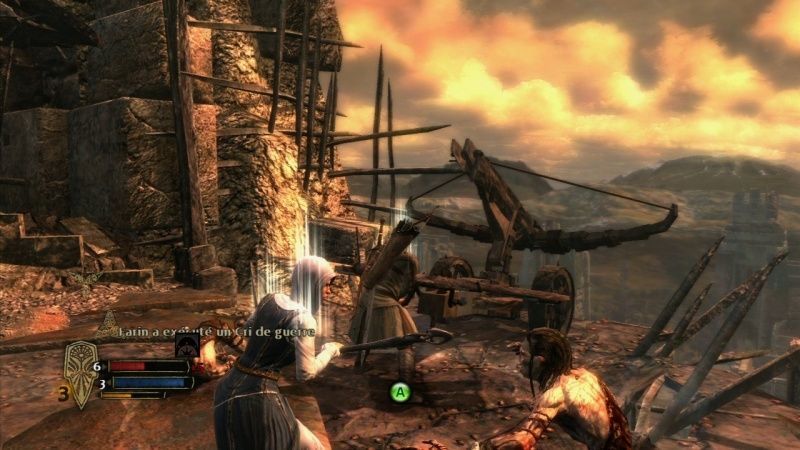 Thus the First Battle of the Fords of Isen ended in a costly victory for the Rohirrim.
Thus the First Battle of the Fords of Isen ended in a costly victory for the Rohirrim.
Now that the Second Marshal of the Mark was dead, Erkenbrand took command of the Westfold. He placed Grimbold and Elfhelm at the Fords. However, they were unable to withstand the forces of Isengard and were outflanked and then surrounded in the Second Battle of the Fords of Isen. Though they successfully broke through the enemy’s lines, they ended up scattered around the Westfold, giving Saruman clear passage into Rohan.
- Main article: Battle of the Hornburg
Meanwhile, Gandalf drove Gríma Wormtongue out of Edoras and went to gather Erkenbrand’s scattered forces, advising King Théoden to move to the stronghold of the Hornburg. The king and his forces arrived unmolested, but soon the fortress was surrounded by Saruman’s troops and attacked in the Battle of the Hornburg. All through the night of March 3rd-4th a combined force of Orcs and Dunlendings besieged the Hornburg, and despite the efforts of the Rohirrim (aided by Aragorn, Legolas, and Gimli) hope appeared lost.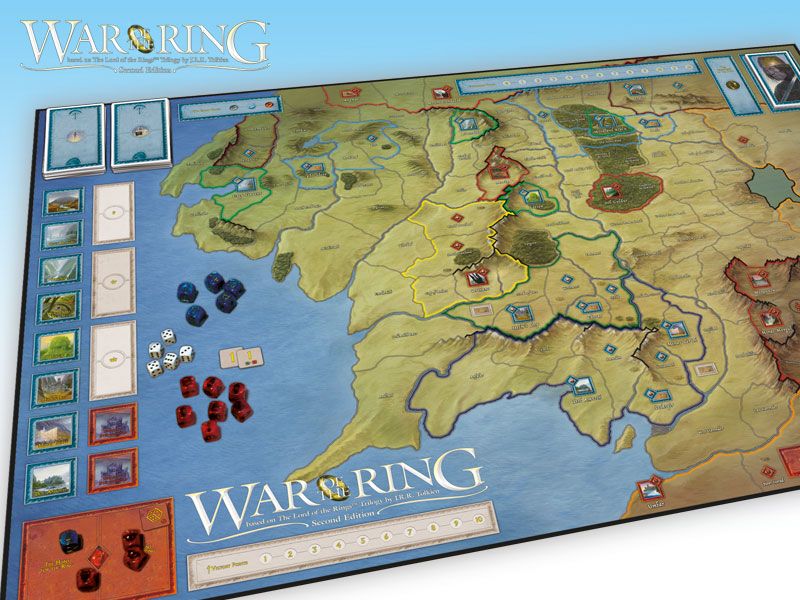 Believing Rohan was lost, Théoden decided to mount a final, suicidal charge against Saruman’s forces. Unexpectedly, however, Gandalf arrived in the nick of time with Erkenbrand and the scattered Rohirrim, along with a forest of Huorns who had been sent to the battle by Treebeard. The Orcs were trapped and utterly annihilated. The Dunlendings were taken captive, however, they were freed after swearing an oath not to again attack Rohan and clearing the battlefield of the dead. The mercy of this act amazed the captives, who had been told by Saruman that the Men of Rohan were cruel and burned their captives alive.
Believing Rohan was lost, Théoden decided to mount a final, suicidal charge against Saruman’s forces. Unexpectedly, however, Gandalf arrived in the nick of time with Erkenbrand and the scattered Rohirrim, along with a forest of Huorns who had been sent to the battle by Treebeard. The Orcs were trapped and utterly annihilated. The Dunlendings were taken captive, however, they were freed after swearing an oath not to again attack Rohan and clearing the battlefield of the dead. The mercy of this act amazed the captives, who had been told by Saruman that the Men of Rohan were cruel and burned their captives alive.
- Main article: Destruction of Isengard
Days before, at an Entmoot in Fangorn Forest, the Ents, furious over the destruction Saruman had wrought upon the forest, decided to march on Isengard. They attacked the fortress and completely obliterated it, save only the impregnable tower of Orthanc. By March 3 the destruction was completed, and the command of Isengard was taken by the Ent Treebeard. At Gandalf’s request, he sent a large herd of Huorns to the Battle of Hornburg, to aid the Rohirrim.
At Gandalf’s request, he sent a large herd of Huorns to the Battle of Hornburg, to aid the Rohirrim.
The Pelennor Fields
- Main article: Battle of Osgiliath
For over 3000 years, the realm of Gondor had held back the threat from the east and south. In time, with multiple assaults co-ordinated by Sauron, the kingdom declined, and the Dark Lord prepared to strike the mortal blow. On June 20 TA 3018 an initial attack was launched that captured the Eastern half of Osgiliath, securing a base from which the assault would be launched the following year. The two most important of Gondor’s outer fortresses were the island citadel of Cair Andros and the western half of the ruined city of Osgiliath. Following the Great Signal from Minas Morgul and the answering signal from Mount Doom, the attack on Osgiliath was the first move of the assault on Gondor. Sauron’s two armies swiftly overwhelmed the defenders of the fortresses, and Faramir was forced to retreat to the Causeway Forts, the last defence against the Morgul forces.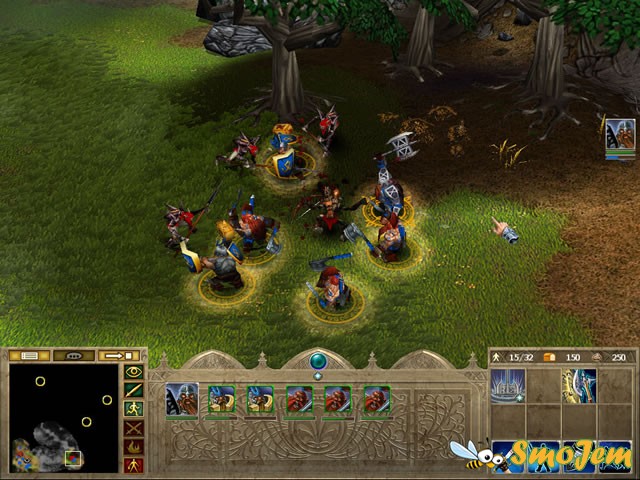 Soon these too were destroyed, and only Minas Tirith remained. The defence of these outposts bought vital time however, delaying the arrival of the forces of Mordor at the gates of the White City for nearly two days.
Soon these too were destroyed, and only Minas Tirith remained. The defence of these outposts bought vital time however, delaying the arrival of the forces of Mordor at the gates of the White City for nearly two days.
- Main article: Siege of Gondor
The attack soon began, as the Nazgûl hovered above and spread terror and confusion, and siege towers tried to take the walls. Incendiary missiles were hurled over the city walls of Minas Tirith, starting multiple fires. Such was the terror of the Nazgûl that the morale of the defenders began to collapse, with many abandoning the fight to cower in fear. Led by Gandalf and Imrahil the defense at the Great Gate of Minas Tirith remained stout until the arrival of Grond, which breached the gate. The Lord of the Nazgûl then entered. He was the first and only enemy to do so.
- Main article: Battle of the Pelennor Fields
All seemed lost — until six thousand Rohirrim, under King Théoden’s command, came and broke the siege lines. Still, the battle was in doubt until Aragorn arrived with a large force out of southern Gondor. The joint force of Gondor and Rohan then successfully defeated their enemies after a long day of fighting. This battle resulted in the deaths of the Witch-king of Angmar, King Théoden, and Denethor, Steward of Gondor.
Still, the battle was in doubt until Aragorn arrived with a large force out of southern Gondor. The joint force of Gondor and Rohan then successfully defeated their enemies after a long day of fighting. This battle resulted in the deaths of the Witch-king of Angmar, King Théoden, and Denethor, Steward of Gondor.
- Main article: Battle of the Morannon
The Battle of the Morannon was the final major battle against Sauron in the War of the Ring, fought at the Black Gate of Mordor. The Army of the West, roughly 6,000 strong, led by Aragorn marched on the gate and faced a vastly larger force as a diversionary feint to distract Sauron’s attention from Frodo Baggins and Samwise Gamgee, who were carrying the One Ring through Mordor. It was hoped that Sauron would think Aragorn had the Ring and was now trying to use it to overthrow Mordor. Despite the seemingly impossible odds the Army of the West was eventually victorious, for when the Ring was destroyed, Sauron’s forces fled, surrendered in dismay or were destroyed.
Northern theatre
Whilst Mordor’s central war effort was focused in the south against Gondor, using his outstretched right arm, Sauron concurrently attempted to outflank the lands of the Free Peoples through Rhovanion, using Orcs and his Easterling allies. In this theatre of the war, Sauron’s primary strategic objective was to use the forces at his primary base of operations in the area, Dol Guldur in southern Mirkwood, to defeat the Elven realm of Lothlórien, then pass over the Misty Mountains to take Rivendell and Eriador. However, Dol Guldur also had to deal with the threat of the Elven Woodland Realm of Thranduil, and thus was forced to split the Orc forces between the attack on Lothlórien and the attack on the Woodland Realm.
Sauron would doubtless have used his Easterling allies to attack these realms were it not for the fact that the way west was blocked by the Dwarves of the Lonely Mountain and the Iron Hills and the Men of Dale.
Bridging the gap between the northern and southern theatres of the war was the line of the River Anduin between Lothlórien and Gondor, running along Rohan’s border. Orc armies peeling off from the assault on Lothlórien tried to enter Rohan via this route, while most of its men had left to fight at Minas Tirith, but the Ents of Fangorn forest counterattacked on The Wold and destroyed the invading force.
Orc armies peeling off from the assault on Lothlórien tried to enter Rohan via this route, while most of its men had left to fight at Minas Tirith, but the Ents of Fangorn forest counterattacked on The Wold and destroyed the invading force.
Battle before gate of Erebor
Dale and the Lonely Mountain
- Main article: Battle of Dale
When the war commenced, the Dwarves of Erebor refused to cooperate with Sauron in his hunt for the Ring. So it was that Sauron sent in his legions of Easterlings to attack Dale and destroy the two kingdoms. On March 17 the Easterlings met the armies of the Dwarves of Erebor and the Men of Dale outside the city of Dale. After three days of intense fighting during which time both sides sustained heavy losses, the armies of Dale and the Dwarves were pushed back to the mountain. King Brand of Dale fell before the gate of the Lonely Mountain, and King under the Mountain Dáin II Ironfoot fell after a long defence of Brand’s body.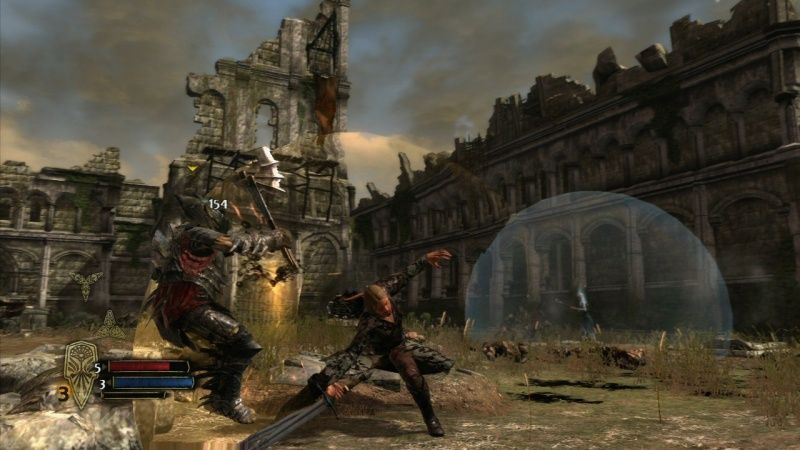 Dale was sacked and its citizenry sought refuge in Erebor. The Easterlings settled down to besiege the Mountain, but were unable to gain entry.
Dale was sacked and its citizenry sought refuge in Erebor. The Easterlings settled down to besiege the Mountain, but were unable to gain entry.
When news spread about the fall of Sauron, the Easterlings became demoralized and retreated, and the sons of Brand and Dáin let their army out of Erebor to break the encirclement.
Lothlórien and Mirkwood
On March 11, Lothlórien was first attacked from Dol Guldur. It was attacked two further times, on March 15 and March 22. When the Dark Lord had fallen, Celeborn led his army out of Lórien, and crossed the Anduin. Dol Guldur was captured and destroyed by Galadriel.
Thranduil of Mirkwood was also attacked from Dol Guldur on March 15 resulting in the long Battle Under the Trees, in which Thranduil’s kinfolk won a hard victory. After the destruction of Dol Guldur, Celeborn met Thranduil on April 6, and as the shadow had passed, they divided Mirkwood and renamed it Eryn Lasgalen.
The Shire
- Main article: Battle of Bywater
After the defeat of the Dark Lord, Saruman used the power of his voice to convince Treebeard to release him from Isengard. He travelled to the Shire, where he replaced Lotho Sackville-Baggins as the Chief under the name Sharkey. Under his command Ruffian men entered the Shire and ruined it. They were defeated by Hobbits led by Meriadoc Brandybuck and Peregrin Took in the Battle of Bywater on November 3. The Hobbits headed to Hobbiton where Frodo ordered Saruman and Wormtongue to leave the Shire. Wormtongue, however, killed Saruman, before he himself was killed by the Hobbits and their arrows. With the death of the wizard Saruman, the War of the Ring finally ended.
He travelled to the Shire, where he replaced Lotho Sackville-Baggins as the Chief under the name Sharkey. Under his command Ruffian men entered the Shire and ruined it. They were defeated by Hobbits led by Meriadoc Brandybuck and Peregrin Took in the Battle of Bywater on November 3. The Hobbits headed to Hobbiton where Frodo ordered Saruman and Wormtongue to leave the Shire. Wormtongue, however, killed Saruman, before he himself was killed by the Hobbits and their arrows. With the death of the wizard Saruman, the War of the Ring finally ended.
Consequences and legacy
The War of the Ring had great influence on all of the lands of the northwest of Middle-earth. Most importantly it led to the restoration of the Kingdoms of Arnor and Gondor as the Reunited Kingdom, under King Elessar Telcontar. The Steward of Gondor was dead, but he was succeeded by his son Faramir, who kept the office and was given the title Prince of Ithilien.
In Rohan the heir apparent, Théodred, was killed, and, in the Battle of Pelennor Fields, King Théoden died as well. He was succeeded by his nephew Éomer. In the Glittering Caves at the Hornburg, a Dwarven colony was established, and Isengard was given to the Ents, who filled Saruman’s pits and reforested the land, renaming it the Treegarth of Orthanc
He was succeeded by his nephew Éomer. In the Glittering Caves at the Hornburg, a Dwarven colony was established, and Isengard was given to the Ents, who filled Saruman’s pits and reforested the land, renaming it the Treegarth of Orthanc
In Dale, both King Brand and King Dáin II Ironfoot were killed, who were succeeded by their sons Bard II and Thorin III Stonehelm. They sent their emissaries to the crowning of Elessar, and were in alliance with Gondor until their Kingdoms ended.
For the Elves, the final decline had begun. With the destruction of the One Ring, the power of the Three Rings faded, and the kingdoms that had been preserved by their magic began to fade with them. The bearers of the Rings left Middle-earth, and Lórien was eventually abandoned. The Elves of Lothlórien who did not depart over the Sea moved east to the southern third of Mirkwood, below the Narrows, which they named East Lórien. In Eryn Lasgalen however, Thranduil’s rule continued, and they had peace.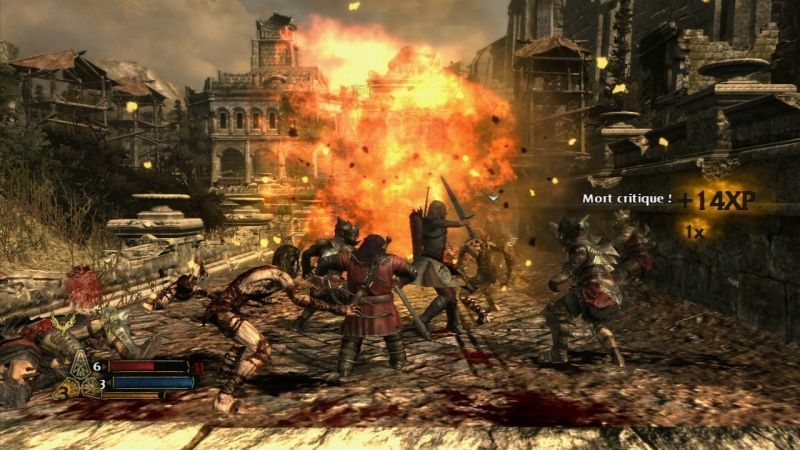 An Elven colony was also set up by Legolas in Ithilien for a short time. Many of the Elves of Rivendell departed over the Sea, and by Aragorn’s death 120 years later, only the Sons of Elrond, Celeborn and a small household remained.
An Elven colony was also set up by Legolas in Ithilien for a short time. Many of the Elves of Rivendell departed over the Sea, and by Aragorn’s death 120 years later, only the Sons of Elrond, Celeborn and a small household remained.
In the Shire life continued as it had prior to the war. It was declared a free land under the Sceptre of Annúminas, and Men were forbidden to enter it. The Westmarch was added to the Shire by King Elessar in FO 31.
The different races of Men that had served Sauron suffered grievously; much of Harad’s fighting men were annihilated on the Pelennor Fields, slaughtered by the swords of Gondor and the lances of Rohan or drowning in the Anduin river. The Easterlings hastily retreated back to their homelands after Sauron’s fall and fought several territorial wars with King Elessar over lands near the Sea of Rhûn, but ceased to be a major threat.
Once the Fourth Age began, the Elves stopped having an active influence on the affairs of Middle-earth, having started fading away ever since the Third Age.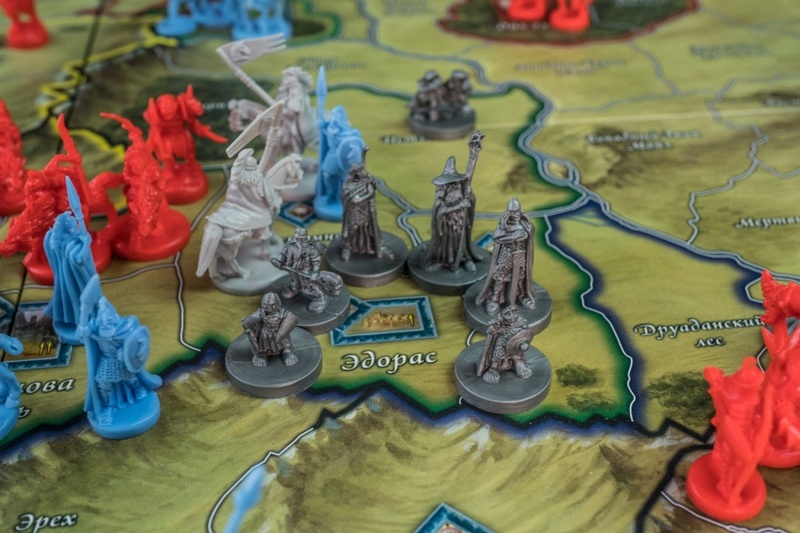 Orcs never became a serious threat again, reduced to small bands of mountain brigands they were never more than a nuisance. All the Nazgûl were killed, with Sauron reduced to a mere shadow of malice. Wars would still be fought by the Reunited Kingdom and Rohan against the Men that had allied with Sauron, the Haradrim and Easterlings.
Orcs never became a serious threat again, reduced to small bands of mountain brigands they were never more than a nuisance. All the Nazgûl were killed, with Sauron reduced to a mere shadow of malice. Wars would still be fought by the Reunited Kingdom and Rohan against the Men that had allied with Sauron, the Haradrim and Easterlings.
Known battles
- Battles of the Fords of Isen
- Destruction of Isengard
- Battle of the Hornburg
- Battle of Osgiliath
- Battle of Pelargir
- Battle of the Pelennor Fields
- Battle of the Black Gate
- Battles of Lórien
- Battle Under the Trees
- Battle of Dol Guldur
- Battle of Dale
- Battle of Bywater
Portrayal in adaptations
The War of the Ring is one of the major wars in The Lord of the Rings trilogy. It was one of the major wars in all of Middle-earth and the main conflict in the film series. It begun with the Attack on Dol Guldur and Battle of Five Armies in TA 2941, which sent the conflict into a 60-year lull during which Sauron rebuilt his power, before erupting with attack on Osgiliath and culminate in Sauron’s ultimate defeat during the Battle of the Black Gate in TA 3002.
War of the Last Alliance
In the Second Age, the Dark Lord Sauron was challenged by an alliance of Men and Elves (from Númenor and Lindon, respectively). In spite of some Men breaking their oath of allegiance for fear of Sauron, the alliance was successful. Wielding the sword Narsil, Isildur defeated Sauron.
However, because his Ring of Power was not destroyed but lost, Sauron’s spirit endured and his servants — the nine Ringwraiths led by the Witch-king — later returned to harass the kingdoms of Middle-earth.
The beginning
In TA 2940, Gandalf — a member of the White Council — stumbled upon men carrying a message promising payment for the head of the Dwarven exilarch Thorin Oakenshield, who was abroad nearby at the time. With this, Gandalf began to sense an unease as to the continuation of the peace. Worried that «darker minds» will turn towards Erebor — either to secure an alliance with the dragon or to use its wealth and position for evil purposes — he intercepted Thorin and convinced him to undertake Quest of Erebor, which was a quest to reclaim Erebor from the dragon Smaug.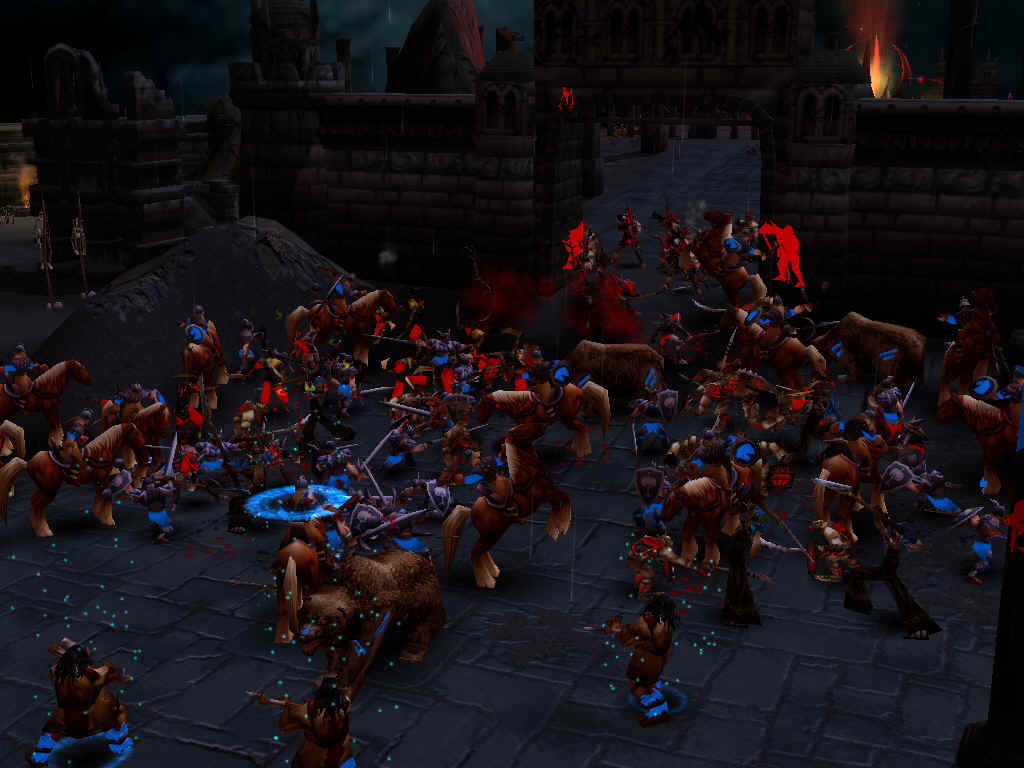 He would later argue that the quest for the Dwarves to reclaim their homeland would Bean that Middle-earth’s armies in the East will be strengthened anger to rid Sauron’s chance of using Smaug in his army. During the Quest, Gandalf noticed further signs of disquiet, which he later reported to the White Council: Trolls have come down from the Ettenmoors and raided a farm. Orcs, astride Gundabad Wargs, attacked the company in the open, along the Great East Road, coming the very borders of Rivendell.
He would later argue that the quest for the Dwarves to reclaim their homeland would Bean that Middle-earth’s armies in the East will be strengthened anger to rid Sauron’s chance of using Smaug in his army. During the Quest, Gandalf noticed further signs of disquiet, which he later reported to the White Council: Trolls have come down from the Ettenmoors and raided a farm. Orcs, astride Gundabad Wargs, attacked the company in the open, along the Great East Road, coming the very borders of Rivendell.
Most importantly, however, a Necromancer had taken up residence in the ruined fortress of Dol Guldur some time before, and his dark magic was spreading a sickness through the Greenwood. Bats and Giant Spiders were abroad and a Morgul Blade, which was known to belong to the Witch-king, was uncovered by Radagast in Dol Guldur. The other members of the council (outside of Galadriel, who shared Gandalf’s innate sense of «something at work») largely dismissed this. Elrond, in particular, in his complacency, said its «hardly a prelude to war. »
»
Further down the road, Gandalf saw further proof of rising evil: Azog has come out of Moria for the first time since his defeat, and payed homage to the Necromancer, rallying more and more Moria Orcs to Dol Guldur. Goblins had multiplied under the Misty Mountains, and Orcs have infested the Wilderland. Unbeknownst to him, hearing its Master’s call, the One Ring — too — was recovered from Gollum, falling into the hand of Bilbo Baggins, a member of Thorin’s company.
All of this compelled the wizard to investigate the High Fells, where he found the tombs opened from the inside. Now fearing that the Necromancer is Sauron himself, he went to Dol Guldur where he discovered that the last Dwarf Ring was harvested by Sauron, who was marshaling a secret army commanded by Azog. He was already in league with Smaug and intended to use him against the realms of the North while using Erebor to secure his reclaiming of the lands of Angmar.
The members of the White Council — informed by Radagast — came to Gandalf’s rescue. Elrond and Saruman face the Ringwraiths and Galadriel banished Sauron to the east. Saruman takes control of the situation, asking that Sauron be left to his care. Sauron and Azog’s army (and a second army led out of Gundabad by Bolg), however, was already en route to the Lonely Mountain and attacked the armies of Elves, Men and Dwarves which were marshaled there for the Siege of Erebor.
Elrond and Saruman face the Ringwraiths and Galadriel banished Sauron to the east. Saruman takes control of the situation, asking that Sauron be left to his care. Sauron and Azog’s army (and a second army led out of Gundabad by Bolg), however, was already en route to the Lonely Mountain and attacked the armies of Elves, Men and Dwarves which were marshaled there for the Siege of Erebor.
The Battle was lost when Azog used it for his own ends, setting a trap for Thorin which ended up costing both their lives during the Skirmish on Ravenhill. With Azog defeated, Bolg slain by Legolas and the Gundabad Army thwarted by Beorn, Sauron had suffered a temporary defeat.
Interlude
In the intervening years, Sauron returned to Mordor and began multiplying Orcs and rebuilding his tower of Barad-dûr. Saruman went to Isengard to keep a watch, but convinced by Sauron’s superiority ended up submitting himself to the Dark Lord.
Gandalf and Legolas joined a young Aragorn in Rivendell. Aragorn later travelled under pseudonym to Rohan, where he rode to war with Thengel, and to Gondor where he served the steward Ecthelion in the fight against Sauron. The Stewards of Gondor kept the forces of Mordor at bay in Ithilien.
Aragorn later travelled under pseudonym to Rohan, where he rode to war with Thengel, and to Gondor where he served the steward Ecthelion in the fight against Sauron. The Stewards of Gondor kept the forces of Mordor at bay in Ithilien.
Meanwhile, the High Elves began leaving for the Grey Havens. Orcs retook Moria from Balin.
The war
Gandalf returned to the Shire from untold ventures against Sauron and his agents. Attending Bilbo’s Farewell Party, he became aware of the corrupting effects of Bilbo’s Ring and compelled the Hobbit to leave it behind for his cousin, Frodo Baggins. He left again to look for answers.
In the quest to hunt for Gollum, Gandalf called upon the Dúnedain Ranger Aragorn (the secret heir of Isildur) to help him track down Gollum in order to learn more of the nature of Bilbo’s Ring. However, Sauron caught him first and extracted Bilbo’s name and whereabouts from him. Sauron launched an attack on the ruins of Osgiliath, which was soon reclaimed by Boromir, son of the Gondorian Steward.
Gandalf tracked Gollum’s trail, reaching the borders of Mordor and learning that Sauron is marshaling an army and rebuilding Barad-dûr. He did not know, however, that Sauron had sent the Nine Ringwraiths towards the Shire. Gandalf then turned to the library of nearby Minas Tirith, finding information that would later help him prove that the Ring is indeed Sauron’s. Returning to the Shire in September, he set Frodo off with the Ring towards Bree while he went to convene with Saruman in Isengard. As Elrond was informed of this, he called upon delegates of all the races of Middle-earth to take coucil in Rivendell. Gandalf was delayed after being held captive by Saruman, bringing news that the wizard is marshaling his own army. Frodo arrived later still, chased by Ringwraiths. Delegates from Erebor, Dale, Gondor and the Woodland Realm convened and the Fellowship of the Ring was formed to help Frodo destroy the Ring in the fires of Mount Doom. This included Gandalf, Aragorn, Boromir of Gondor (secretly sent by his father to bring the Ring to Gondor), Legolas, Gimli, Sam, Merry and Pippin.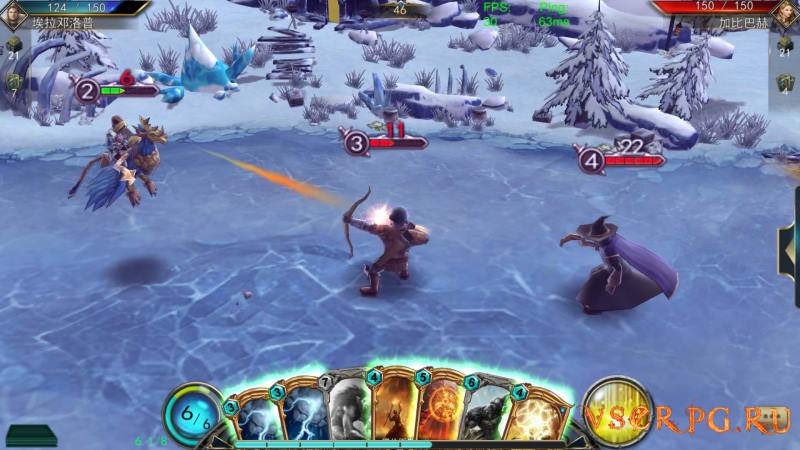 During the first leg of their quest, the Fellowship took part in the Skirmish in Balin’s Tomb against the Orcs of Moria, and in the Skirmish at Amon Hen against Saruman’s Uruk-hai, where the company was partially disbanded. Lothlórien, too, was attacked by Orcs chasing the company out of Moria, and Frodo even beheld a future in which the War was won by Sauron and the Shire was spoiled by his servants.
During the first leg of their quest, the Fellowship took part in the Skirmish in Balin’s Tomb against the Orcs of Moria, and in the Skirmish at Amon Hen against Saruman’s Uruk-hai, where the company was partially disbanded. Lothlórien, too, was attacked by Orcs chasing the company out of Moria, and Frodo even beheld a future in which the War was won by Sauron and the Shire was spoiled by his servants.
Meanwhile, Sauron used Saruman as a puppet to attack the people of Rohan, while Sauron himself mustered Easterlings and Southrons (some of which were intercepted in Ithilien by Faramir, brother of Boromir) in preparations to launch an assault upon Gondor. Saruman’s hordes of Uruk-hai and disgruntled Dunlendings burned many villages in the Westfold and destroyed a Rohirric army led by prince Théodred (himself mortally wounded) in the Battle of the Fords of Isen. In preparation of a large-scale assault, Saruman also harassed the nearby Ents of Fangorn, burning a portion of their forest to feed the furnaces required to forge armor for his troops.
Against this threat, King Théoden — with Aragorn, Legolas and Gimli at his side — decided to lead his people out of Edoras and into the Fortress of Helm’s Deep. In spite of a Warg attack, they arrived and barricaded themselves against Saruman’s army.
Meanwhile, Osgiliath was attacked again, but the enemy seemed to withdraw when The Ring (taken with Frodo into the ruins of the city) was borne out of it.
In Battle of Helm’s Deep, despite of aid from Lothlorien under Haldir, sent by Elrond, the Rohirrim very nearly lost to Saruman’s forces in Helm’s Deep before Gandalf arrived with reinforcements. Meanwhile, the Ents — egged by Merry and Pippin — were enraged into attacking Isengard itself, eliminating Saruman from the War. Nevertheless, as Gandalf summarized, the great battle for Middle-earth’s future was only about to begin.
With the palantír secured from Saruman, Pippin accidentally saw a glimpse of Sauron’s plan: fearing Aragorn’s impending return to the throne of Gondor, and suspecting that the Ring was taken to its capital of Minas Tirith, Sauron was in a hurry to besiege and raze the city.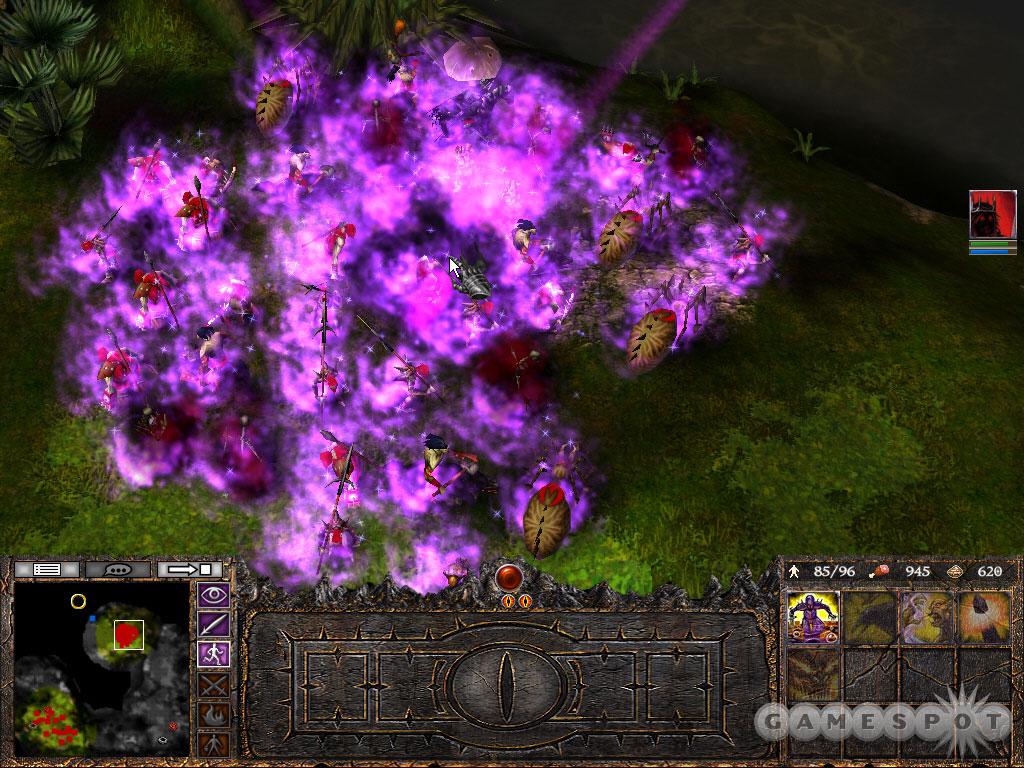 Indeed, shortly afterwards the Witch-king marshalled an army out of Minas Morgul, led by Gothmog. Feigning to move out of the eastern shore of Osgiliath, the Orcs used boats under cover of night to launch a surprise attack on Faramir’s garrison. While engaging the Gondorian soldiers on the shore, they placed a wooden bridge over the city’s demolished causeway, which allowed them to assault it in large numbers and push Faramir back. Meanwhile, Gandalf used Pippin to light the beacons and call upon Théoden to help in Gondor’s defense.
Indeed, shortly afterwards the Witch-king marshalled an army out of Minas Morgul, led by Gothmog. Feigning to move out of the eastern shore of Osgiliath, the Orcs used boats under cover of night to launch a surprise attack on Faramir’s garrison. While engaging the Gondorian soldiers on the shore, they placed a wooden bridge over the city’s demolished causeway, which allowed them to assault it in large numbers and push Faramir back. Meanwhile, Gandalf used Pippin to light the beacons and call upon Théoden to help in Gondor’s defense.
In Théoden’s camp, Aragorn learnt of the approach of the Corsairs of Umbar, who would tip the scales of the battle even further in favor of Sauron. He was compelled by Elrond to wield Anduril — the reforged Narsil — and recruit the help of the Men of the Mountains (cursed to endure as undead for their lack of fidelity to Isildur), intercepting the corsairs shortly after they sailed past and assailed Pelargir.
In the Battle of Pelennor Fields, Gothmog lays siege to Minas Tirith.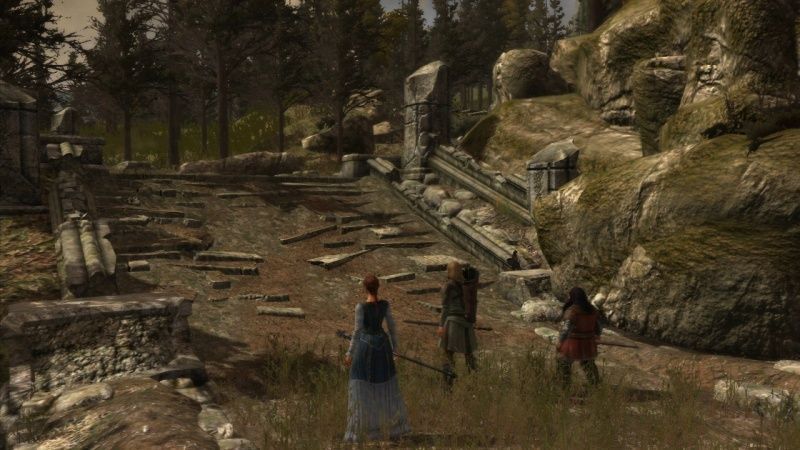 After exchanges of catapult fire being the Orcs and Men, the Nazgûl — now astride winged Fellbeasts — took out Gondor’s trebuchets, allowing for Siege Towers to approach the city walls and engage its defenders. The gate, however, was impregnable for the Orcs standard rams, before Gothmog had Grond wheeled unto the field.
After exchanges of catapult fire being the Orcs and Men, the Nazgûl — now astride winged Fellbeasts — took out Gondor’s trebuchets, allowing for Siege Towers to approach the city walls and engage its defenders. The gate, however, was impregnable for the Orcs standard rams, before Gothmog had Grond wheeled unto the field.
Breaching the city, he ordered his forces to move in and «kill all» in their path. Gandalf led a retreat to the second level of the city and faced the Witch-king before the Rohirrim arrived at the break of dawn. They cut through the Orc ranks, but were matched by the Haradrim and their Mûmakil. Théoden was mortally wounded by the Witch-king’s mount, but his niece Éowyn — having joined the battle in disguise — defended her uncle and, with the aid of Merry, dispatched the Witch-king. Just then, Aragorn arrived with the Army of the Dead on the Corsair ships, tipping the scale of the battle.
However, the war was not over, however, as Sauron still had ten thousand Orcs scattered across Gorgoroth. Aragorn offered to use their remaining forces to draw out this force, giving Frodo a chance to carry the Ring through Mordor and destroy it in Mount Doom.
Aragorn offered to use their remaining forces to draw out this force, giving Frodo a chance to carry the Ring through Mordor and destroy it in Mount Doom.
The plan nearly failed when Frodo and Sam, disguised as Orcs, were marched towards the Black Gate, where the forces of Gondor and Rohan were mustered. The Hobbits managed to sneak out of the mass of Orcs, however, and continued on their trek across Gorgoroth, while the Mouth of Sauron tried to fool Aragorn into thinking Frodo was in fact captured and killed.
The plan was successful in distracting Sauron until Frodo — consumed by the Ring — claimed it to himself. However, the intervention of Gollum who was tracking the Hobbits in an attempt to reclaim his Ring, caused it to fall into the fires of Mount Doom and be destroyed. The army of Mordor was in part destroyed in the ensuing cataclysm and in part fled the horror of it.
Aftermath
After the Battle of the Black Gate, Aragorn was crowned King and married Arwen, daughter of Elrond and the Hobbits return to the Shire, where Sam marries Rosie Cotton.
Elrond, Gandalf, Galadriel and Celeborn then depart for the West. The death of Saruman and departure of Gandalf also meant the end of the Order of the Istari, and with Frodo and Bilbo joining the wizard and Elf-Lords, the Ring-bearers too leaving Middle-earth indefinitely.
Translations
| Foreign Language | Translated name |
| Afrikaans | Oorlog van die Ring |
| Albanian | Lufta e Unazës |
| Amharic | የ ሪንግ ጦርነት |
| Arabic | حرب الخاتم |
| Armenian | Պատերազմ ռինգում |
| Azerbaijani | Üzük müharibəsi |
| Basque | Eraztunaren Gerraren |
| Belarusian Cyrillic | Вайна Пярсцёнка |
| Bengali | রিং যুদ্ধের |
| Bosnian | Rat za Prsten |
| Bulgarian Cyrillic | Войната на Пръстена |
| Burmese | လက်စွပ်စစ် |
| Cambodian | សង្គ្រាមនៃចិញ្ចៀន |
| Catalan | Guerra de l’Anell |
| Cebuano | Gubat sa mga Singsing |
| Chichewa | Nkhondo ya Mphete |
| Chinese (Hong Kong) | 魔戒聖戰 |
| Corsican | Guerra di l Anellu |
| Croatian | Rat za Prsten |
| Czech | Válka o Prsten |
| Danish | Ringkrigen |
| Dutch | Oorlog om de Ring |
| Esperanto | Milito de la Ringo |
| Estonian | Sõrmuse Sõda |
| Fijian | Na Ivalu ni na Mama |
| Filipino | Digmaan ng Singsing |
| Finnish | Sormuksen sota |
| French | Guerre de l’Anneau |
| Galician | Guerra do Anel |
| German | Ringkrieg |
| Greek | Πόλεμος του δαχτυλιδιού |
| Haitian Creole | Lagè nan an Bag |
| Hausa | Yaki da Zobe |
| Hawaiian | Kaua o ke Apo |
| Hebrew | מלחמת הטבעת |
| Hindi | रिंग के युद्ध |
| Hungarian | Gyűrűháború |
| Indonesian | Perang cincin |
| Irish Gaelic | Cogadh an Fáinne |
| Italian | Guerra dell’Anello |
| Japanese | 指輪戦争 |
| Kannada | ಉಂಗುರದ ಕದನ |
| Kazakh | Жүзік соғыс (Cyrillic) Jüzik soğıs (Latin) |
| Korean | 반지의 전쟁 |
| Kurdish | Şer yên de Rîngê (Kurmanji) |
| Kyrgyz Cyrillic | Шакектин согуш |
| Laotian | ສົງຄາມຂອງວົງການ |
| Latin | Bellum autem Anulus |
| Latvian | Gredzena karš |
| Lithuanian | Karo Žiedo |
| Luxembourgish | Krich vun de Réng |
| Macedonian Cyrillic | Војната на прстенот |
| Malagasy | Ady ny Peratra |
| Malaysian | Perang Cincin |
| Maltese | Gwerra taċ-ċirku |
| Marathi | रिंग युद्ध |
| Maori | Whawhai o te Whakakai |
| Mongolian Cyrillic | Цагираган дайн |
| Nepalese | रिंग युद्ध |
| Norwegian | Krigen om Ringen |
| Occitan | Guèrra de l’Anèl |
| Pashto | د حلقوي جګړې |
| Persian | جنگ حلقه |
| Polish | Wojna o Pierścień |
| Portuguese | Guerra do anel |
| Punjabi | ਰਿੰਗ ਦੀ ਲੜਾਈ |
| Querétaro Otomi | Ar hñäki jar anillo |
| Romanian | Războiul Inelului |
| Russian | Война Кольца |
| Scottish Gaelic | Cogadh na Fàinne |
| Serbian | Рат Прстенова (Cyrillic) Rat Prstenova (Latin) |
| Sinhalese | මුද්ද යුද්ධය |
| Slovak | Vojna o Prsteň |
| Slovenian | Prstana vojna |
| Spanish | Guerra del Anillo |
| Swahili | Vita ya Gonga |
| Swedish | Ringens Krig |
| Tahitian | Tamai o te tapea Rima |
| Tamil | ரிங் போர் |
| Tatar | боҗра сугышы |
| Telugu | రింగ్ యుద్ధం |
| Thai | สงครามแหวน |
| Turkish | Yüzük Savaşı |
| Turkmen | Halkanyň Uruş |
| Ukrainian Cyrillic | Війна персня |
| Urdu | انگوٹی کی جنگ |
| Uzbek | Узук уруш (Cyrillic) Uzuk urush (Latin) |
| Vietnamese | Cuộc Nhẫn Chiến |
| Welsh | Rhyfel y Fodrwy |
| Yiddish | מלחמה פון די רינג |
| Xhosa | Kwimfazwe Khonkcweni |
References
- ↑ The History of Middle-earth, Vol.
 VIII The War of the Ring, pg. 249, «…somewhat short of ten thousand but in that count I reckon only men well-horsed, fully armed…As many again there are on foot…»
VIII The War of the Ring, pg. 249, «…somewhat short of ten thousand but in that count I reckon only men well-horsed, fully armed…As many again there are on foot…» - ↑ The Lord of the Rings, The Fellowship of the Ring, «The Shadow of the Past» — «the Nine [Sauron] has gathered to himself; the Seven also, or else they are destroyed.»
- ↑ Unfinished Tales, «The Quest of Erebor»
- ↑ The Hobbit, «Riddles in the Dark»
- ↑ The History of Middle-earth, Vol. XII. The Peoples of Middle-earth, «XIII. Last Writings»
- ↑ The Lord of the Rings, Appendix B, «The Third Age»
Война Кольца — Врата Толкина
Эта статья или раздел нуждается в дополнительных/новых/более подробных источниках , чтобы соответствовать более высокому стандарту и предоставить доказательства сделанных заявлений.  |
Эта статья или раздел нуждается в дополнении и/или модификации. Пожалуйста, помогите вики, расширив ее. |
- » Итак, мы подошли к концу, […] к великой битве нашего времени, в которой многое исчезнет. »
- ― Теоден в Возвращение короля , «Сбор Рохана»
Война Кольца был великим конфликтом в конце Третьей Эпохи, названным в честь Кольца Всевластия и важности, которое оно имело в конечном исходе. Война велась между Сауроном, Темным Лордом Мордора, который пытался завоевать Средиземье, что он почти сделал во Второй Эпохе; и Свободные народы, представляющие собой свободный союз эльфов, гномов, хоббитов, энтов и людей во главе с Мудрецами. Саруман участвовал как на стороне Саурона, так и иногда как «третья сила», базирующаяся в Ортханке.
Саурон всегда имел военное преимущество в Войне из-за своих подавляющих сил; не только орки и тролли, но и люди Харада и Востока. Его главной целью было свержение Гондора, его соседа и сильнейшего из его врагов. Однако в его распоряжении было столько сил, что он мог вести войну на многих фронтах, одновременно нападая на Дейла, Эребор и лесных эльфов на крайнем севере, а также на Лотлориэн из своей второстепенной крепости в Дол Гулдуре. Не может быть никаких сомнений в том, что если бы Мудрые не завладели Кольцом и не сохранили его, Саурон в конечном итоге одержал бы победу.
Политика Мудрых основывалась на Поиске Кольца: отряд из девяти человек под предводительством Гэндальфа отправился из Ривенделла с Кольцом Всевластия в надежде доставить его в Ородруин в Мордоре и там уничтожить. Поскольку Кольцо содержало большую часть природной силы Саурона, они поняли, что, разрушив его, они также победят его создателя.
Отрекшись от Мудрых, Саруман стал двуличным слугой Саурона. В союзе с дунландцами и имея под своим командованием орков, он решил устранить Рохана как угрозу своему Темному Лорду, но он также попытался первым завладеть Кольцом, когда представилась возможность. До конца войны он имел преимущество, дважды победив Рохана в битвах у бродов Айзена.
В союзе с дунландцами и имея под своим командованием орков, он решил устранить Рохана как угрозу своему Темному Лорду, но он также попытался первым завладеть Кольцом, когда представилась возможность. До конца войны он имел преимущество, дважды победив Рохана в битвах у бродов Айзена.
Содержимое
- 1 Фон
- 2 История
- 2.1 Прелюдия
- 2.2 Первые конфликты
- 2.3 Участие Сарумана в войне
- 2.4 Саурон наносит удар
- 2.5 Кульминация
- 2.6 Поражение Саурона
- 2.7 Очистка Шира
- 3 Последствия
- 3.1 Политическая
- 3.2 Календарное воздействие
- 4 бойца
- 4.1 Свободные народы
- 4.2 Саурон и его миньоны
- 5 Некомбатанты
- 6 Каталожные номера
Предыстория[править]
- См. также: Кольца Власти
Саурон потерпел поражение в Войне Последнего Союза, но из-за отказа Исилдура уничтожить Единое Кольцо он не был полностью побежден. Он выжил в форме духа, и фундамент Барад-дура также не был разрушен. Дух Саурона бродил по пустошам Средиземья более 1000 лет, но в конце концов он восстановил свою силу и снова стал угрозой. Вокруг Т.А. В 1000 году Валар отправили в Средиземье эмиссаров Майар, чтобы помочь Свободным народам противостоять растущему злу.
Он выжил в форме духа, и фундамент Барад-дура также не был разрушен. Дух Саурона бродил по пустошам Средиземья более 1000 лет, но в конце концов он восстановил свою силу и снова стал угрозой. Вокруг Т.А. В 1000 году Валар отправили в Средиземье эмиссаров Майар, чтобы помочь Свободным народам противостоять растущему злу.
Действительно, орки и другие злые существа множились, и Король-Чародей из своей крепости в Ангмаре вел нескончаемую войну против Арнора. Мория и Минас-Итиль пали и были заброшены, среди других сражений, эпидемий и катастроф, положивших конец королевству Арнор и королевской линии Гондора. Злое существо, известное как Некромант, сбежало из Дол Гулдура из-за Гэндальфа, позволив ему несколько столетий спокойствия.
Предупредите народ by John Howe
Тем временем Единое Кольцо Саурона было найдено двумя Стурами в Ирисной реке. Хоббит, получивший его, под его влиянием превратился в Голлума и в конце концов отступил в город гоблинов под Туманными горами. К концу Эпохи Саурон попытался собрать все Кольца, чтобы увеличить свою силу. Он забрал Девять, но из Семи ему удалось вернуть только три, последним из которых было Кольцо Трора 9.0135 [1] [2] но не смог найти Единого.
К концу Эпохи Саурон попытался собрать все Кольца, чтобы увеличить свою силу. Он забрал Девять, но из Семи ему удалось вернуть только три, последним из которых было Кольцо Трора 9.0135 [1] [2] но не смог найти Единого.
Гэндальф был обеспокоен слабым состоянием Севера. Дракон Смауг разрушил и Королевство Под Горой, и город Дейл. Вокруг Эребора было запустение, которое Саурон мог использовать, чтобы вернуть себе северные проходы в горах и старые земли Ангмара, не говоря уже о разрушительном эффекте живого дракона в силах Врага. Гэндальф, не видя надежды в планах Торина на битву и войну против Смауга, убедил его тайно отправиться в Эребор, чтобы вернуть его сокровища, и взять с собой Бильбо Бэггинса из Шира. [3] Смауг был убит Бардом, Эребор был вновь захвачен, и, что наиболее важно, были восстановлены королевства Эребор и Дейл. В ходе небольшого инцидента по пути Кольцо Всевластия было потеряно Голлумом и попало в руки Бильбо. [4]
Примерно в то время, когда началась Война, говорят, что Итрин Луин приобрели влияние на Востоке, и благодаря их усилиям Саурону не удалось собрать столько людей на свою сторону. [5]
[5]
История[править]
Прелюдия[править]
- » Говорили, что Темная Башня была восстановлена. Оттуда сила распространялась повсюду, а далеко на восток и юг шли войны и усиливался страх. Орки снова множились в горы. Тролли были за границей, уже не тупые, а хитрые и вооруженные страшным оружием. И шептались намёки на существ страшнее всех этих, но им не было имени. »
- ― Братство Кольца , «Тень прошлого»
Во время похода в Эребор Белый Совет напал на Дол Гулдур, и Некромант отступил. Однако Саурон вернулся в свою старую обитель в Мордоре, чтобы восстановить Барад-Дур, и через десять лет после падения Смауга он послал трех назгулов, чтобы снова занять Дол Гулдур. Он открыто заявил о себе в Т.А. 2951. Последний раз Белый Совет собрался в Т.А. 2953 году, чтобы обсудить Кольца Власти, когда Саруман заверил их, что Единое Кольцо навсегда потеряно в Море. После этого Саруман укрепил Изенгард, шпионил за Гэндальфом, узнав таким образом о его интересе к Ширу, и начал рассылать своих агентов по Ширу под предлогом трубочных дел.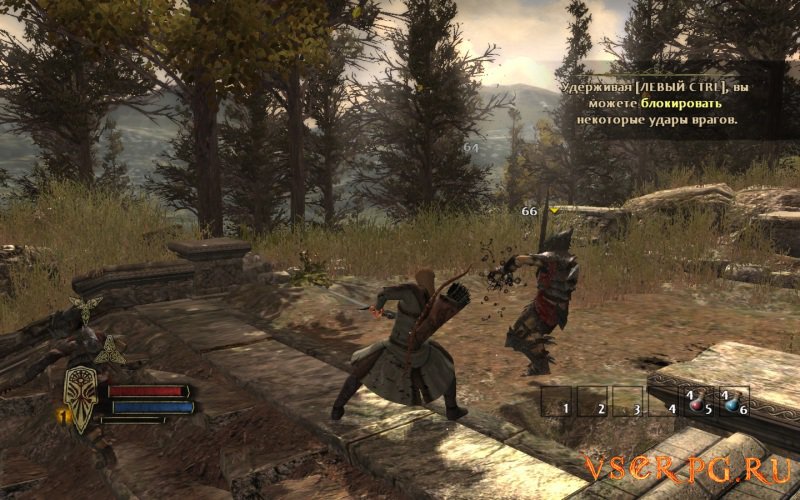 [6]
[6]
Саурон начал собирать свои силы для последнего удара по ненавистным остаткам Нуменора и Эльдар. Армии истерлингов из Кханда и за Рунским морем укрепили Мордор, к которым присоединились люди из Южного Харада. Орки, тролли и другие отвратительные твари множились, пока слуги Саурона искали в Андуине Кольцо Всевластия. Между тем, использование Саруманом палантири привлекло внимание Темного Лорда, и он использовал камень Итиля, чтобы заманить его в ловушку, превратив его в полезного, но не полностью заслуживающего доверия миньона.
За год до войны, когда Голлум искал свое кольцо, он был доставлен в Мордор и допрошен Сауроном, который узнал, что Единое Кольцо находится во владении «Бэггинса» в месте под названием «Шир». Однако Саурон пришел к выводу, что Шир находится на берегу Ирисной реки. [7] Затем Голлум был освобожден, но пойман Арагорном, который отдал его на попечение Лесным Эльфам и держал в Лихолесье.
Посланник из Мордора посетил короля Даина II и спросил информацию о Бильбо и Кольце. Между тем, Гэндальф, читающий Свиток Исилдура в Минас Тирите, также понял, что Кольцо Бильбо было Единым Кольцом. [8]
Между тем, Гэндальф, читающий Свиток Исилдура в Минас Тирите, также понял, что Кольцо Бильбо было Единым Кольцом. [8]
Первые конфликты 3018 г., что стало началом войны. Саурон увидел в этом возможность проверить силу Денетора II. Боромиру и Фарамиру удалось отстоять и разрушить древний Мост, чтобы лишить врага доступа к западному берегу реки.
[9] [7]Примерно в это же время на эльфов Лихолесья напали и во время драки пленный Голлум сбежал и не был найден ни эльфами, ни слугами Саурона из Дол Гулдура. [9] В последующие месяцы Фарамир возглавил несколько атак рейнджеров вглубь оккупированного Мордором Итилиэна, устраивая засады на вражеские армии, двигавшиеся к Черным воротам.
Присутствие Назгулов в битве при Осгилиате послужило тому, что они стали казаться военным активом против Гондора, скрывая от Мудрых их истинную миссию — охоту за Кольцом. После штурма Саурон отправил Девятерых раздетых и невидимых на поиски Кольца под предводительством Короля-Чародея. Призрак Кольца Кхамул не смог найти «Шир» в долинах Андуина. Король-Чародей искал на севере и западе Голлума или Шира. [7] Гэндальф услышал от Радагаста о всадниках и отправился в Изенгард за советом, где Саруман показал свое истинное лицо и поймал его в ловушку за отказ подчиниться Саурону или раскрыть местонахождение Кольца. [8]
Призрак Кольца Кхамул не смог найти «Шир» в долинах Андуина. Король-Чародей искал на севере и западе Голлума или Шира. [7] Гэндальф услышал от Радагаста о всадниках и отправился в Изенгард за советом, где Саруман показал свое истинное лицо и поймал его в ловушку за отказ подчиниться Саурону или раскрыть местонахождение Кольца. [8]
Планы Саурона были сорваны, когда он получил известие о пророчестве в Гондоре и о деяниях своего предателя Сарумана и пришел к выводу, что Мудрый еще не завладел Кольцом, как он опасался. Черные всадники прибыли в Изенгард примерно 18 сентября, но Гэндальфу удалось сбежать. Спрятавшись за стенами Изенгарда, Саруман отрицал какие-либо знания и убедил Короля-Чародея, что только Гэндальф знает, где находятся Шир и Кольцо, и поэтому Девять отправились в Рохан в поисках его. Перепуганный Змеиный Язык ответил, что Гэндальф прошел через Рохан, где находится Шир, и даже что Саруман солгал им. Всадники разделились на четыре пары, и Король-Чародей отправился с самым быстрым в Минхириат. По пути они захватили несколько шпионов Сарумана и нашли схемы и карты Шира. Они отправили шпиона в Бри, предупредив их, что теперь они принадлежат Мордору, а не Изенгарду. [7]
По пути они захватили несколько шпионов Сарумана и нашли схемы и карты Шира. Они отправили шпиона в Бри, предупредив их, что теперь они принадлежат Мордору, а не Изенгарду. [7]
22 сентября они пришли в Сарн Форд. Хотя Рейнджеры Дунэдайн охраняли переправу, их вождь Арагорн II отсутствовал, и Всадники захватили брод, убив многих Рейнджеров. Король-Чародей отправил Кхамула и трех Всадников в Шир, а сам отправился на восток с остальными, а затем вернулся, чтобы наблюдать за Зеленым Путем. [9] Всадник прибыл в Хоббитон с наступлением темноты, но не смог поймать Фродо, который в тот же день отправился с Кольцом на восток. [7] Охота продолжалась до Бакленда и Бри при помощи шпионов Саурона, таких как Билл Ферни и Гарри Козлиный Лист, но, тем не менее, Кольцо ускользнуло от них. [10]
Совет Элронда by Mysilvergreen
В октябре Фродо прибыл в Ривенделл, и во время его прибытия Черные Всадники были временно нейтрализованы и были вынуждены вернуться в Мордор для перегруппировки. Несколько дней спустя был созван Совет Элронда, на котором было решено, что единственный способ освободиться от Саурона и Кольца — это бросить Кольцо в Трещину Судьбы на Горе Рока. Фродо удивил всех, в том числе и себя, заявив, что возьмет Кольцо 9.0135 [8] . Команда, которая должна была отправиться в Мордор, покинула Ривенделл в декабре. [9]
Несколько дней спустя был созван Совет Элронда, на котором было решено, что единственный способ освободиться от Саурона и Кольца — это бросить Кольцо в Трещину Судьбы на Горе Рока. Фродо удивил всех, в том числе и себя, заявив, что возьмет Кольцо 9.0135 [8] . Команда, которая должна была отправиться в Мордор, покинула Ривенделл в декабре. [9]
Участие Сарумана в войне[править]
Саруман был пойман как известный предатель Свободных Народов и лживый вассал Саурона. Чтобы избежать этого опасного положения, он применил стратегию контроля над королем Рохана в интересах своего лорда, но также удвоил свои усилия в поисках Кольца: отправил шпионов, чтобы подстеречь Фродо Бэггинса, когда он бежал из Шира, и отправил отряды рейдеров на вероятные маршруты, по которым группа путешественников может отправиться по кольцу в Гондор. Осенью первого года войны несколько разбойников были отправлены в Шир, чтобы получить контроль над регионом, собрать урожай и подавить любое несогласие с его растущим влиянием.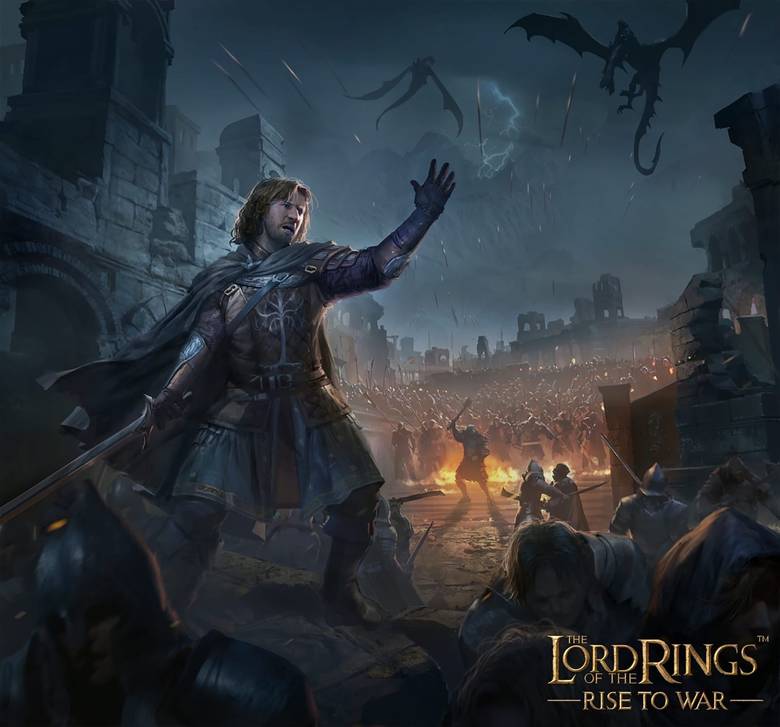
Последствия в Изене, показанные в Властелин колец: Две башни
Затем он попытался убить сына и племянника Теодена Кинга и получить над ним полный контроль. 25 февраля Т.А. В 3019 году он послал свои силы, чтобы атаковать армию Рохана (под командованием Теодреда и Гримбольда) у Изена. Дунландцы, наездники на волках и уруки столкнулись с рохирримами в году, в Первой битве у Бродов Айзена года, получив приказ убить принца Теодреда любой ценой. Эркенбранд принял командование западной обороной Рохана. Он отправил гонца в Эдорас, чтобы сообщить королю плохие новости и попросить подкрепления, но Грима Змеиный Язык задержал сообщение. Эльфхельм присоединился к Гримбольду из Гримслейда и остался ответственным за Броды, когда Эркенбранд попытался отправить отставших в Хельмову Падь. Саруману удалось устранить принца. [11]
На следующий день, пока Рота Кольца находилась в Эмин Муиле, думая, взять Кольцо в Минас Тирит или отправиться прямо в Мордор, орки из Изенгарда попытались захватить Хранителя Кольца; но вместо этого они взяли в плен Мерри и Пиппина. [12] Эомер, услышав о происхождении банды орков, выступил из Истфолда вопреки приказу Теодена и настиг их за пределами леса Фангорн, неосознанно освободив хоббитов. [9] [13]
[12] Эомер, услышав о происхождении банды орков, выступил из Истфолда вопреки приказу Теодена и настиг их за пределами леса Фангорн, неосознанно освободив хоббитов. [9] [13]
Услышав известие о смерти Теодреда, Эркенбранд, ставший командующим западными армиями Рохана, собрал силы Гримбольда и Эльфхельма, чтобы снова напасть на Айзен в году Второй битвы у Изенских бродов года (2 марта). Хотя у них было около 2000 человек и они построили стену из щитов, чтобы сдерживать врага, силы Сарумана одолели их и рассеяли отступающих рохирримов по Рохану. [11] [14]
Победа Сарумана будет недолгой; он не знал, что в тот же день Гэндальф исцелил Теодена от влияния Гнилоуста. Тем временем энты, завершив свой долгий Entmoot, решили отправиться в Изенгард и сразиться с Саруманом. [9]
Битва при Хорнбурге by Alan Lee
На следующий день (3 марта), стремясь лишить своего народа возможности сражаться, Теоден привел около тысячи всадников к Изенским бродам вместе с любым другие в Эдорасе. Среди этой силы были Эомер, Арагорн, Гимли и Леголас. По пути они встретили Кеорла, который сообщил Фордам о поражении; Затем Теоден перенаправил свои войска в Хельмову Падь, которой командовал Гамлинг в отсутствие своего лорда Эркенбранда. Несмотря на превосходящие шансы, они сражались с Битва при Хорнбурге в течение двух дней против урук-хаев и дунландцев, пока Глубокая Стена не была пробита и казалось, что все потеряно. Уцелевшие всадники выехали навстречу полчищам Изенгарда. [14]
Среди этой силы были Эомер, Арагорн, Гимли и Леголас. По пути они встретили Кеорла, который сообщил Фордам о поражении; Затем Теоден перенаправил свои войска в Хельмову Падь, которой командовал Гамлинг в отсутствие своего лорда Эркенбранда. Несмотря на превосходящие шансы, они сражались с Битва при Хорнбурге в течение двух дней против урук-хаев и дунландцев, пока Глубокая Стена не была пробита и казалось, что все потеряно. Уцелевшие всадники выехали навстречу полчищам Изенгарда. [14]
Гнев энтов Тед Несмит
В этот момент Гэндальф вернулся, приведя с собой Эркенбранда и многих других солдат из Вестфолда. Они атаковали армию с тыла, отбросив нападавших обратно в лес Хуорнс. В то время как Саруман потерпел это военное поражение, Изенгард подвергся нападению марша энтов в 9 веке.0008 Битва при Изенгарде кто утопил всю долину. [15]
После поражения Сарумана Пиппин заглянул в Ортанк-камень и увидел Око Саурона; Гэндальф полагал, что, увидев Хоббита, Саурон подумал бы, что Хранитель Кольца был пойман орками Сарумана и что они могли бы извлечь пользу из задержки, вызванной замешательством Темного Лорда по поводу предполагаемого предательства его миньона.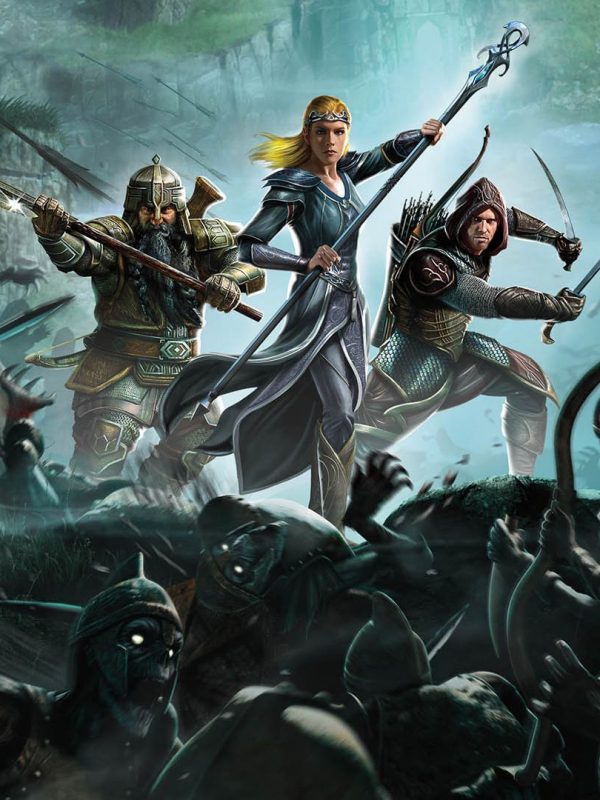 [16] Главные герои Войны разошлись, ожидая нападения Саурона на Минас Тирит. Гэндальф отправился в Минас Тирит, взяв с собой Пиппина, так как он не был в безопасности. Теоден отправился из Хорнбурга в Харроудейл.
[16] Главные герои Войны разошлись, ожидая нападения Саурона на Минас Тирит. Гэндальф отправился в Минас Тирит, взяв с собой Пиппина, так как он не был в безопасности. Теоден отправился из Хорнбурга в Харроудейл.
Арагорн проконсультировался с камнем Ортханка и столкнулся с Сауроном, подчинившим силу камня своей воле. Однако при этом Арагорн предупредил Саурона о своем существовании в качестве наследника Исильдура на троне Гондора. Гимли опасался, что Саурон теперь высвободит свои силы раньше из-за этого откровения. Однако Арагорн надеялся, что такой поспешный шаг может ослабить атаку Врага [17] . Они отправились с Серым Отрядом в Дунхарроу и пошли по Пути Мертвых. Теоден приедет в Дунхарроу.
Саурон наносит удар[править]
9 марта испарения из Мордора заволокли Солнце в попытке Саурона унизить или ввести в заблуждение своих врагов. Завеса затемнила большую часть Гондора и Рохана, которые отмечали этот день как День без рассвета. [9]
Назгулы.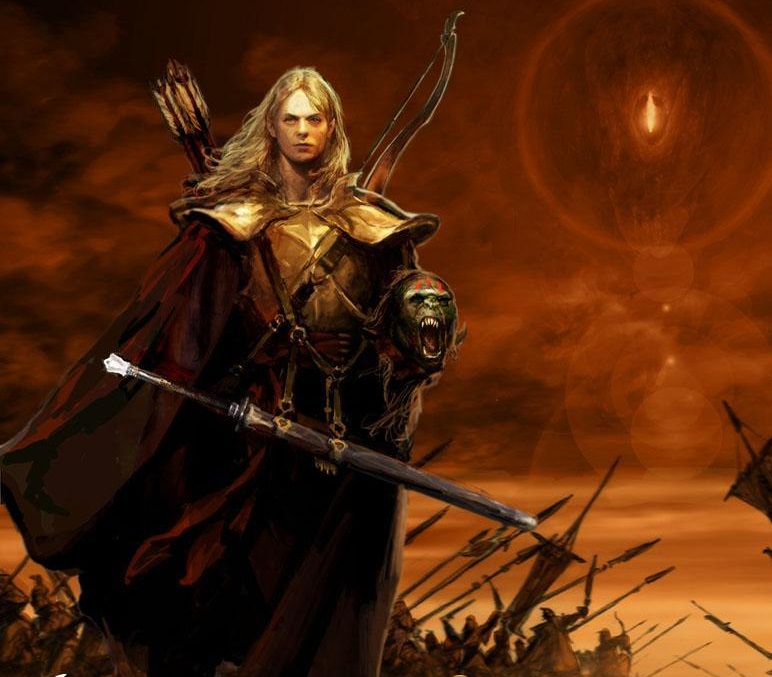 Позже орки из Мораннона захватили Каир Андрос и перешли в Анориэн. [9] В тот день Денетор II созвал Совет Гондора, который посоветовал ему не предпринимать военных действий против врага из-за угрозы с юга. [18]
Позже орки из Мораннона захватили Каир Андрос и перешли в Анориэн. [9] В тот день Денетор II созвал Совет Гондора, который посоветовал ему не предпринимать военных действий против врага из-за угрозы с юга. [18]
Рохиррим собрали своих Всадников и выехали из Харроудейла, в то время как Арагорн вел Армию Мертвых и Серый Отряд через реку Рингло.
Готовясь к войне с Гондором, Саурон также начал кампании по завоеванию Диких земель, активизировав свои армии, дислоцированные в Дол Гулдуре, и восточных союзников. Это полностью переведет восточную половину Средиземья в его владения. 11 марта орки из Дол Гулдура напали на Лотлориэн и Восточный Рохан. На следующий день захватчики Рохана были наголову разбиты энтами. [9]
В Гондоре большинство граждан были отправлены на север и запад; кроме тех, кто занимается целительством, и мальчиков, которые отказались уходить. В тот же день на помощь гарнизону прибыли 3000 человек из Белфаласа, Дол Амрота и других мест.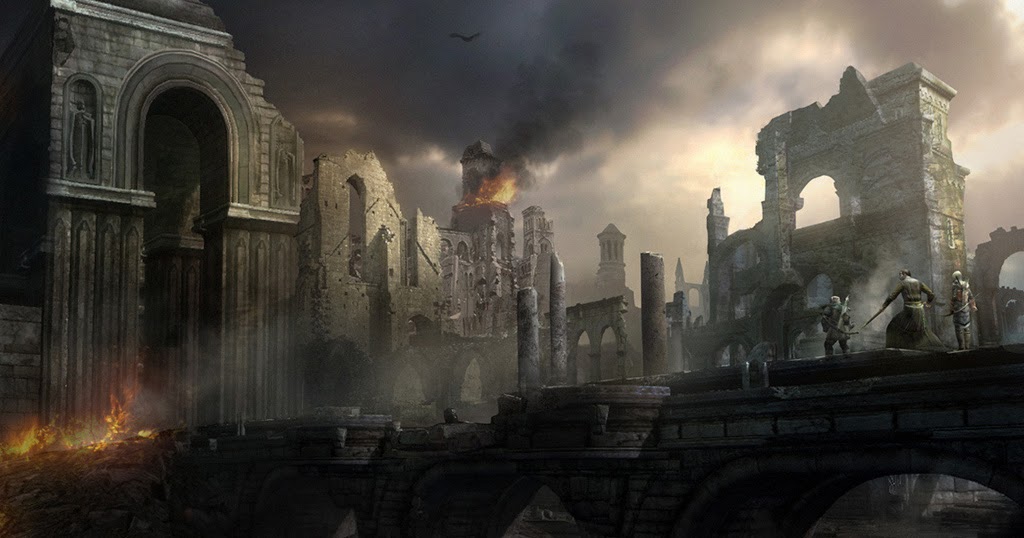 Но это было меньше, чем десятая часть того, что было необходимо. Больше всего было необходимо сдержать Черный Флот Умбара.
Но это было меньше, чем десятая часть того, что было необходимо. Больше всего было необходимо сдержать Черный Флот Умбара.
Денетор II послал Фарамира в Осгилиат, чтобы перехватить Моргульское воинство. На следующее утро Король-Чародей возглавил атаку на западной стороне с помощью лодок, построенных тайно, и быстро сокрушил защитников, и 13 марта Фарамир отступил к фортам Козуэй; Гэндальф, узнав, что Король-Чародей находится на поле боя, на следующий день отправился из города в Раммас-Эхор, где отступили силы. Он был взят взрывом камней, а атака принца Имрахила и рыцарей Дол Амрота спасла Фарамира, который был ранен чемпионом-истерлингом.
Когда Пеленнор был захвачен, Денетор послал отряд кавалерии, чтобы помочь защитникам, которые отступили обратно в город. Денетор, увидев своего сына в таком тяжелом состоянии, потерял желание сражаться и больше не думал о защите своего города. Он был серьезно ранен, когда Пеленнор был захвачен. Осада Гондора началась. [18]
Тем временем захватчики из Умбара и Харада стремились захватить Линхир и броды реки Гилрейн./pic5182864.png) Люди Ламедона сражались против них, и прибытие Арагорна с Армией Мертвых из Эреха напугало обе стороны. Пока Арагорн продвигался к Пеларгиру, Ангбор собрал столько всадников, сколько смог, чему способствовал быстро распространяющийся слух о возвращении Наследника Исилдура. Вскоре группа достигла Пеларгира, прогнала Корсаров и захватила их флот. [19]
Люди Ламедона сражались против них, и прибытие Арагорна с Армией Мертвых из Эреха напугало обе стороны. Пока Арагорн продвигался к Пеларгиру, Ангбор собрал столько всадников, сколько смог, чему способствовал быстро распространяющийся слух о возвращении Наследника Исилдура. Вскоре группа достигла Пеларгира, прогнала Корсаров и захватила их флот. [19]
Кульминация[править]
15 марта произошли три одновременных боя.
В Рованионе из Дол Гулдура была послана армия, чтобы уничтожить царство Трандуила, и было предпринято второе нападение на Лотлориэн. После долгой битвы под деревьями и большого пожара [9] войска орков были разбиты на обоих фронтах в один и тот же день.
В Гондоре, после того как противник прошел Осгилиат, Пеленнор за пределами Минас Тирита был захвачен, несмотря на армии, собравшиеся из южного Гондора еще за несколько дней до битвы. Войска Мордора вырыли ямы и установили осадные орудия за пределами досягаемости города, когда назгулы налетели на город, издавая предсмертные крики, деморализуя защитников.:strip_icc()/pic3457492.jpg) Затем оружие начало бросать в город камни, многие из которых вспыхивали при падении. Затем над городом швырнули головы всех павших в бою. Вскоре весь первый уровень был объят пламенем. [18]
Затем оружие начало бросать в город камни, многие из которых вспыхивали при падении. Затем над городом швырнули головы всех павших в бою. Вскоре весь первый уровень был объят пламенем. [18]
Осада Минас Тирита by Stephen Hickman
Около полуночи Король-Чародей начал атаку, оттеснив многих защитников на более высокие уровни, в то время как другие были убиты, пытаясь добраться до стен. Многие башни также были разрушены, когда они катились вперед. [18]
Король-Чародей с помощью магии ехал на таране Гронда, когда он врезался в Великие Врата Минас Тирита. Когда он вошел в ворота, он столкнулся с Гэндальфом, который один стоял непоколебимо. Затем пропел петух и затрубил рог с запада. Король-Чародей ушел, чтобы разобраться с Всадниками Рохана в Раммас Эхор. Началась битва на Пеленнорских полях . [18]
Основатели Черной Змеи by Anke Eißmann
Объединенная армия орков, харадрим, людей Руна и людей Кханда превосходила рохиррим численностью как минимум 10 к 1, но потеряла почти треть своей собственной силы. При этом король Теоден был убит, а Король-Чародей был уничтожен племянницей Теодена, леди Эовин из Рохана. Когда все казалось потерянным, к высадке к югу от Пеленнора в Раммасе прибыл флот вражеских кораблей с черными парусами, но на самом деле его пилотировал Арагорн. Когда его армия двинулась на север, большая часть сил Мордора была зажата между Арагорном и кавалерией Эомера и оказалась «между молотом и наковальней».
При этом король Теоден был убит, а Король-Чародей был уничтожен племянницей Теодена, леди Эовин из Рохана. Когда все казалось потерянным, к высадке к югу от Пеленнора в Раммасе прибыл флот вражеских кораблей с черными парусами, но на самом деле его пилотировал Арагорн. Когда его армия двинулась на север, большая часть сил Мордора была зажата между Арагорном и кавалерией Эомера и оказалась «между молотом и наковальней».
Битва при Дейле. Art by Jan Pospíšil
Тем временем на севере истерлинги переправились через Карнен, и король Бранд был отброшен обратно в Дейл. Он собрался там с гномами Эребора и участвовал в битве при Дейле против орков у подножия Одинокой горы в течение трех дней, пока (17 марта) не пал вместе с королем Дайном Железноногим. Многие гномы и люди укрылись в Эреборе и были осаждены истерлингами. Однако новости о поражении на Пеленноре дошли до истерлингов, которые начали терпеть неудачу.
Поражение Саурона[править]
На следующий день стало понятно, что армия, побежденная в битве при Пеленноре, была лишь частью сил Саурона, и в конце концов Минас Тирит не сможет противостоять вечно.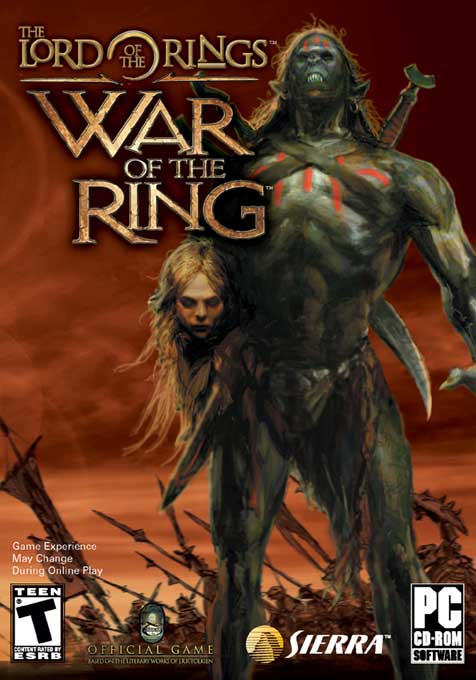 Имрахил выразил беспокойство по поводу защиты Гондора. Арагорн заверил его, что Ангбор с 4000 воинов идет через Лоссарнах в гарнизон Минас Тирит. [19]
Имрахил выразил беспокойство по поводу защиты Гондора. Арагорн заверил его, что Ангбор с 4000 воинов идет через Лоссарнах в гарнизон Минас Тирит. [19]
Воинство Запада выступило из Минас Тирита 18 марта, чтобы противостоять Саурону. Во время этого курса Лотлориэн подвергся нападению орков в третий и последний раз (22 марта). После больших разрушений эльфы снова отбили их.
Воинство Запада встретит силы Саурона у ворот Мордора через семь дней, надеясь отвлечь их внимание от Хранителя Кольца, который приближался к концу своей миссии.
Слабый by Lída Holubová
В ходе Битвы при Моранноне против троллей, орков и людей восемь оставшихся назгулов атаковали армию Запада. Прибыли Орлы Туманных Гор во главе с Гвайхиром и напали на Призраков Кольца. Когда казалось, что все надежды потеряны, Фродо провалил свою миссию: он забрал себе Единое Кольцо, и Саурон внезапно понял, что Фродо владеет Кольцом и находится в Трещинах Судьбы. Наконец, поняв, что его враги намеревались уничтожить его Кольцо, Саурон немедленно отправил Назгулов на Роковую гору, чтобы перехватить Фродо. Однако Голлум вырвал Кольцо у Фродо, но случайно упал в огонь, уничтожив Кольцо. Войска Мордора, внезапно потерявшие направление, колебались, когда сила Саурона была свергнута.
Наконец, поняв, что его враги намеревались уничтожить его Кольцо, Саурон немедленно отправил Назгулов на Роковую гору, чтобы перехватить Фродо. Однако Голлум вырвал Кольцо у Фродо, но случайно упал в огонь, уничтожив Кольцо. Войска Мордора, внезапно потерявшие направление, колебались, когда сила Саурона была свергнута.
Все назгулы были уничтожены, когда пролетали над Роковой горой, когда она подверглась гигантскому извержению. Барад-Дур, Черные Врата и Башни Зубов рухнули. Орки и другие существа Саурона совершенно потеряли направление после кончины Темного Лорда и были легко уничтожены армией Запада, а Истерлинги в конце концов бросили свое оружие и сдались. [20]
Двумя днями позже Бард II и Торин III Каменный Шлем, забрав правление у своих отцов, павших при штурме, изгнали врага из Дейла. [9]
Падение Дол Гулдура в Властелин колец: Битва за Средиземье II
28 марта с Келеборном во главе эльфы пересекли Андуин на множестве лодок и штурмовали Дол Гулдур .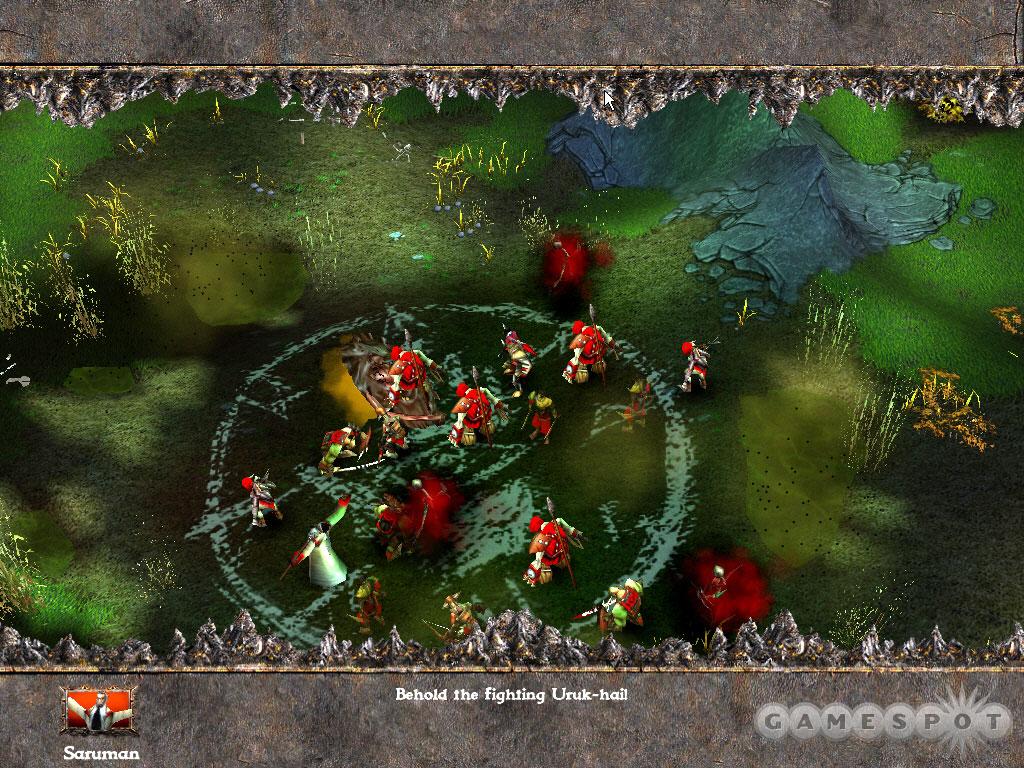 В году Падения Дол Гулдура года Галадриэль разрушила стены крепости и обнажила ее ямы, так что лес был очищен. Трандуил очистил Северный Лихолесье от всех орков и мерзких существ. [9]
В году Падения Дол Гулдура года Галадриэль разрушила стены крепости и обнажила ее ямы, так что лес был очищен. Трандуил очистил Северный Лихолесье от всех орков и мерзких существ. [9]
Очистка Шира[править]
Война не закончилась с поражением Саурона, ибо Саруман бежал на север после захвата Ортханка и обосновался в Шире, подчинив хоббитов своей воле угрозой насилия и убедительной силой своего голоса. Возвращение Фродо Бэггинса и его товарищей после коронации короля Элессара и воссоединения Гондора и Арнора привело к их аресту хоббитами Шира, но они уговорились уйти. [21]
Встретили небольшую группу хулиганов, и Пиппин объявил им о возвращении короля и сообщении о том, что эмиссары уже в пути. Группа была разгромлена, но сумела передать сообщение большему контингенту в Waymeet. [22] 20 человек двинулись из Хоббитона в сторону Байуотера, и 200 баклендеров и хлопков откликнулись на зов рога капитана Мерри.
Очищение Шира by Inger Edelfeldt
Мужчины шли по Байуотер-роуд к тому месту, где стоял фермер Коттон, и оказались в значительном меньшинстве. Их лидер пал от стрел, когда пытался ударить Мерри. Остальные сдались. Пиппин поднял восстание в Тукленде и вернулся с сотней Туков, когда на следующий день прибыла большая группа Людей из Уэймита и вошла прямо в оборонительный котел, созданный Мерри. Мерри и Пиппин атаковали с восточного берега, и Мерри убил лидера. [22] Почти 70 человек были убиты, 12 взяты в плен, 19 хоббитов погибли и около 30 получили ранения.
Их лидер пал от стрел, когда пытался ударить Мерри. Остальные сдались. Пиппин поднял восстание в Тукленде и вернулся с сотней Туков, когда на следующий день прибыла большая группа Людей из Уэймита и вошла прямо в оборонительный котел, созданный Мерри. Мерри и Пиппин атаковали с восточного берега, и Мерри убил лидера. [22] Почти 70 человек были убиты, 12 взяты в плен, 19 хоббитов погибли и около 30 получили ранения.
После победы хоббиты отправились в Бэг-Энд, где нашли Шарки. Это был не Лото, как считалось, а Саруман, который рассказал, что его слуга Грима убил Лото. Грима перерезал Саруману горло в ярости за годы угнетения и жестокого обращения, но сам был застрелен лучниками-хоббитами. Когда дух Сарумана поднялся из своей телесной формы, он был унесен ветром с Запада; Манвэ не хотел его возвращения. [22]
Это сражение считается окончанием войны. [23]
Aftermath [EDIT]
- Основная статья: Четвертый возраст
Стюард и король AP EIтсмана
Следуемые.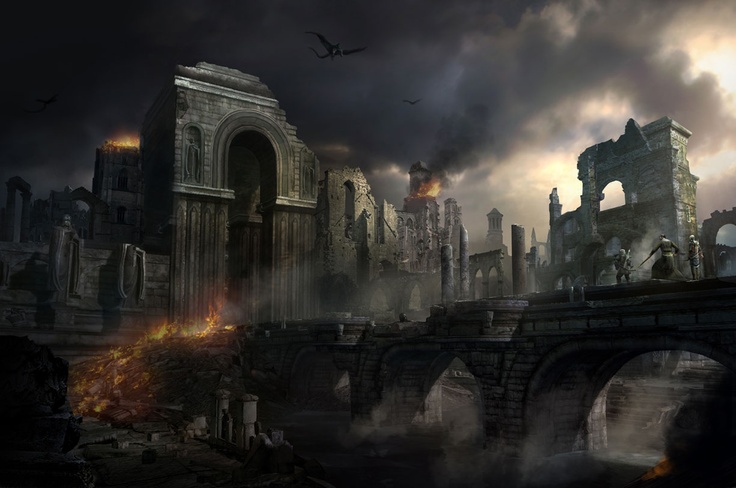 Средиземья. Статус-кво многих сущностей был восстановлен или даже радикально изменен спустя столетия. Не только тысячелетнему владычеству Саурона был положен конец, но отношения народов и рас были переопределены. Также примечательно, что во время войны многие личности погибли (Денетор, Теоден, Бранд, Дейн) и оставили своих потомков в последствии.
Средиземья. Статус-кво многих сущностей был восстановлен или даже радикально изменен спустя столетия. Не только тысячелетнему владычеству Саурона был положен конец, но отношения народов и рас были переопределены. Также примечательно, что во время войны многие личности погибли (Денетор, Теоден, Бранд, Дейн) и оставили своих потомков в последствии.
Главным результатом войны, однако, стало то, что с разрушением Единого Кольца Три Кольца, которые поддерживали владения эльфов в Средиземье, потеряли свою власть, и эльфы начали уходить в Бессмертные Земли; Значимые эльфы, которые отмечали историю Западных земель на протяжении тысячелетий, такие как Галадриэль и Элронд, ушли, подготовив почву для Доминиона Людей.
Политическая[править]
Падение Саурона принесло восстановление долгожданного рода королей Гондора, восстановление Арнора и одновременно воссоединение двух королевств; после столетий кочевых скитаний у рейнджеров Севера снова появилось королевство, а у гондорцев появился король.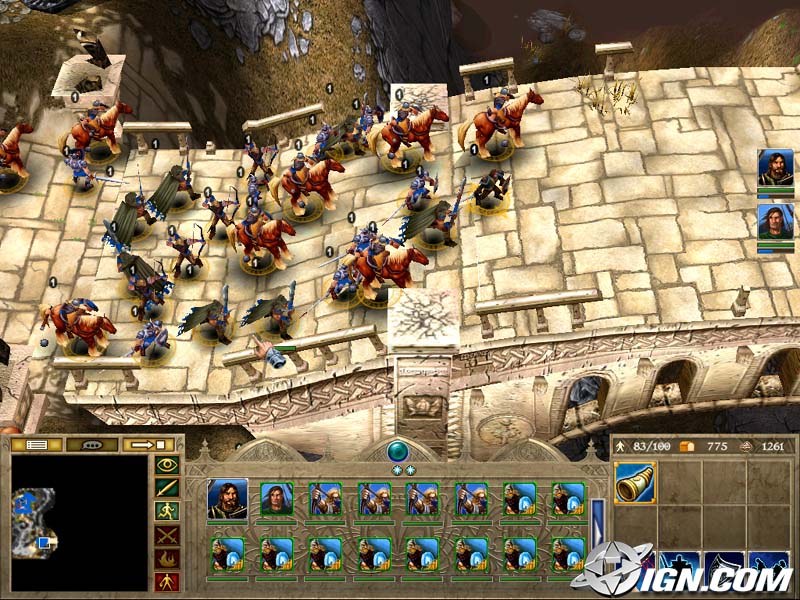 Этим королем был Арагорн II, потомок Исилдура и Анариона; кроме того, его брак с Арвен воссоединил линии Элронда и Эльроса с Первой Эпохи.
Этим королем был Арагорн II, потомок Исилдура и Анариона; кроме того, его брак с Арвен воссоединил линии Элронда и Эльроса с Первой Эпохи.
Воссоединенное Королевство
Другими политическими последствиями стали укрепление отношений между Королевством и Роханом, новые отношения с энтами (теперь оккупировавшими Тригарт, бывший Изенгард), возами и хоббитами, теперь известными как свободные народы. На эльфийский Новый год Келеборн и Трандуил переименовали Лихолесье в Эрин Ласгален, а Келеборн занял южную часть под Восточной бухтой, назвав ее Восточным Лориэном. Широкий лес между ними был отдан Беорнингам и Дровосекам.
Календарное воздействие
Все вышеперечисленные события заставили историков отметить годы после Войны как конец Третьей Эпохи.
Другим изменением календаря стало Новое Исчисление, которое заменило Исчисление Стюардов, и введение Кормары , праздника 25 марта, посвященного падению Саурона.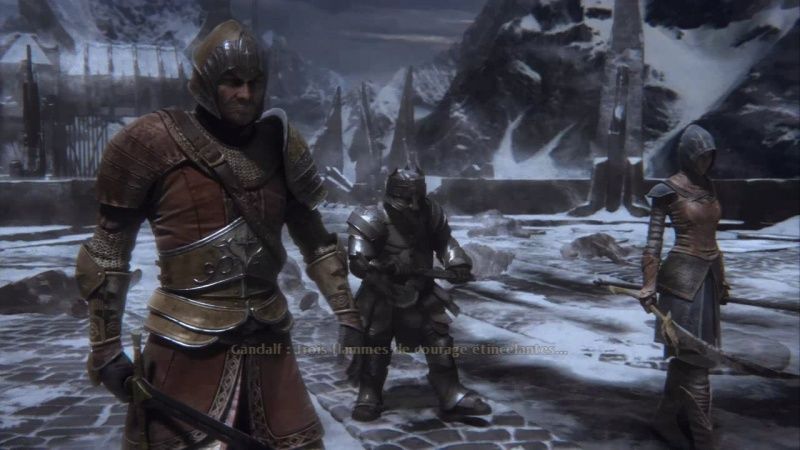 [24]
[24]
Комбатанты[править]
Свободные Народы[править]
- Гондор
- Минас Тирит
- Денетор II †
- Боромир †
- Фарамир
- Высокий Хурин
- Дол Амрот
- Имрахил
- Лебеннин
- Лоссарнах
- Форлонг Толстый †
- Рингло Вейл
- Дерворин †
- Мортонд
- Дуинхир
- Дуйлин †
- Деруфин †
- Анфалас
- Голасгил
- Ламедон
- Ангбор Бесстрашный
- Корабельщики Этира Андуина
- Пиннат Гелин
- Хирлуин Прекрасный †
- Люди гор
- Король Мертвых †
- Минас Тирит
- Рейнджеры Севера
- Арагорн II
- Grey Company (с Элладаном и Элрохиром)
- Хальбарад †
- Рохан
- Теоден †
- Теодред †
- Эомер
- Эовин
- Эркенбранд
- Эльфхелм
- Гримбольд †
- Лесное Царство
- Трандуил
- Леголас
- Лотлориэн
- Знаменитый
- Галадриэль
- Шир
- Хоббитон
- Фродо Бэггинс
- Сэмуайз Гэмджи
- Тукленд
- Перегрин Тук
- Бакленд
- Мериадок Брендибак
- Хоббитон
- Лес Фангорн
- Древобород
- Quickbeam
- Истари
- Гэндальф
- Королевство под горой
- Даин II Железноногий †
- Торин III Каменный Шлем
- Гимли
- Дейл
- Марка †
- Бард II
Саурон и его миньоны
- Саурон †
- Пасть Саурона
- Король-Чародей Ангмара †
- другие 6 Назгул †
- Саруман †
- Грима Гнилоуст †
- вождь с Черной Змеей на знамени †
- Кхамул †
- другой Назгул в качестве посланника †
Некомбатанты[править]
- Эльфийский мир
- Ривенделл
- Элронд
- Глорфиндель
- Серые Гавани
- Кирдан
- Галдор из Гавани
- Ривенделл
- Истари
- Радагаст
- Друэдайн
- Ган-бури-Ган
Ссылки
- ↑ «Девять [Саурон] собрались к себе; также и Семь, иначе они будут уничтожены».
 Дж.Р.Р. Толкин, Властелин колец , Братство Кольца , «Тень прошлого»
Дж.Р.Р. Толкин, Властелин колец , Братство Кольца , «Тень прошлого» - ↑ «Ты видел Око того, кто держит Семь и Девять».
- ↑ Дж.Р.Р. Толкин, Кристофер Толкин (редактор), Неоконченные сказки , «В поисках Эребора»
- ↑ Дж.Р.Р. Толкин, Хоббит , «Загадки во тьме»
- ↑ Дж.Р.Р. Толкин, Кристофер Толкин (ред.), Народы Средиземья , «XIII. Последние писания»
- ↑ Дж.Р.Р. Толкин, Властелин колец , Приложение B, «Третья Эпоха»
- ↑ 7,0 7,1 7,2 7,3 7,4 Дж.Р.Р. Толкин, Кристофер Толкин (ред.), Неоконченные истории , «Охота за кольцом»
- ↑ 8,0 8,1 8,2 Д.Р.Р. Толкин, Властелин колец , Братство Кольца , «Совет Элронда»
- ↑ 9.00 9.01 9.02 9.03 9.04 9.05 9.
 06 9.07 9.08 9.09 9.10 9.11 J.R.R. Толкин, Властелин колец , Приложение B, «Великие годы»
06 9.07 9.08 9.09 9.10 9.11 J.R.R. Толкин, Властелин колец , Приложение B, «Великие годы» - ↑ Дж.Р.Р. Толкин, Властелин колец , Братство Кольца , «Бродяжник»
- ↑ 11,0 11,1 Дж.Р.Р. Толкин, Кристофер Толкин (редактор), Неоконченные истории , «Битвы у бродов Айзена»
- ↑ Дж.Р.Р. Толкин, Властелин колец , Братство Кольца , «Разрыв Братства»
- ↑ Дж.Р.Р. Толкин, Властелин колец , Две башни , «Всадники Рохана»
- ↑ 14,0 14,1 Дж.Р.Р. Толкин, Властелин колец , Две крепости , «Хельмова Падь»
- ↑ Дж.Р.Р. Толкин, Властелин колец , Две башни , «Обломки и обломки»
- ↑ Дж.Р.Р. Толкин, Властелин колец , Две башни , «Палантир»
- ↑ Дж.Р.Р. Толкин, Властелин колец , Возвращение короля , «Уход Серого Отряда»
- ↑ 18,0 18,1 18,2 18,3 18,4 Д.
 Р.Р. Толкин, Властелин колец , Возвращение короля , «Осада Гондора»
Р.Р. Толкин, Властелин колец , Возвращение короля , «Осада Гондора» - ↑ 19,0 19,1 Дж.Р.Р. Толкин, Властелин колец , Возвращение короля , «Последние дебаты»
- ↑ Дж.Р.Р. Толкин, Властелин колец , Возвращение короля , «Роковая гора»
- ↑ Дж.Р.Р. Толкин, Властелин колец , Возвращение короля , «Дорога домой»
- ↑ 22,0 22.1 22.2 Дж.Р.Р. Толкин, Властелин колец , Возвращение короля , «Очищение Шира»
- ↑ Дж.Р.Р. Толкин, Властелин колец , Приложение B, «Главные дни от падения Барад-дура до конца Третьей эпохи»
- ↑ Дж.Р.Р. Толкин, Властелин колец , Приложение D, «Календари»
Обзор настольной игры «Война кольца» — Meeple Mountain
«Война кольца» — эпическая стратегическая игра, воссоздающая трилогию «Властелин колец». Получите полное представление о Третьей Эпохе Толкина в нашем обзоре War of the Ring: 2nd Edition от Ares Games.
«Властелин колец» — одна из крупнейших франшиз отсюда и до Туманных гор, с пятью книгами значительного размера, шестью фильмами еще большего размера, грядущим телесериалом, который наверняка будет иметь определенное значение, и многочисленными поколения влияния в мире «высокого фэнтези». Когда я услышал, что существует настольная игра, описываемая как «Толкин в коробке», я понял, что в ней есть довольно большие башмаки размером с хоббита. (Если бы хоббиты носили обувь.) Парит ли «Война кольца», как Великие орлы, и захватывает ли она эпическую борьбу между добром и злом? Он разбивается и горит в огне Роковой Горы? Или он приземляется где-то в Средиземье? Читайте наш обзор «Войны кольца», 2-е издание.
Война Кольца — это игра о контроле территории, «войсках на карте», игре в кости, скрытом перемещении, управлении руками и своевременном розыгрыше карт. Если это звучит для вас как много, то это потому, что так оно и есть. Эта игра масштабна не только по своим масштабам, но и по размеру. У меня есть приличного размера игровой стол, и он занимает большую часть его. Как и в любой уважающей себя грандиозной игре, в ней есть множество пластиковых миниатюр, которые можно перетасовывать, а также пользовательские скульптуры для главных персонажей, таких как Фродо, Леголас, Гимли и всех других выдуманных слов, которые называют себя именами.
У меня есть приличного размера игровой стол, и он занимает большую часть его. Как и в любой уважающей себя грандиозной игре, в ней есть множество пластиковых миниатюр, которые можно перетасовывать, а также пользовательские скульптуры для главных персонажей, таких как Фродо, Леголас, Гимли и всех других выдуманных слов, которые называют себя именами.
Как главный сторонник грандиозного игрового процесса в Meeple Mountain, слово «эпический» не то слово, которое я бросаю легкомысленно. Однако эта игра, безусловно, заслуживает такого прозвища. Игра легко займет до трех часов, не считая довольно интенсивной настройки и разборки. Это одна из тех игр-событий, на которые вам придется выделить значительную часть своего дня. В конце концов, в игру «Война Кольца» просто так не зайти.
Великая битва нашего времени : На первый взгляд Война Кольца выглядит как военная игра. В нем есть все атрибуты традиционной военной игры, которые вы ожидаете: армии, перемещающиеся по карте, пересекающие определенные территории, атакующие и защищающие города, города и крепости. Однако называть «Войну кольца» просто военной игрой так же легкомысленно, как называть «Битлз» «этими британскими парнями». Технически это правда, но, как и в случае с ливерпульской четверкой, это гораздо больше. В «Войне кольца» много чего происходит, поэтому я просто направлю своего внутреннего Пола Маккартни и попытаюсь взять высокие ноты.
Однако называть «Войну кольца» просто военной игрой так же легкомысленно, как называть «Битлз» «этими британскими парнями». Технически это правда, но, как и в случае с ливерпульской четверкой, это гораздо больше. В «Войне кольца» много чего происходит, поэтому я просто направлю своего внутреннего Пола Маккартни и попытаюсь взять высокие ноты.
«Война Войны Кольца» — это асимметричная игра для двух игроков, в которой один человек управляет злыми силами Саурона, называемыми Тенью, а другой играет за Свободные Народы — «добрую сторону», говоря языком повествования. Хотя технически существуют правила многопользовательской игры, такие как вызов пещерного тролля на соревнование по армрестлингу, я настоятельно не рекомендую этого делать.
Как победить: война против воли
Любая из сторон может победить благодаря военной победе. В конце раунда Игрок-Тень (SP) должен контролировать достаточное количество поселений своего противника (города или крепости), чтобы набрать 10 очков, в то время как Свободным народам (FP) нужно удерживать только 4 очка. Резкая разница в стоимости обусловлена прежде всего двумя факторами: СП стартует с чудовищно большим количеством сил. Кроме того, когда SP теряет юниты в битве, они возвращаются в резерв и могут быть возвращены в будущих ходах — вы всегда можете создать больше орков. Когда подразделения FP умирают, они уходят навсегда, затерянные в анналах времени.
Резкая разница в стоимости обусловлена прежде всего двумя факторами: СП стартует с чудовищно большим количеством сил. Кроме того, когда SP теряет юниты в битве, они возвращаются в резерв и могут быть возвращены в будущих ходах — вы всегда можете создать больше орков. Когда подразделения FP умирают, они уходят навсегда, затерянные в анналах времени.
Второе условие победы включает в себя более канонический элемент «одно кольцо». Если в какой-то момент Фродо достигает последней области Горы Рока, бросая кольцо в огонь, или если он становится слишком испорченным упомянутым кольцом, игра мгновенно заканчивается, и либо FP, либо SP соответственно выходят победителями.
Как играть :Каждый раунд делится на шесть фаз.
- Соберите кубики действий и возьмите две новые карты событий.
- Фаза братства: FP может объявить местонахождение братства, что позволит им потенциально активировать нацию, исцелить порчу или сменить своего проводника.

- Распределение охоты: SP может посвятить некоторое количество кубиков действия охоте на Братство.
- Бросок действия: Игроки бросают свои кубики действия. Любой результат «глаза», выпавший SP, добавляется в поле поиска.
- Разрешение действия: Это суть игры. Игроки по очереди активируют кубики, чтобы выполнить действие, указанное на лицевой стороне кубика.
- Проверка победы: если кто-либо из игроков сделал достаточно, чтобы выполнить условие военной победы, игра окончена. Если нет, промойте и повторите.
Я не собираюсь слишком углубляться в сорняки Фангорнского леса, когда дело доходит до каждого элемента, так как там ТОННА движущихся частей. Я кратко коснусь кубиков действий, поскольку они составляют основную часть игры.
Действие персонажа: Переместите армии, в которых есть лидер, переместите специальных персонажей (Компаньоны для FP, Миньоны для SP) или разыграйте карту события персонажа. FP также может использовать это действие, чтобы переместить, скрыть или разделить товарищество.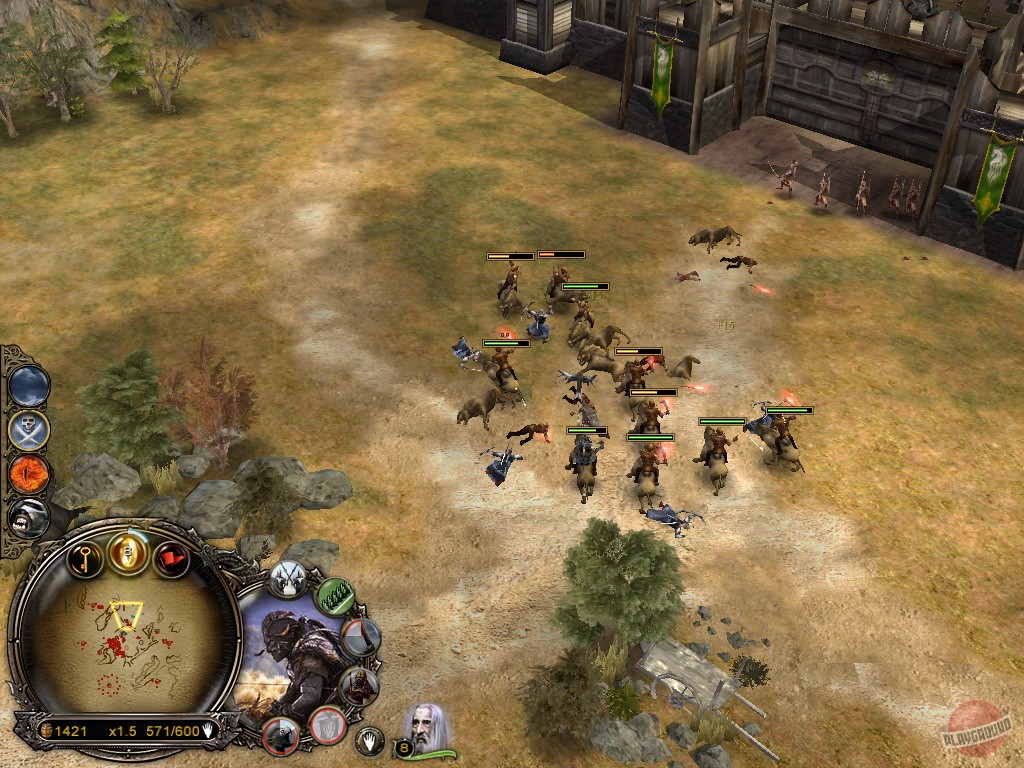
Действие армии: Переместить армии, атаковать вражескую армию или разыграть карту события «Армия»
Действие «Сбор»: Переместить одну нацию по Дипломатической дорожке (подробнее об этом позже), нанять подкрепление или разыграть карту события «Сбор»
Действие по событию : Возьмите карту события, сыграйте карту события
Специальные действия: «Воля Запада» FP — это подстановочный знак, который можно установить на любое другое лицо, а «Глаз» FP добавляется в поле охоты. . (подробнее об охоте позже)
Дополнительные ключевые понятия Карты событий: У каждого игрока есть две разные колоды карт: Стратегия и Персонаж. На каждой карте события есть символы, совпадающие с одной или несколькими гранями кубика, поэтому их можно разыгрывать либо с действием события, либо с действием, соответствующим символам на картах. Карты событий очень тематичны и обычно влекут за собой какие-то бонусные действия, хотя есть и такие, которые могут быть ситуативными или иметь продолжительный эффект.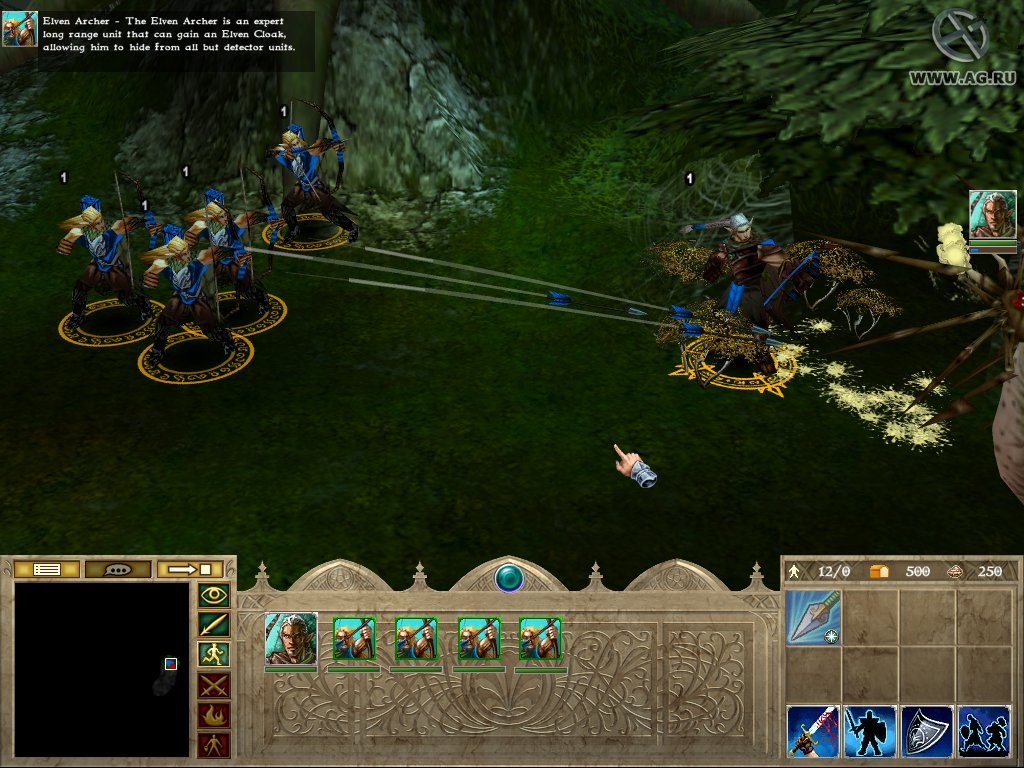 Многие из них можно использовать во время боя. Лучшее решение о том, как и когда разыгрывать карты событий, может переломить ситуацию для любой из сторон.
Многие из них можно использовать во время боя. Лучшее решение о том, как и когда разыгрывать карты событий, может переломить ситуацию для любой из сторон.
Дипломатический номер: Ответит ли Рохан, когда Гондор позовет на помощь? Приносят ли южане и истерлинги свои лодки и зверей? Все зависит от дипломатического трека. В начале игры страны начинают с разных точек на трассе, и их необходимо убедить присоединиться к драке либо с помощью вышеупомянутого действия «Сбор», либо с помощью FP, объявляющего свое местоположение в определенном городе, либо по другим ситуационным критериям по мере развития игры.
Гондор взывает о помощи. Рохан… переключился на голосовую почту. Мы пойдем на охоту Одна из сильных сторон повествования вселенной Толкиена «Властелин колец» заключается в том, что под всеми величественными позолоченными гарнизонами военного эпоса скрывается простая история о двух приятелях, отправляющихся через всю страну, чтобы вернуть некоторые драгоценности.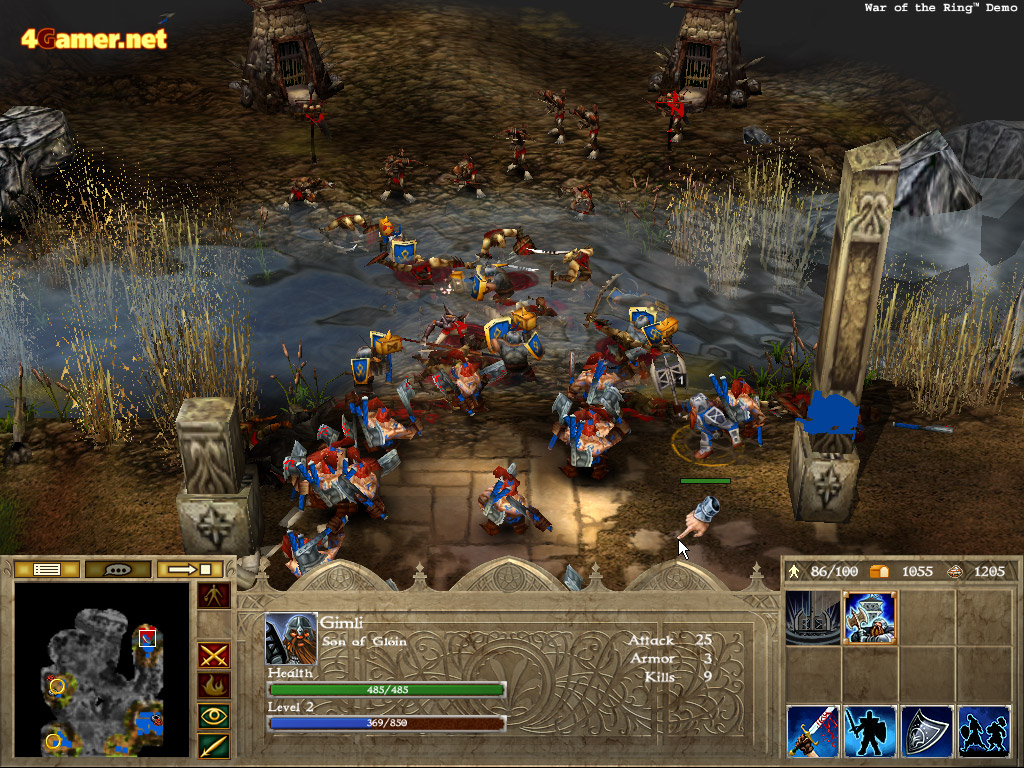 Автор никогда не упускал из виду важность «маленького парня» среди мирового хаоса, очевидно, что Фродо и Сэм, два в основном обычных деревенщины Средиземья, были главными героями. Война Кольца остается верной этому духу. Хотя навигация в международной дипломатии и управление военной мощью имеют решающее значение для выживания, мы не можем забывать, что квест по-прежнему связан с кольцом.
Автор никогда не упускал из виду важность «маленького парня» среди мирового хаоса, очевидно, что Фродо и Сэм, два в основном обычных деревенщины Средиземья, были главными героями. Война Кольца остается верной этому духу. Хотя навигация в международной дипломатии и управление военной мощью имеют решающее значение для выживания, мы не можем забывать, что квест по-прежнему связан с кольцом.
Это прекрасно подчеркивается в «Войне Кольца» игровой механикой перемещения Братства. Хотя канонически мы знаем, что вечеринка начинается в Ривенделле, путешествие, которое предпринимает Братство, в основном держится в секрете. Это достигается за счет очень умного набора механики.
Во время фазы «Разрешение действия» FP может потратить один из своих результатов кубика «Действие персонажа», чтобы переместить Братство, представляя это перемещением Трека Братства на одно деление вверх. Миниатюра, представляющая братство, не перемещается со своего нынешнего места, мы просто знаем, что она переместилась на одно место. Каждый раз, когда раскрывается Братство, по выбору или в результате, они перемещают свою фигурку на количество делений по шкале Братства, а затем сбрасывают эту шкалу обратно на ноль.
Каждый раз, когда раскрывается Братство, по выбору или в результате, они перемещают свою фигурку на количество делений по шкале Братства, а затем сбрасывают эту шкалу обратно на ноль.
Каждый раз, когда Братство перемещается, начинается «Охота за Кольцом», когда SP бросает несколько кубиков, пытаясь их поймать. Количество кубиков, или «Уровень охоты», равно тому, сколько кубиков действия SP находится в настоящее время в «Ячейке охоты», включая любые результаты «глаза», выпавшие , и любых кубиков, специально выделенных в фазе «Распределение охоты» 3. Если SP выбрасывает хотя бы одну «6», охота успешна и случаются плохие вещи. (подробнее об этом позже)
Вот где интеграция темы и механики действительно сияет. FP может перемещать Братство столько раз, сколько у них есть кубиков Действия Персонажа, но это становится более рискованным, потому что каждый кубик, который они используют для перемещения, равен 9.0007 добавил в Hunt Box SP. Каждый из кубиков FP в охотничьем пуле снижает требование к попаданию на один пункт.
Таким образом, если FP решит переместить Братство во второй раз за раунд, то ПЛ должен будет выбросить только «5» во второй раз, чтобы добиться успеха. Идти в третий раз, например, нанять Голлума в качестве су-шефа, еще более рискованно.
Тартар из тунца так не приготовишь.Принять решение о том, стоит ли риск вознаграждения, чертовски сложно. Так что же произойдет, если охота за SP пройдет успешно? Затем SP берет плитку из набора неприятных жетонов лицевой стороной вниз в охотничьем пуле, чтобы определить, какой ущерб нанесен Братству.
Некоторые события добавляют еще больше неприятностей в стек.Затем FP должен справиться с этим уроном одним из двух способов:
Уменьшить количество урона, «приняв на себя потери» — да, буквально пожертвовав членом Братства. (RIP, Боромир). Кроме того, если общий урон превышает силу этого персонажа, оставшийся урон должен быть получен либо следующим участником, либо в виде порчи. (описано ниже)
Я Шон Бин. Это был лишь вопрос времени.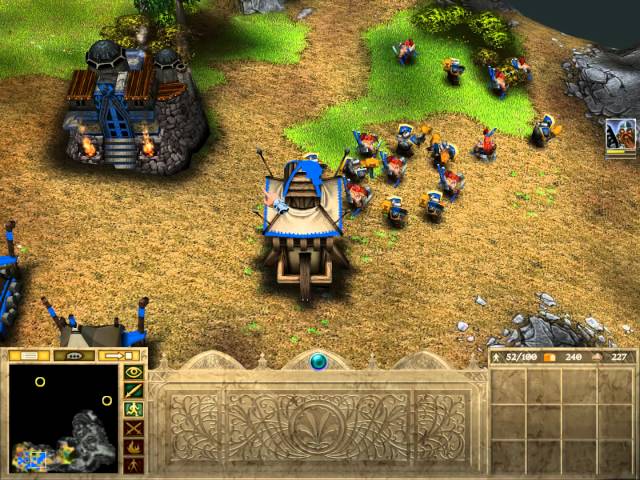
В качестве альтернативы, вместо того, чтобы получать урон персонажу, FP может использовать «одно кольцо», чтобы сбежать. Обратной стороной этого тайного побега является то, что Фродо затем берет на себя порчу, перемещая жетон порчи вверх по шкале Братства. Если в какой-то момент эта дорожка достигает 12 очков коррупции, SP немедленно побеждает. 12 очков коррупции — это не так уж и много, учитывая, что один жетон может нанести вам целых три очка урона. Смягчение и управление уровнем коррупции в Братстве — это деликатный акт натянутого каната, или, если хотите, он «балансирует на лезвии ножа». Отклонись хоть немного, и оно потерпит неудачу, к гибели всех».
Восемь из двенадцати порчи — опасный переход на темную сторону. Есть много других правил, о которых я мог бы рассказать, в том числе о нюансах боя, осадных работах, конкретных юнитах, игре в карты и т. д., но ради экономии времени я этого делать не буду. Достаточно сказать, что в этой игре есть много взаимодействующих элементов, которые заставят вас балансировать несколько вращающихся пластин, танцуя джигу на столах Гарцующего пони с «да, это приходит в пинтах» как стратегии, так и тактики.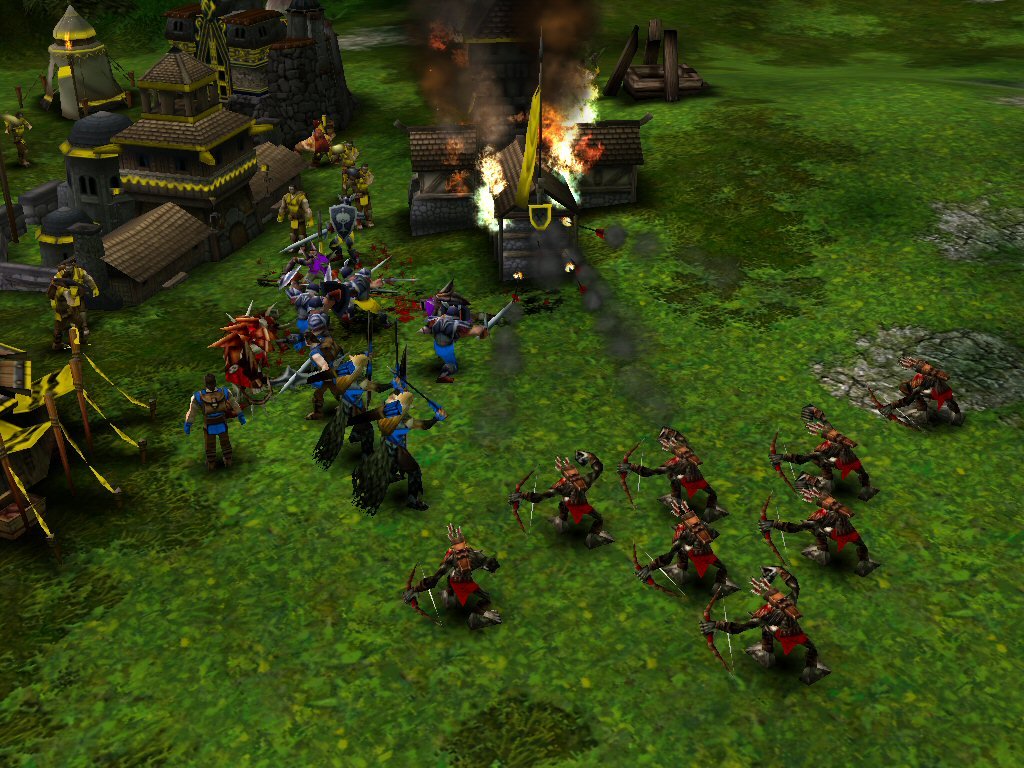
Мудрые говорят только о том, что знают – Заключительные мысли
«Войну кольца» часто называют «Властелином колец в коробке». Как большой поклонник «Звездных войн: Восстание» — еще одной такой игры «франшиза в коробке» — мне не терпелось узнать, будет ли «Война кольца» соответствовать названию. Я счастлив сообщить, что, клянусь Галадриэлью, это произошло. Мне казалось, что я разыгрываю трилогию «Властелин колец». Будь то штурм Черных врат с Арагорном и его компанией, выслеживание хоббитов с Королём-Чародеем верхом на его могучем Назгуле или ведение хоббитов в Изенгард, каждая часть этой игры ощущается как Властелин колец. Примерно за то время, которое потребуется для просмотра одного из фильмов, вы почувствуете, что наелись Средиземья на второй завтрак.
Упомяну одного олифанта размером с осадную башню в комнате: элемент случайности. В мире настольных игр я обнаружил, что есть два вида случайности: входная случайность и выходная случайность. Проще говоря, входная случайность определяет ваши варианты, а выходная случайность определяет ваши результаты. В «Войне кольца» есть и то, и другое на приличном уровне. Например, кубики действия, которые вы бросаете в начале каждого раунда, демонстрируют случайность ввода. Вы ограничены выпавшими вариантами, хотя тот факт, что грани кубика можно использовать несколькими способами, а также тот факт, что у Свободных людей есть дикий кубик, немного смягчает это. Однако, если не считать некоторой потенциальной игры в карты, очень мало смягчается выходная случайность ключевых элементов, таких как вытягивание жетонов охоты, боевые броски и вытягивание карт. Для меня этот элемент неизвестности делает его тематичным и запоминающимся. Иногда, вопреки всему, небольшой отряд роханцев в Хельмовой Пади может отразить волны атакующих Урук-Хая. Но я могу понять, как другие геймеры, предпочитающие стратегическое, а не тактическое, могут найти это разочарованием.
В «Войне кольца» есть и то, и другое на приличном уровне. Например, кубики действия, которые вы бросаете в начале каждого раунда, демонстрируют случайность ввода. Вы ограничены выпавшими вариантами, хотя тот факт, что грани кубика можно использовать несколькими способами, а также тот факт, что у Свободных людей есть дикий кубик, немного смягчает это. Однако, если не считать некоторой потенциальной игры в карты, очень мало смягчается выходная случайность ключевых элементов, таких как вытягивание жетонов охоты, боевые броски и вытягивание карт. Для меня этот элемент неизвестности делает его тематичным и запоминающимся. Иногда, вопреки всему, небольшой отряд роханцев в Хельмовой Пади может отразить волны атакующих Урук-Хая. Но я могу понять, как другие геймеры, предпочитающие стратегическое, а не тактическое, могут найти это разочарованием.
В целом, «Война кольца» — просто шедевр. Выборы восхитительно мучительны, битвы незабываемы, а карточная игра умна. Играть за Shadow Player или за Free Peoples одинаково приятно. Это игра с фантастическим дизайном, которая так же богата темой, как Смауг. Каждая карта и способность персонажа имеют тематический смысл. Гэндальф может провести Братство через шахты Мории, Страйдер может покинуть Братство, чтобы повысить уровень и стать Арагорном, Боромир может быть героически принесён в жертву, чтобы спасти хоббитов от повреждений. Все, что вы хотели бы сделать в игре «Властелин колец», кроме выяснения того, что было в этой трубке, вы можете сделать. Единственное незначительное замечание, которое я хотел бы иметь с игрой, касается некоторых проблем с качеством производства. Миниатюры не самого высокого качества, а некоторые жетоны бывает сложно разобрать с первого взгляда, но даже это легко простительно, учитывая невероятный размах и размер игры в целом.
Это игра с фантастическим дизайном, которая так же богата темой, как Смауг. Каждая карта и способность персонажа имеют тематический смысл. Гэндальф может провести Братство через шахты Мории, Страйдер может покинуть Братство, чтобы повысить уровень и стать Арагорном, Боромир может быть героически принесён в жертву, чтобы спасти хоббитов от повреждений. Все, что вы хотели бы сделать в игре «Властелин колец», кроме выяснения того, что было в этой трубке, вы можете сделать. Единственное незначительное замечание, которое я хотел бы иметь с игрой, касается некоторых проблем с качеством производства. Миниатюры не самого высокого качества, а некоторые жетоны бывает сложно разобрать с первого взгляда, но даже это легко простительно, учитывая невероятный размах и размер игры в целом.
После пары сыгранных «Войн Кольца» он, как Тенегрив, ворвался прямо в пантеон «игр, в которые я играю нечасто, но никогда не покину свою коллекцию», наряду с такими хитами, как «Звездные войны: Восстание», Twilight Imperium: Fourth Edition и Star Trek: Ascendancy. Это потрясающая игра, которую я бы порекомендовал всем поклонникам «Властелина колец» или просто эпических игровых впечатлений в целом. Если действительно «все, что нам нужно решить, это что делать со временем, которое нам дано», то дайте мне еще три-четыре часа, и я буду играть в «Войну Кольца»: в любое время и в любом месте, кроме логова Шелоб. Это легко 10/10.
Это потрясающая игра, которую я бы порекомендовал всем поклонникам «Властелина колец» или просто эпических игровых впечатлений в целом. Если действительно «все, что нам нужно решить, это что делать со временем, которое нам дано», то дайте мне еще три-четыре часа, и я буду играть в «Войну Кольца»: в любое время и в любом месте, кроме логова Шелоб. Это легко 10/10.
Война Кольца: подробности второго издания
- Дизайнер: Франческо Непителло, Марко Магги, Роберто Ди Мелио
- Художники: Фабио Майорана, Джон Хоу
- Издатели: Angry Lion Games, Ares Games, Devir, GaGa Games, Galakta, Geekach Games, Heidelberger Spieleverlag, Nuts! Публикация, Planplay, Red Glove, Sophisticated Games, Zhiyanjia
- Дата выпуска: 2012 г.
- Количество игроков: 2 — 4
- Возрастной диапазон: 13+
- Диапазон времени: 150–180 минут
- Механизм(ы): Составление действий, Преобладание территории/Влияние, Движение по области, Управление кампанией/боевыми картами, Разрешение конфликтов при игре в карты, Бросание костей, События, Управление руками, Скрытое движение, Очки движения, Симуляция, Командная игра, Переменная настройка
- Другие статьи о Войне Кольца: второе издание.

Властелин колец: Война на Севере
- Экшен и ролевая игра
- Интенсивный, интуитивно понятный и захватывающий бой. Богатое, многослойное и впечатляющее развитие персонажа. В «Войне на Севере» вы получаете и то, и другое. Сражайтесь с жестокими реалиями Войны Кольца, настраивая нового персонажа во вселенной, созданной Толкином. Погрузитесь и оставьте свой след в Средиземье.
- Совместная игра в ее ядре
- Средиземье слишком жестоко, чтобы один человек мог выжить. Воспользуйтесь сильными сторонами уникальных расовых способностей каждого персонажа и создайте собственное братство трех героев, чтобы противостоять растущей армии на Севере. Вы должны сражаться вместе, иначе вы умрете в одиночку.
- Нерассказанная история
- В то время как большое внимание и внимание уделяется путешествию Кольца Всевластия, нападение на Средиземье поражает все уголки карты. Война на Севере обращает наше внимание на неотъемлемую часть сюжетной линии, основанную на деталях из закоулков и различных приложений.

«Властелин колец: Война на Севере» — это кооперативная ролевая игра, в которой вы и ваши друзья погружаетесь в новую жестокую главу Войны Кольца. Черпая вдохновение из литературных и кинематографических прав на мир «Властелина колец», игроки прольют кровь своими топорами на самых разных смертоносных врагов и путешествуют как по уже известным, так и по невиданным ранее локациям. Результатом является путешествие, одновременно эпическое и интимное, знакомое, но неожиданное.
| Код продукта | 521699 | ||
|---|---|---|---|
| Жанр | РПГ | NO | |
| Модель/Поставщик Часть | ESD-IMP-W2526 | ||
| Только на Gamestop | NO | ||
| название бренда | Warner Bros. Intercaite Entertainment | 40004название бренда | Warner Bros. Intercaite Entertainment Intercaite Entertainment |
| . Игры | |||
| Franchise | The Lord of the Rings |
Base Properties
| Genre | RPG |
|---|
System Requirements
| Скачать Требуется клиент | Steam |
|---|
Даты
| Предзаказ? | No |
|---|
General
| Model/Vendor Part | ESD-IMP-W2526 |
|---|---|
| Only at GameStop | No |
Fandom
| Торговая марка | Warner Bros. Interactive Entertainment Interactive Entertainment |
|---|---|
| Имя разработчика | WB Games |
| Franchise | The Lord of the Rings |
Ratings & Reviews
4.9
Star FilledStar FilledStar FilledStar FilledStar Three Quarter Filledrated 4.9 out of 5
19 product ratings
5 звезд
1717 5 звезд отзывы
4 звезды отзывы
22 4 звезды
3 звезды
00 3 звезды отзывы
2 звезды
00 2 звезды отзывы
1 звезды
00 1 звезды отзывы
Купили этот товар?
Поделитесь своей мыслью с сообществом
Лучшие отзывы клиентов
Pros and Cons
Звездный заполненный заполненный Star заполненные заполненные./pic725882.jpg) Дает новый аспект знаниям. Мой единственный недостаток в том, что вы не можете переключать персонажей во время кампании.
Дает новый аспект знаниям. Мой единственный недостаток в том, что вы не можете переключать персонажей во время кампании.Был ли этот отзыв полезен?
a
Star FilledStar FilledStar FilledStar FilledStar Outlinedрейтинг 4.0 из 5
abce123
Проверенный покупатель
11 месяцев назад
Есть еще некоторые ошибки. Но это весело, и мне нужно только время от времени сбрасывать игру. И сброс всегда лечит. Красивая игра с отличной озвучкой.
Был ли этот отзыв полезен?
Достойная игра для фанатов LOTR
Star FilledStar FilledStar FilledStar FilledStar Filledс рейтингом 5,0 из 5
Lilturd
Проверенный покупатель
2 года назад
Забавная игра, в которую можно играть с другом/друзьями онлайн или в одиночку (но это немного сложнее), а также имеет ценность для повторного прохождения. Более сложные режимы выполнимы.
Более сложные режимы выполнимы.
Был ли этот отзыв полезен?
Властелин колец: Война на Севере
Заполнено звездамиЗаполнено звездамиЗаполнено звездамиЗаполнено звездамиЗаполнено звездамирейтинг 5.0 из 5
Покупатель
2 года назад
Очень рад, что нашел это здесь. Давно отказался от обратной совместимости с Xbox. Наткнулся на это и не возлагал больших надежд. Запускаем Windows 10 на Razer Blade 15 Base и не можем быть счастливее! Получите это, пока можете! Супер весело и недооценено!
Был ли этот отзыв полезен?
Это все еще здесь?
Star FilledStar FilledStar FilledStar FilledStar Filledрейтинг 5.0 из 5
Purple_WineTales
2 года назад
Если еще не купили, КУПИТЕ! Это одна из тех редких кооперативных игр, которая попадает в самую точку.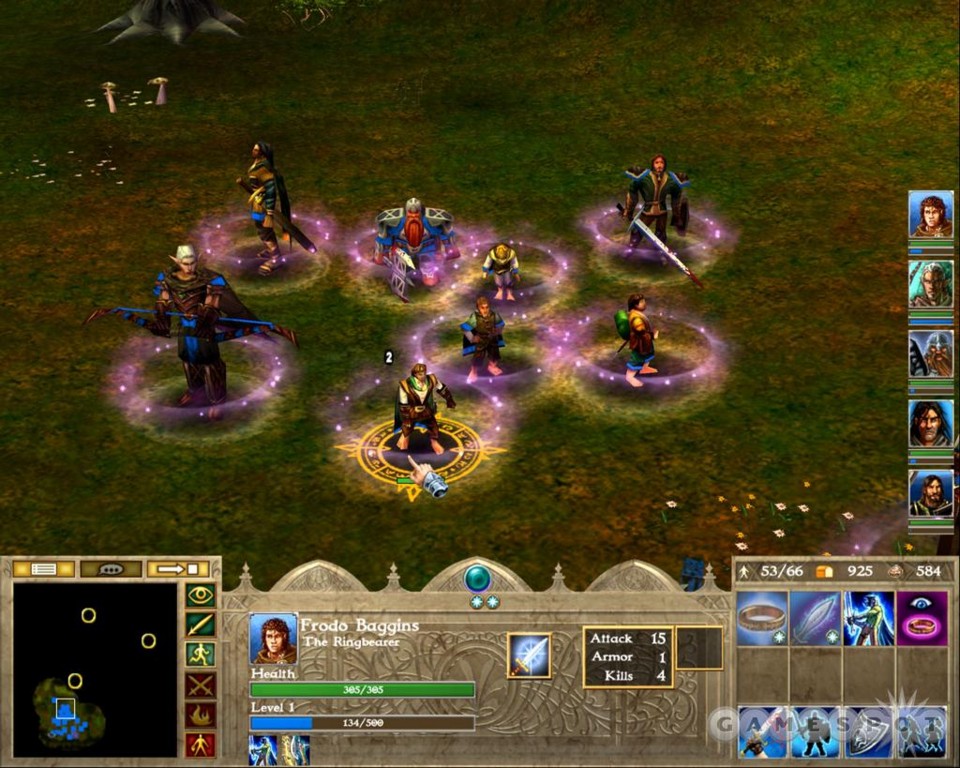 Помимо редкости, это отличная игра!
Помимо редкости, это отличная игра!
Был ли этот отзыв полезен?
Просмотреть все отзывы клиентов
Вопросы и ответы
5
вопрос клиента
s
Есть вопрос? Задайте свой вопрос нашему сообществу.
Самые популярные вопросы
Q
:
Ключ Steam все еще работает для этих загрузок, хотя он больше не продается в Steam?
Navi8151 год назад
A
:
Да, я купил игру несколько месяцев назад, вы получаете код, и вам просто нужно активировать его, как и любую другую игру
R0wan1 год назад
Был ли этот ответ полезен ?
Q
:
Если это было удалено из Steam, могу ли я все еще купить это и играть?
BDHousley1 год назад
A
:
Да, он был удален с торговой площадки Steam, однако любые купленные вами ключи и продукты вы все равно можете добавить в свою библиотеку Steam и играть. Мультиплеер тоже работает.
Мультиплеер тоже работает.
PsychoTaco3331 год назад
Был ли этот ответ полезен?
Q
:
Если у меня нет дисковода на ноутбуке, могу ли я получить это? idk, если он продается как просто код ключа или установочный диск
FxHawk15677 месяцев назад
A
:
Это цифровая версия игры, поэтому вы получите код для загрузки игры, а не диск .
TC GamesStop SMRT7 месяцев назад
Был ли этот ответ полезен?
Q
:
Есть ли у этого ключа Steam региональная блокировка? потому что моя учетная запись Steam находится в европейском регионе.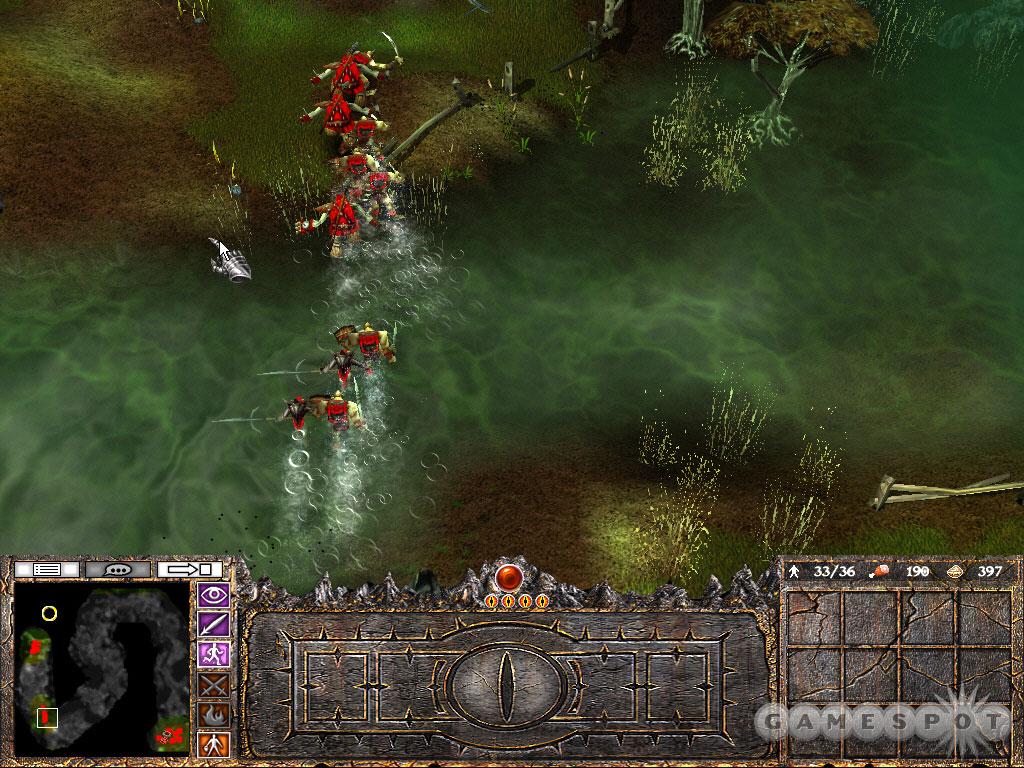

/pic475251.jpg) 1 Gandalf’s role
1 Gandalf’s role VIII The War of the Ring, pg. 249, «…somewhat short of ten thousand but in that count I reckon only men well-horsed, fully armed…As many again there are on foot…»
VIII The War of the Ring, pg. 249, «…somewhat short of ten thousand but in that count I reckon only men well-horsed, fully armed…As many again there are on foot…»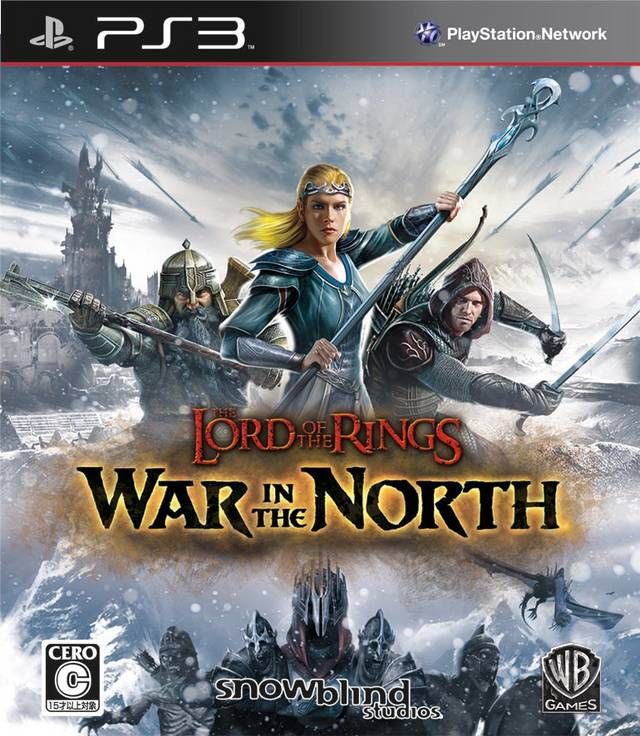 1 Gandalf’s role
1 Gandalf’s role VIII The War of the Ring, pg. 249, «…somewhat short of ten thousand but in that count I reckon only men well-horsed, fully armed…As many again there are on foot…»
VIII The War of the Ring, pg. 249, «…somewhat short of ten thousand but in that count I reckon only men well-horsed, fully armed…As many again there are on foot…»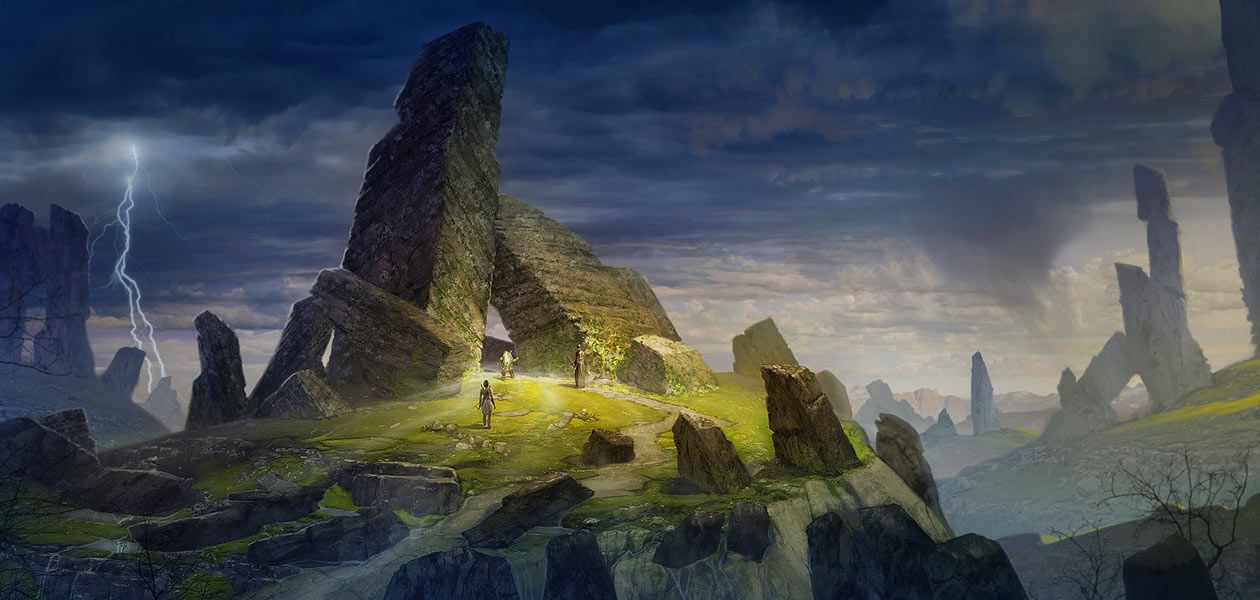 1 Gandalf’s role
1 Gandalf’s role VIII The War of the Ring, pg. 249, «…somewhat short of ten thousand but in that count I reckon only men well-horsed, fully armed…As many again there are on foot…»
VIII The War of the Ring, pg. 249, «…somewhat short of ten thousand but in that count I reckon only men well-horsed, fully armed…As many again there are on foot…» Дж.Р.Р. Толкин, Властелин колец , Братство Кольца , «Тень прошлого»
Дж.Р.Р. Толкин, Властелин колец , Братство Кольца , «Тень прошлого»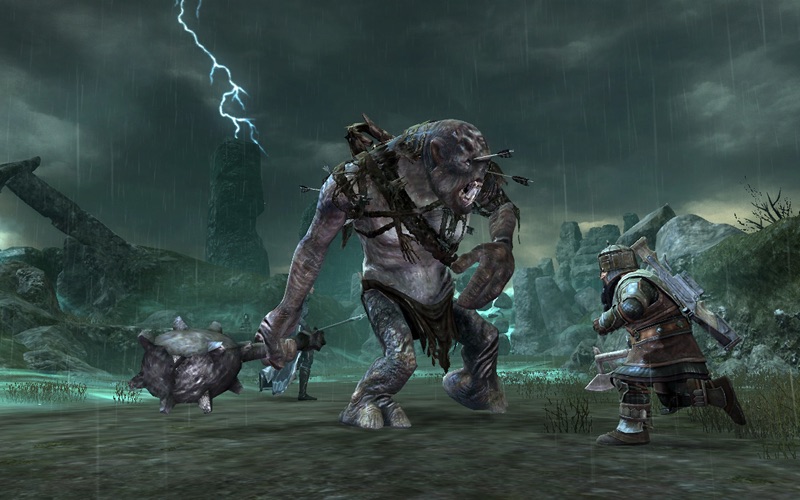 06 9.07 9.08 9.09 9.10 9.11 J.R.R. Толкин, Властелин колец , Приложение B, «Великие годы»
06 9.07 9.08 9.09 9.10 9.11 J.R.R. Толкин, Властелин колец , Приложение B, «Великие годы»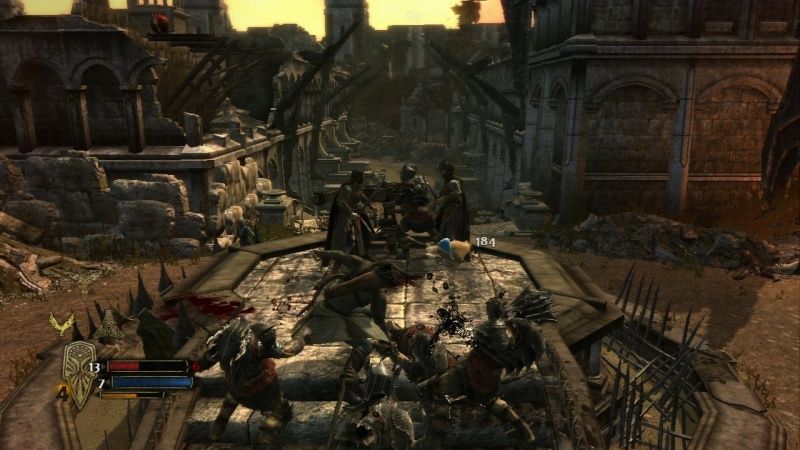 Р.Р. Толкин, Властелин колец , Возвращение короля , «Осада Гондора»
Р.Р. Толкин, Властелин колец , Возвращение короля , «Осада Гондора»